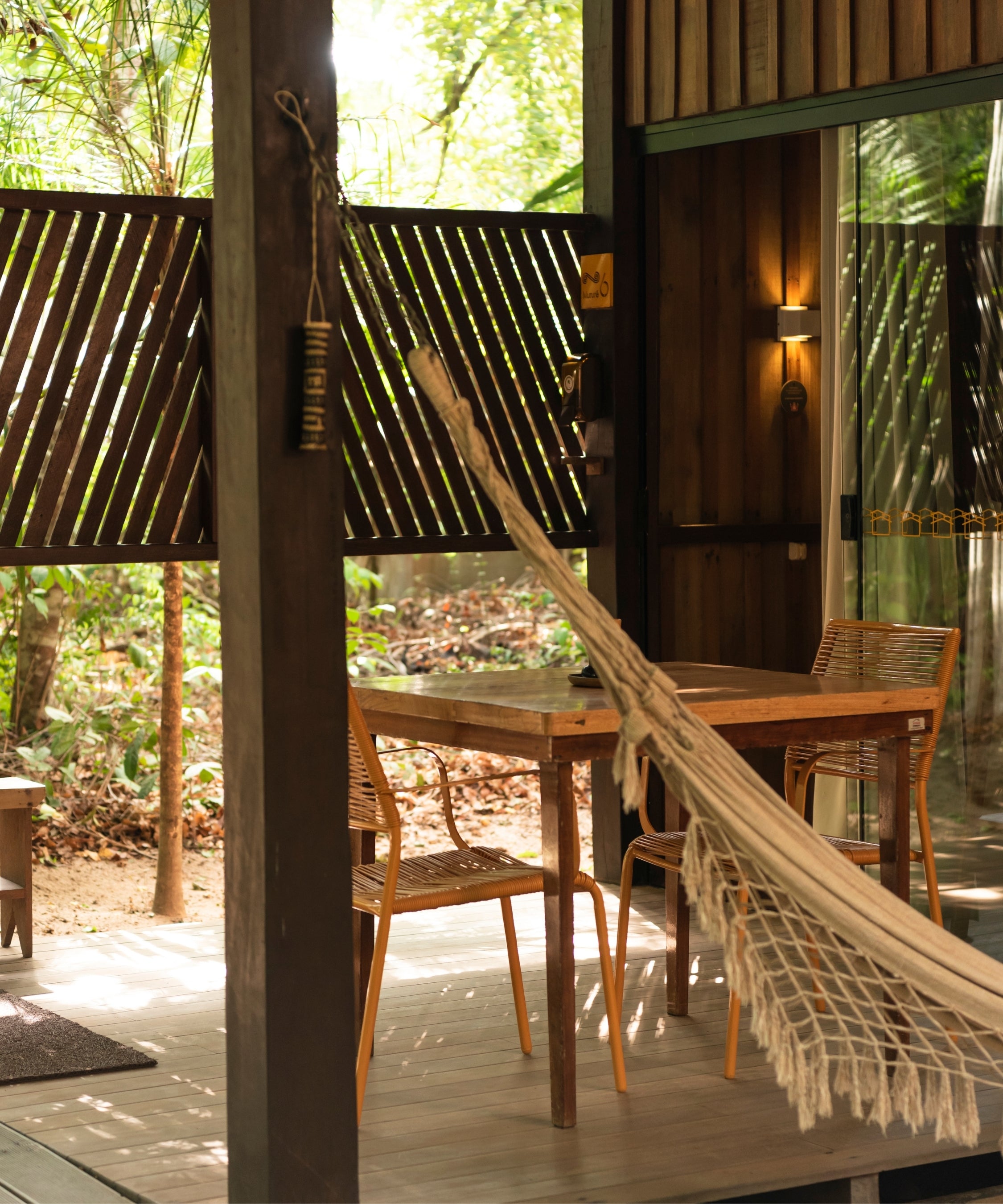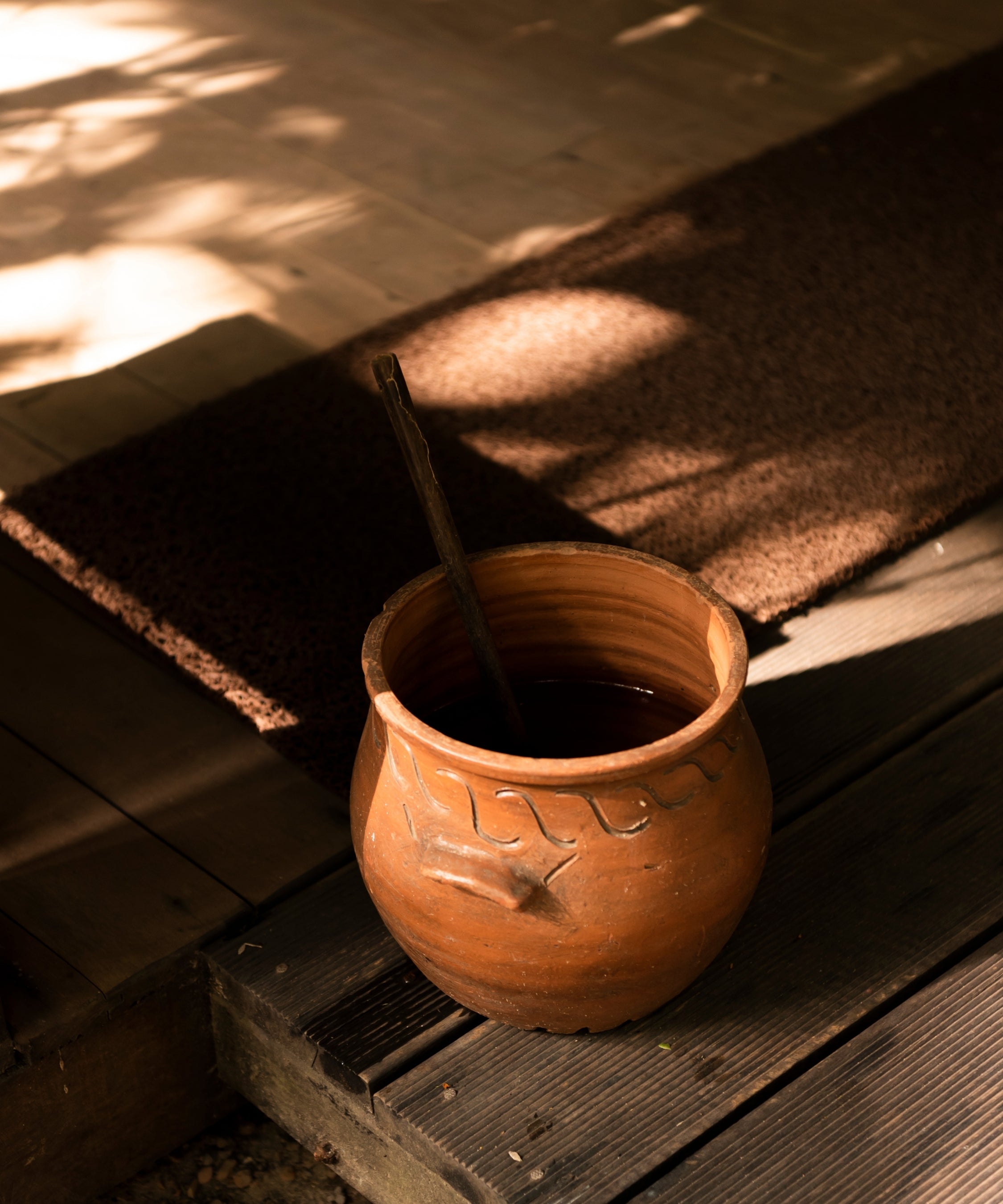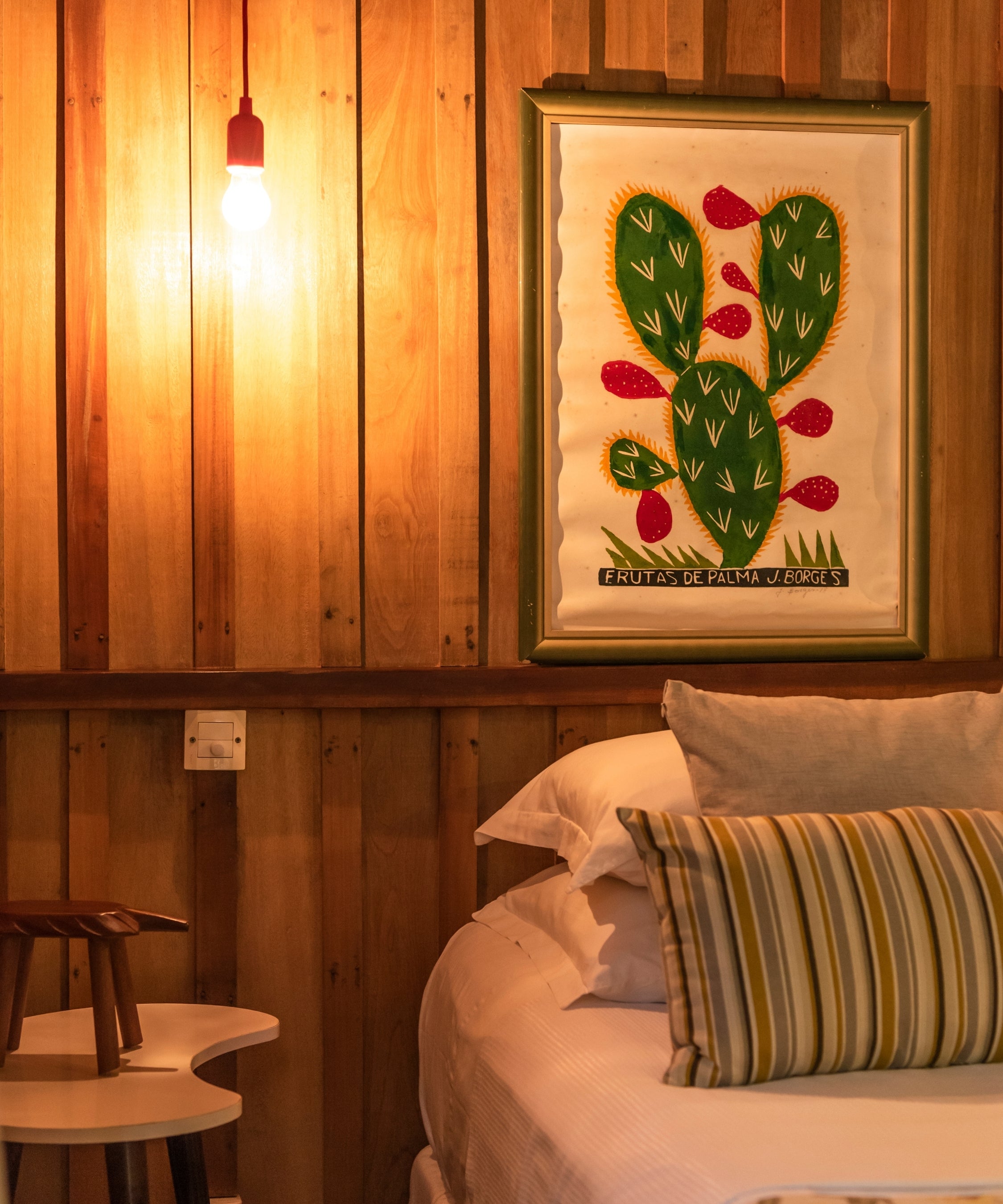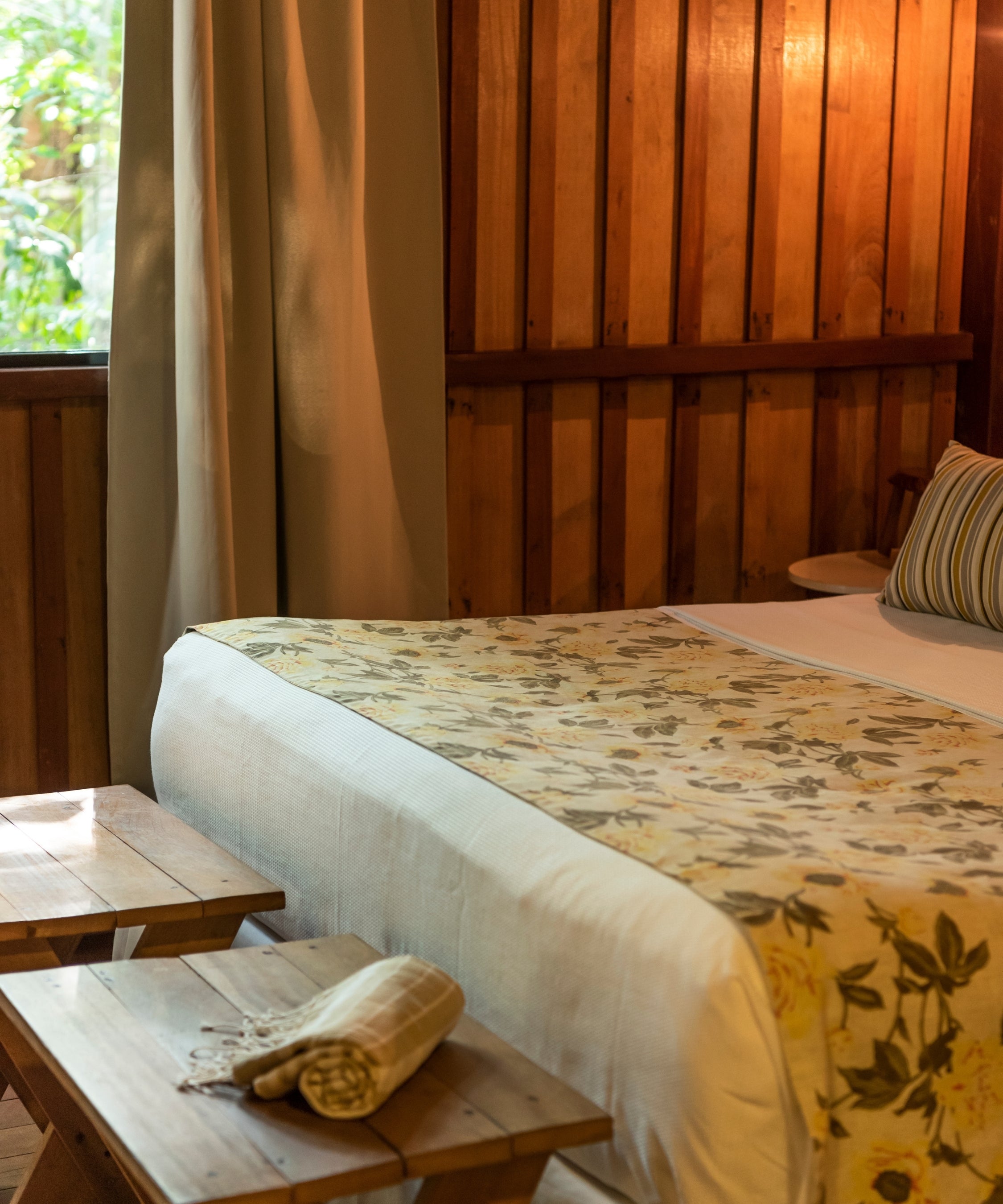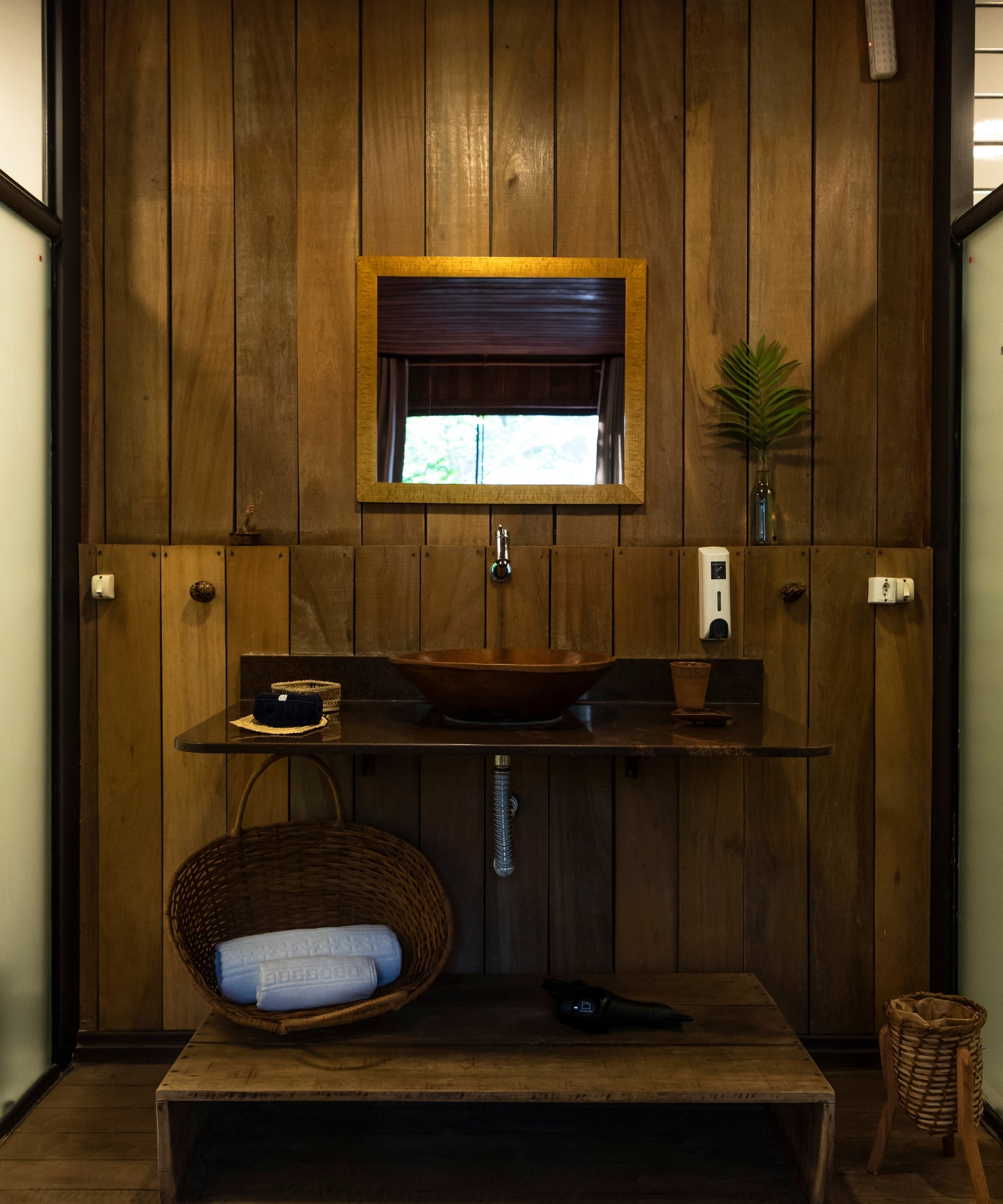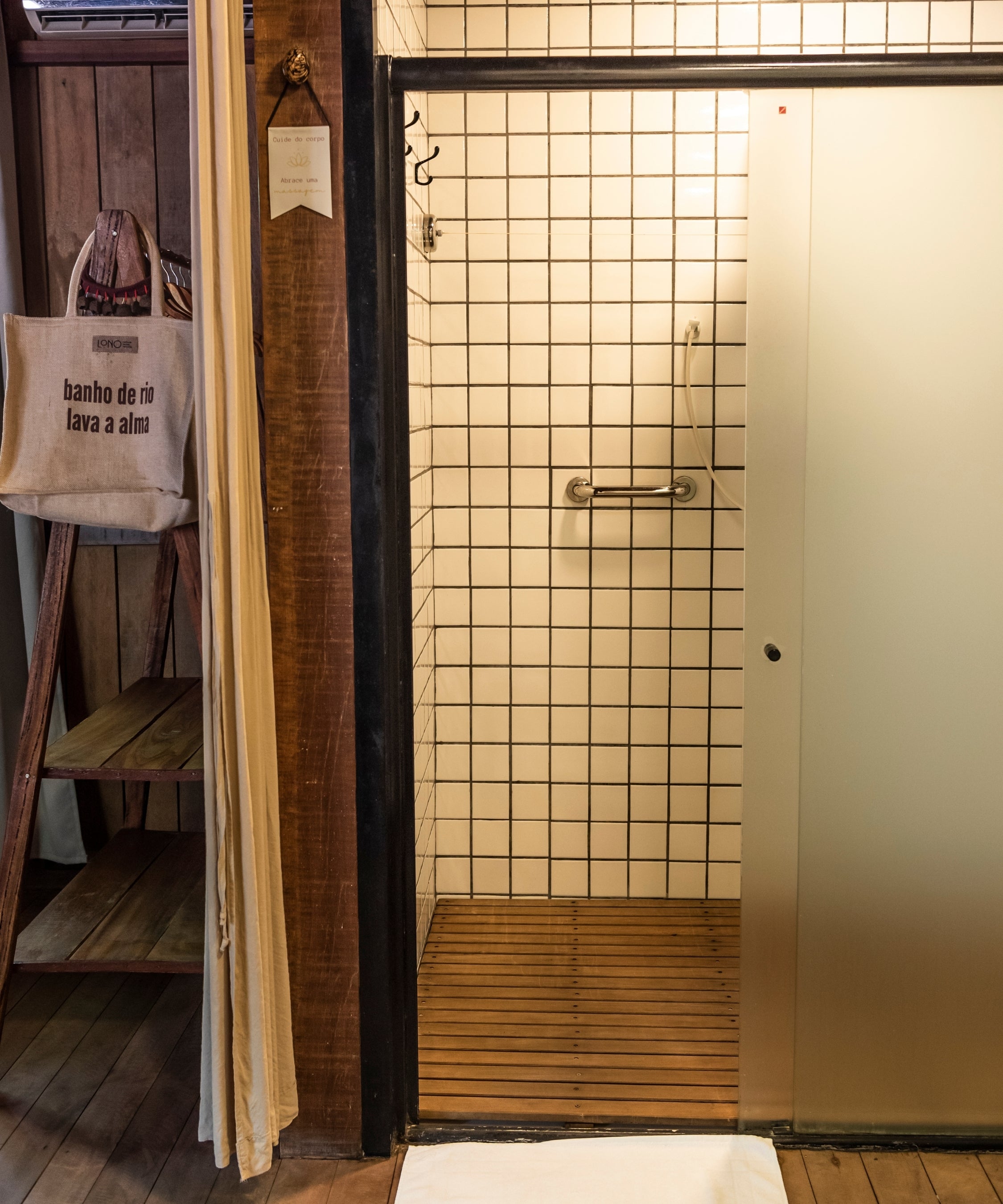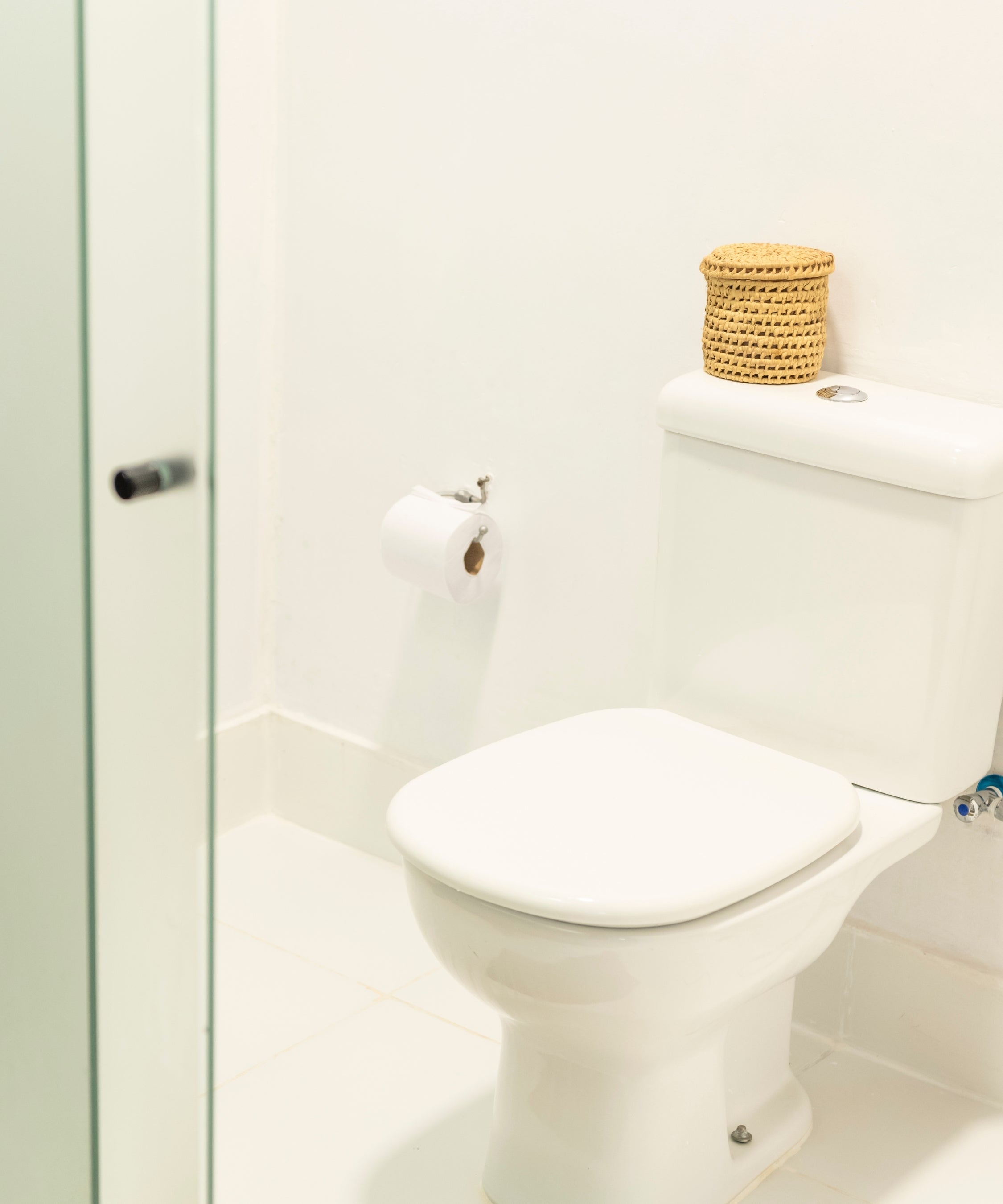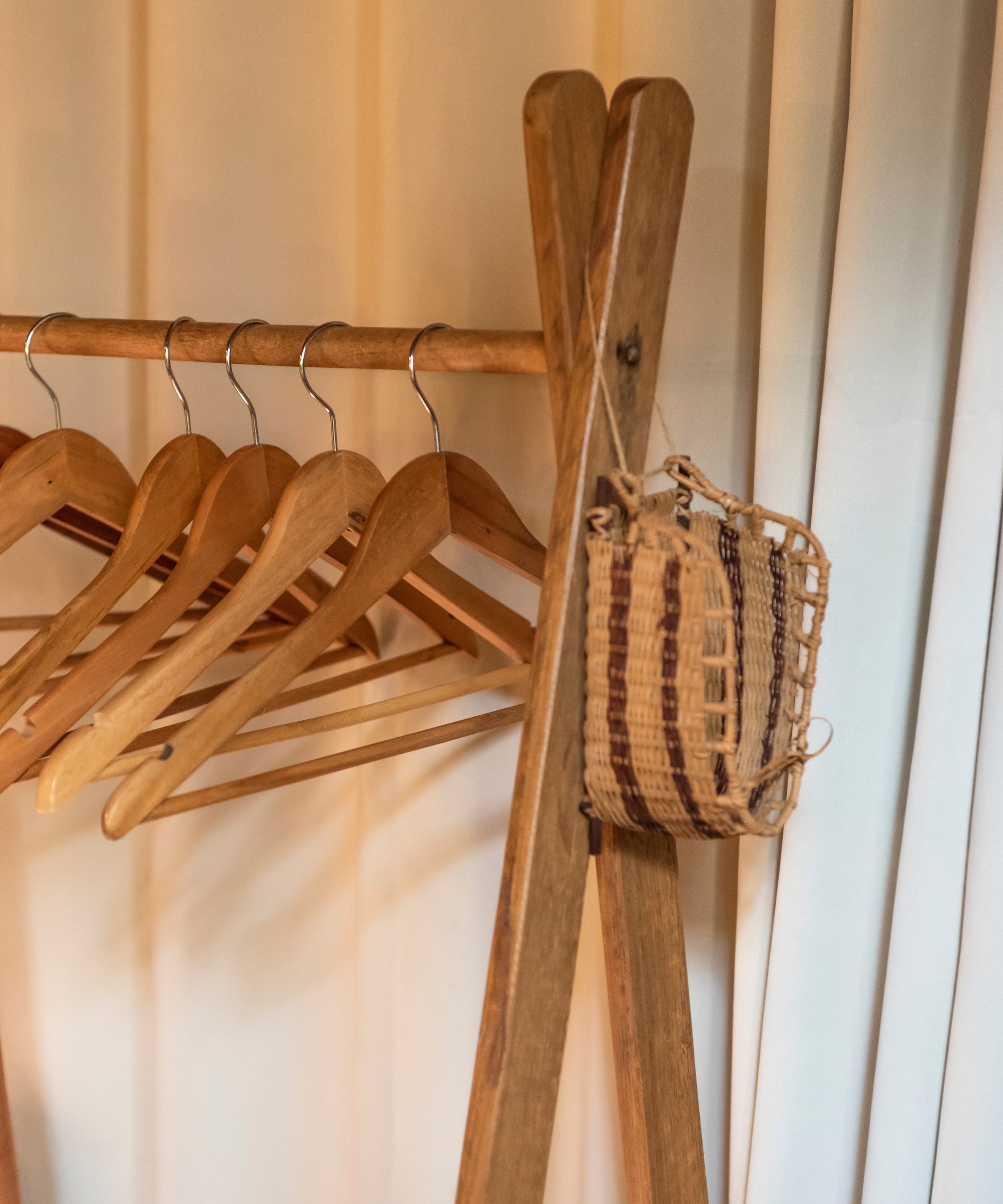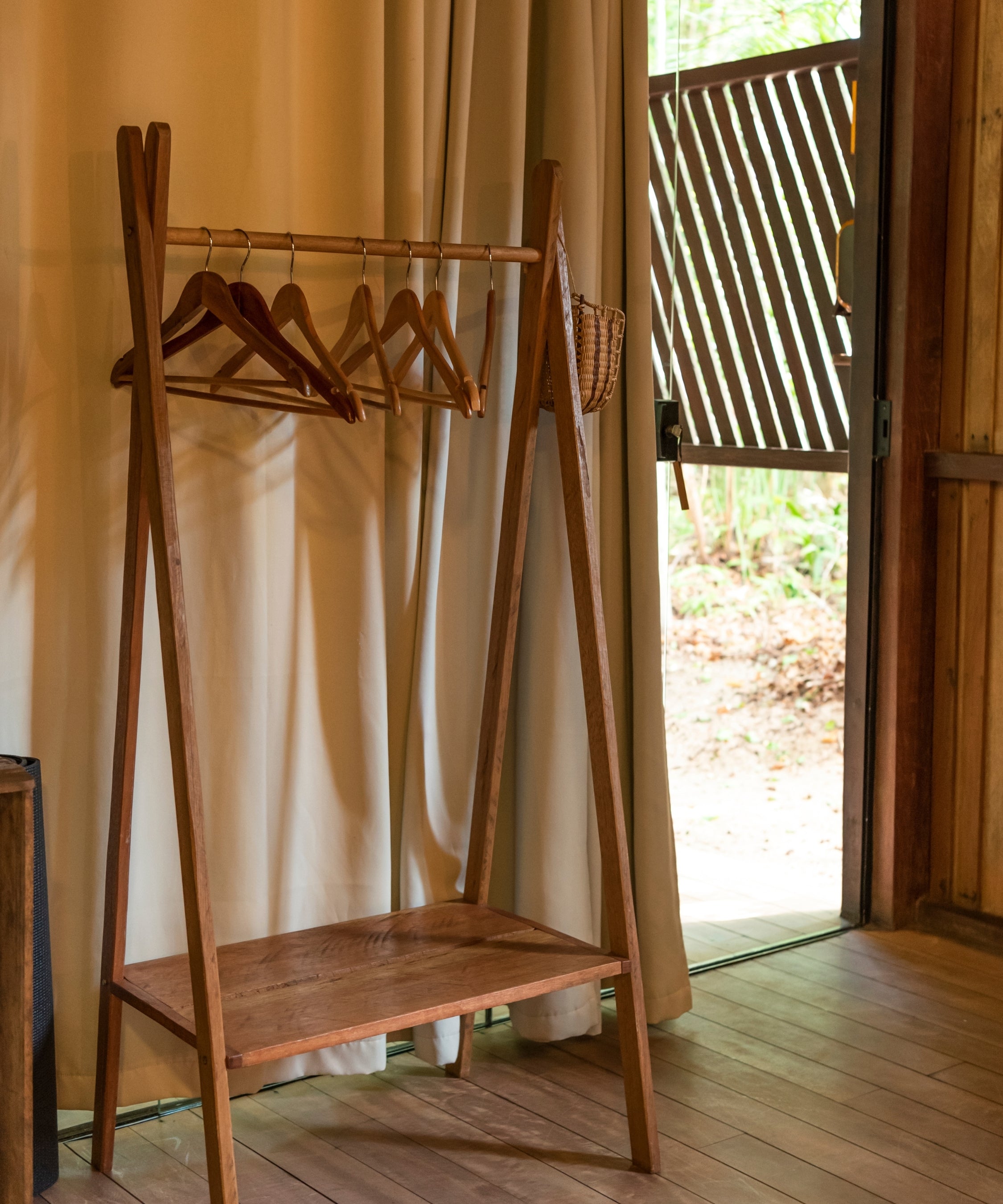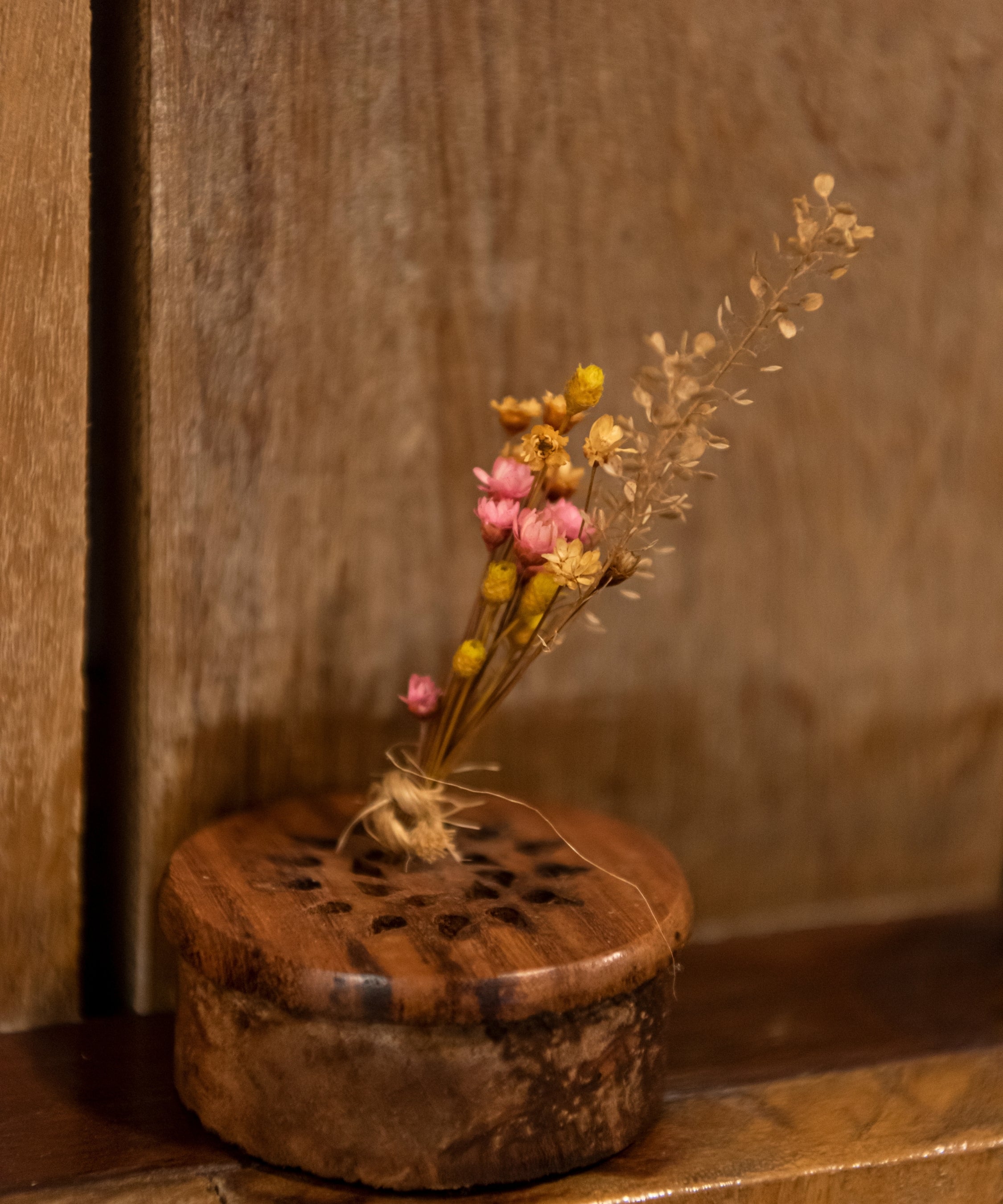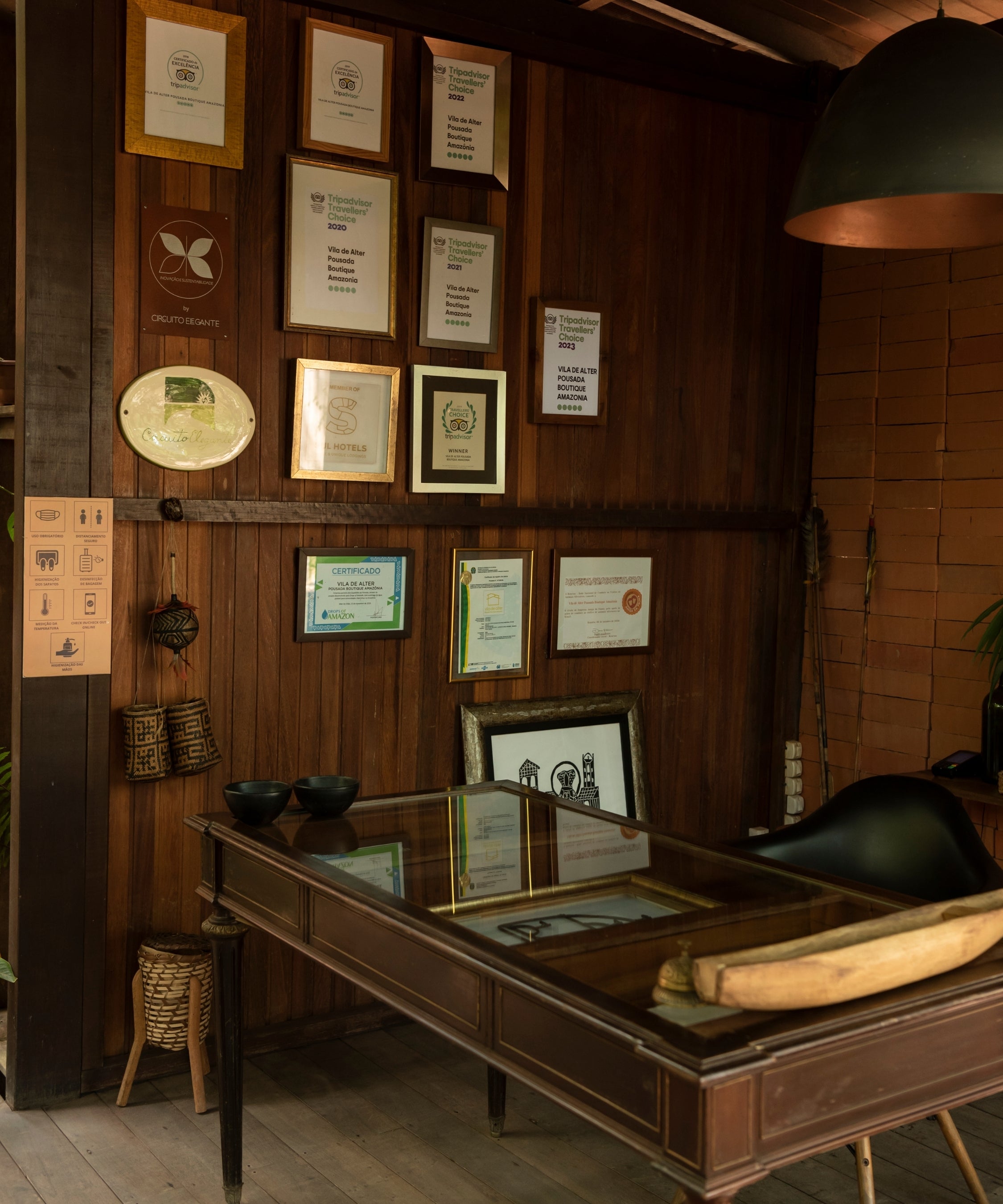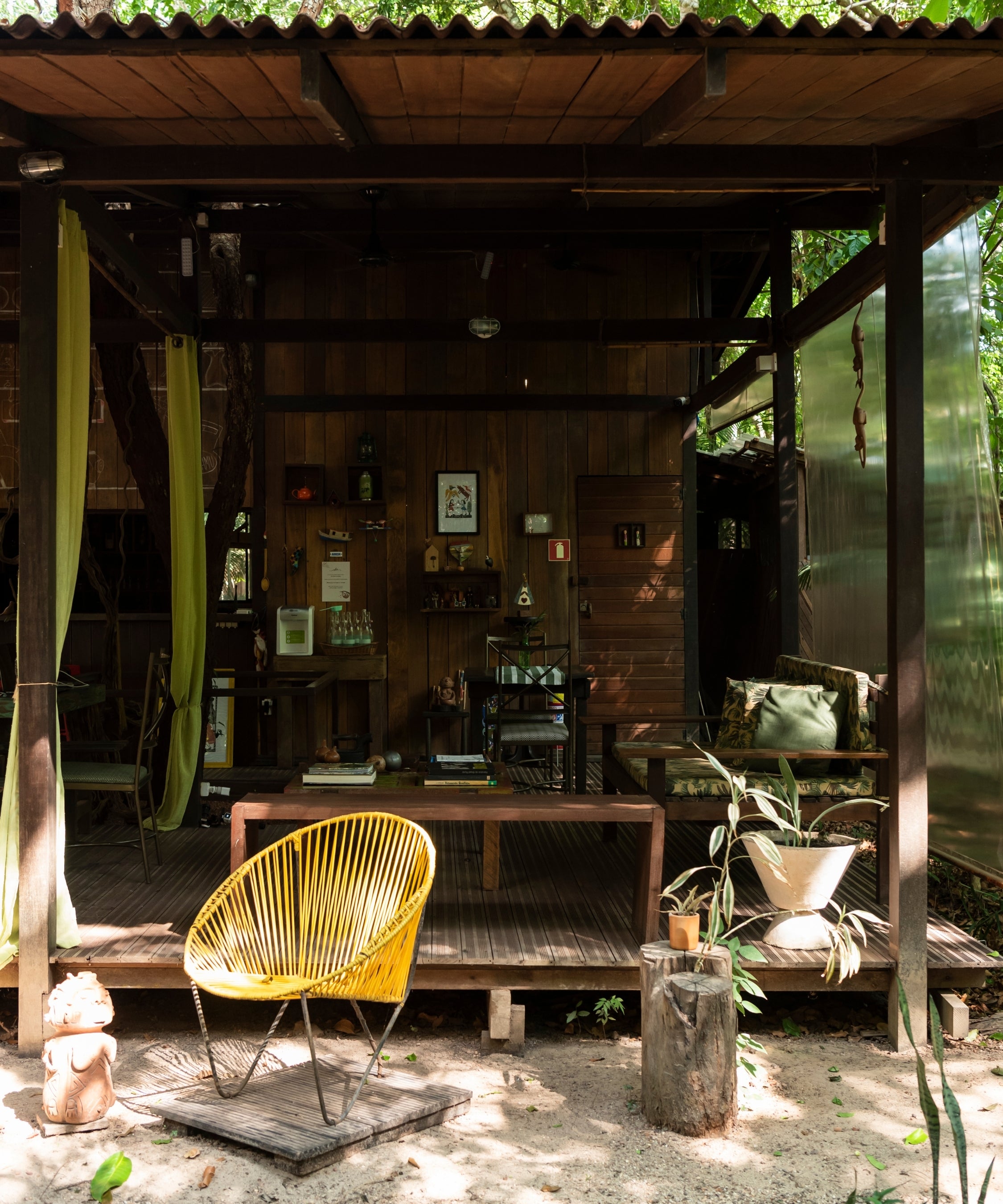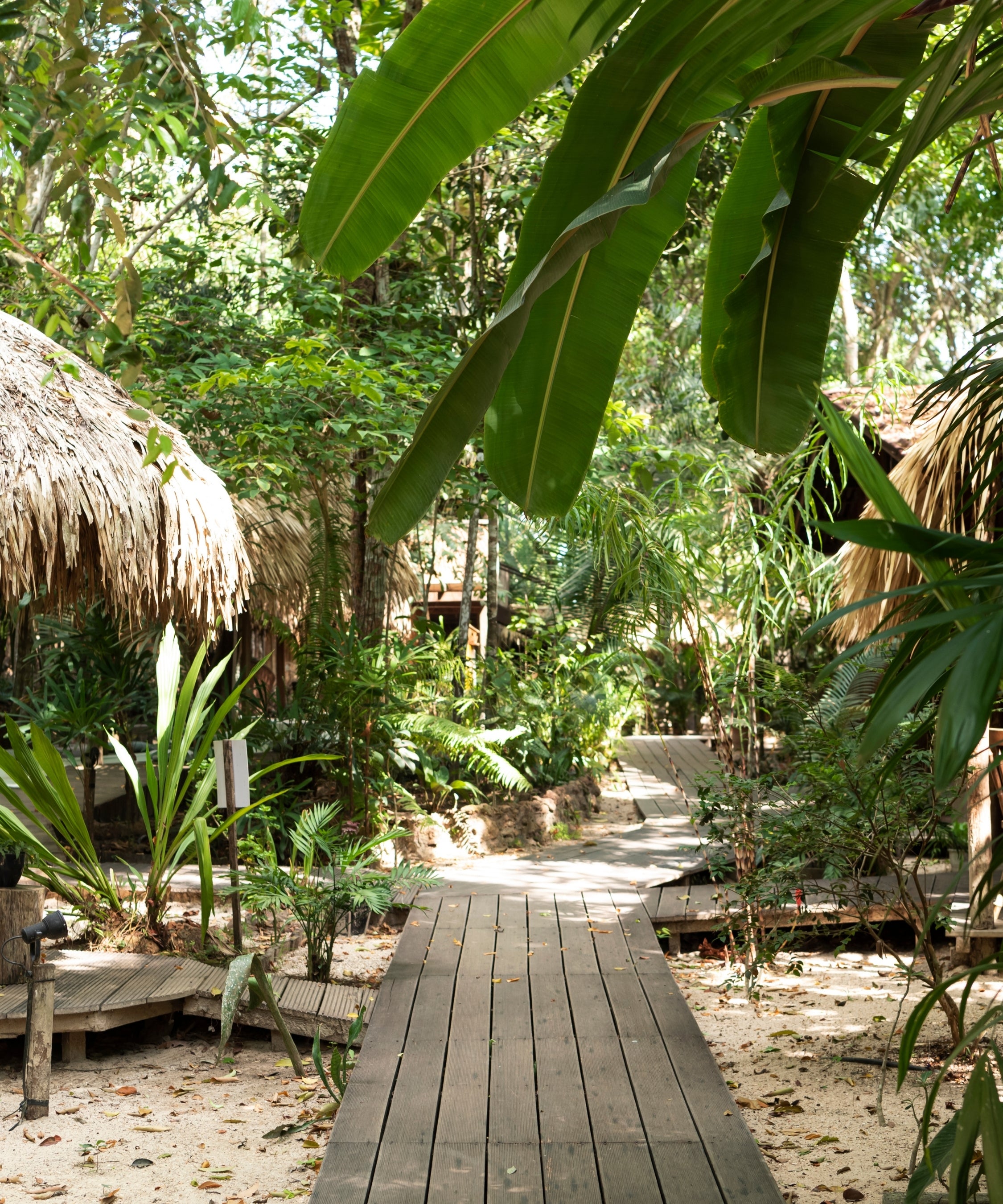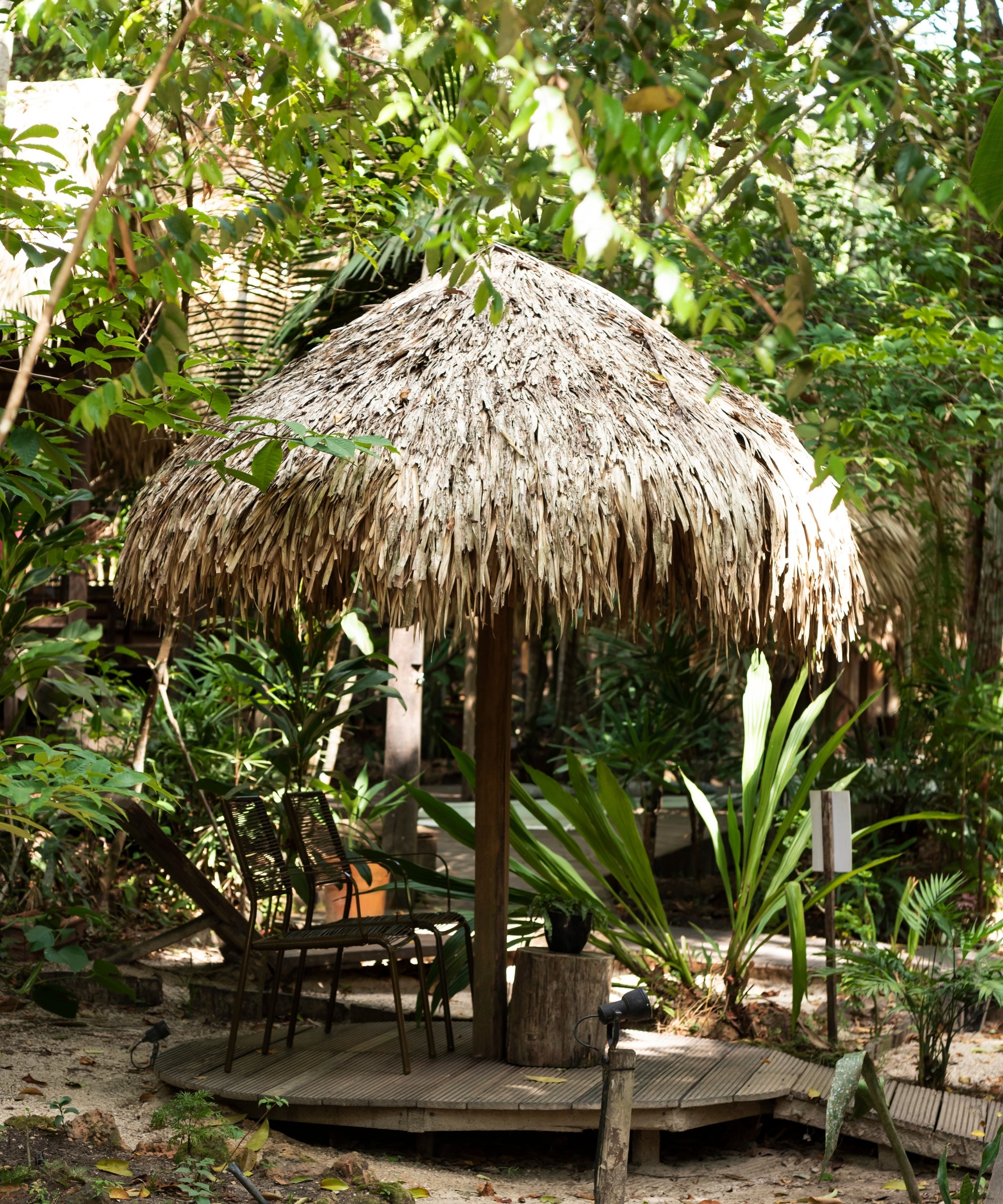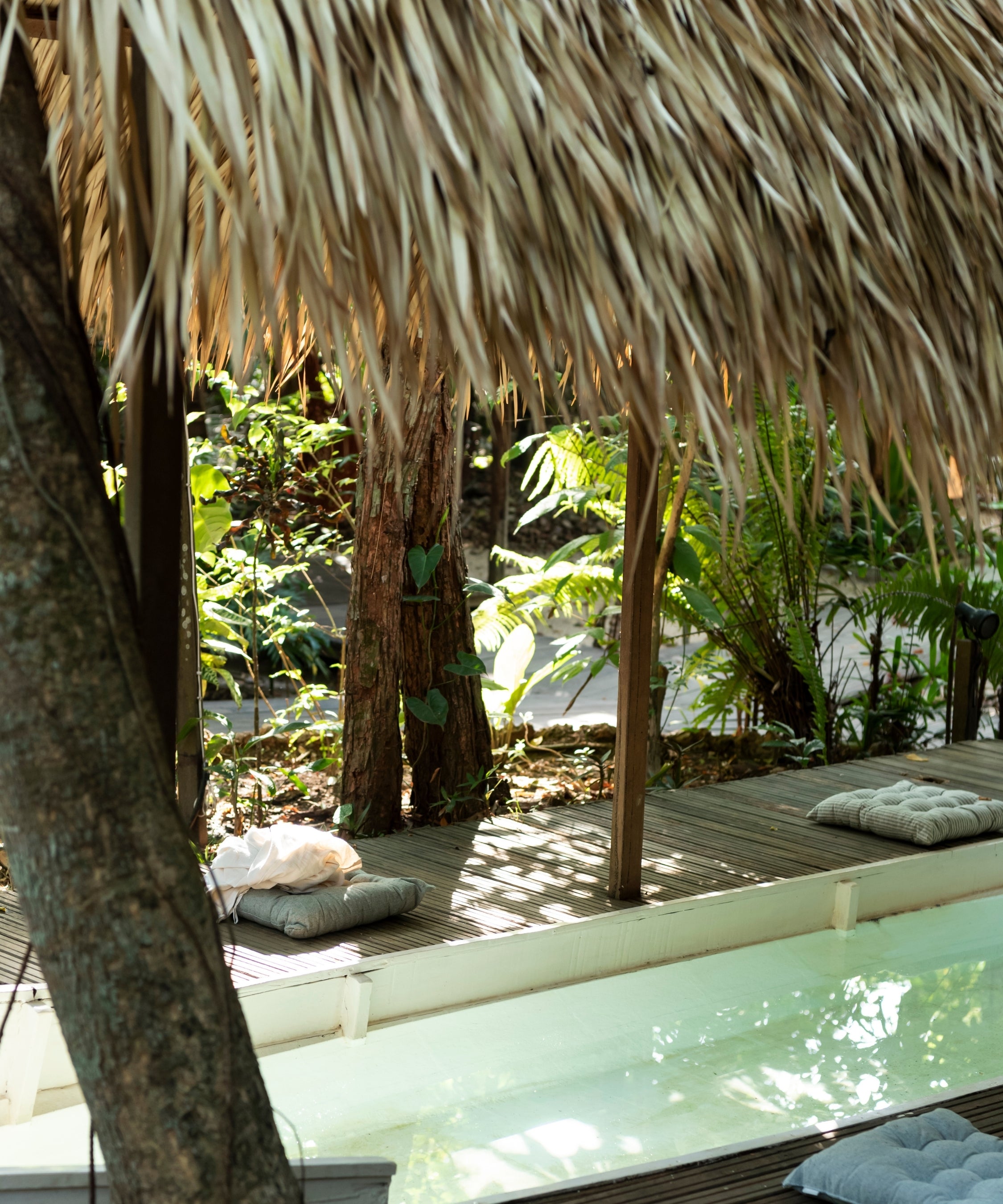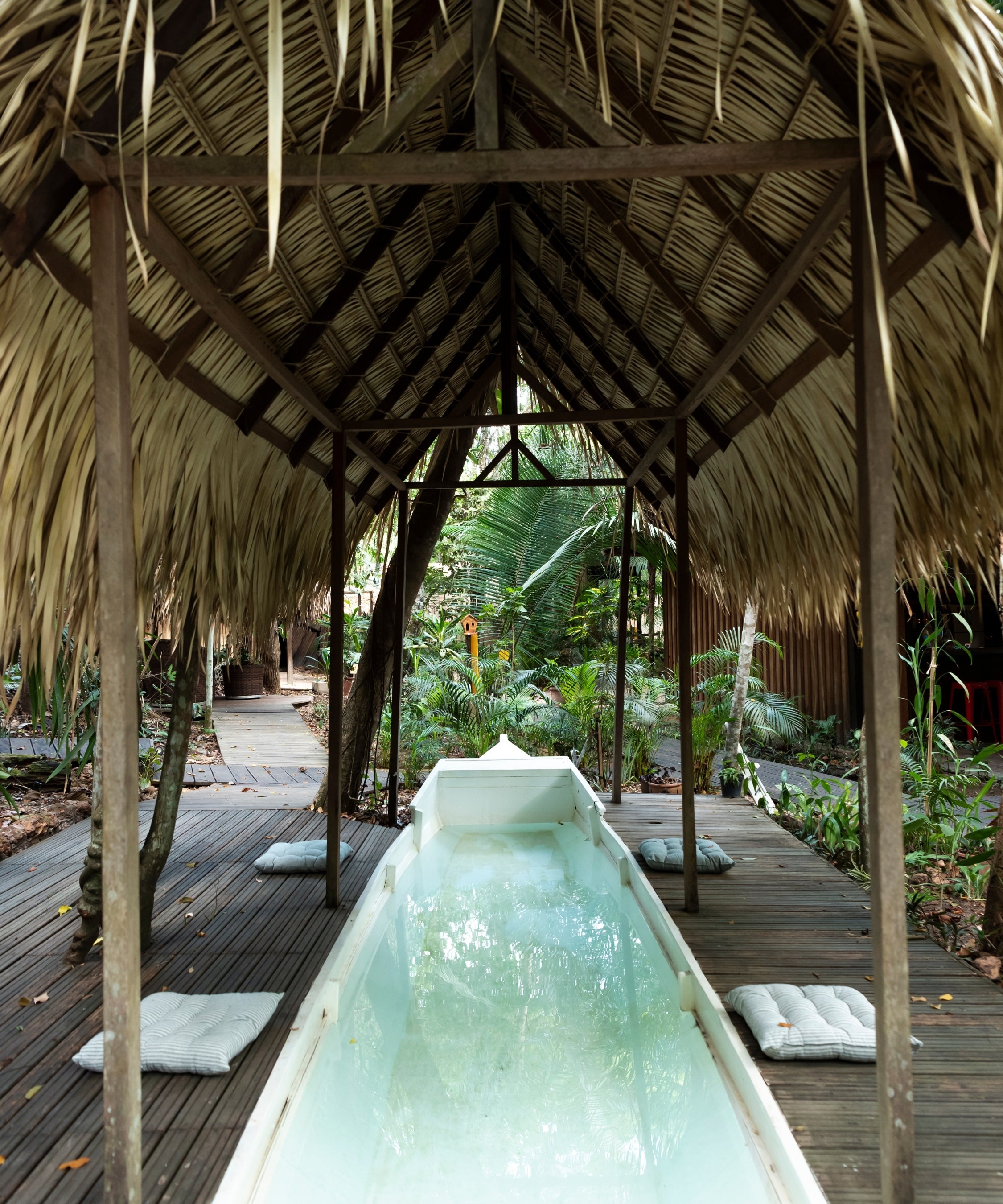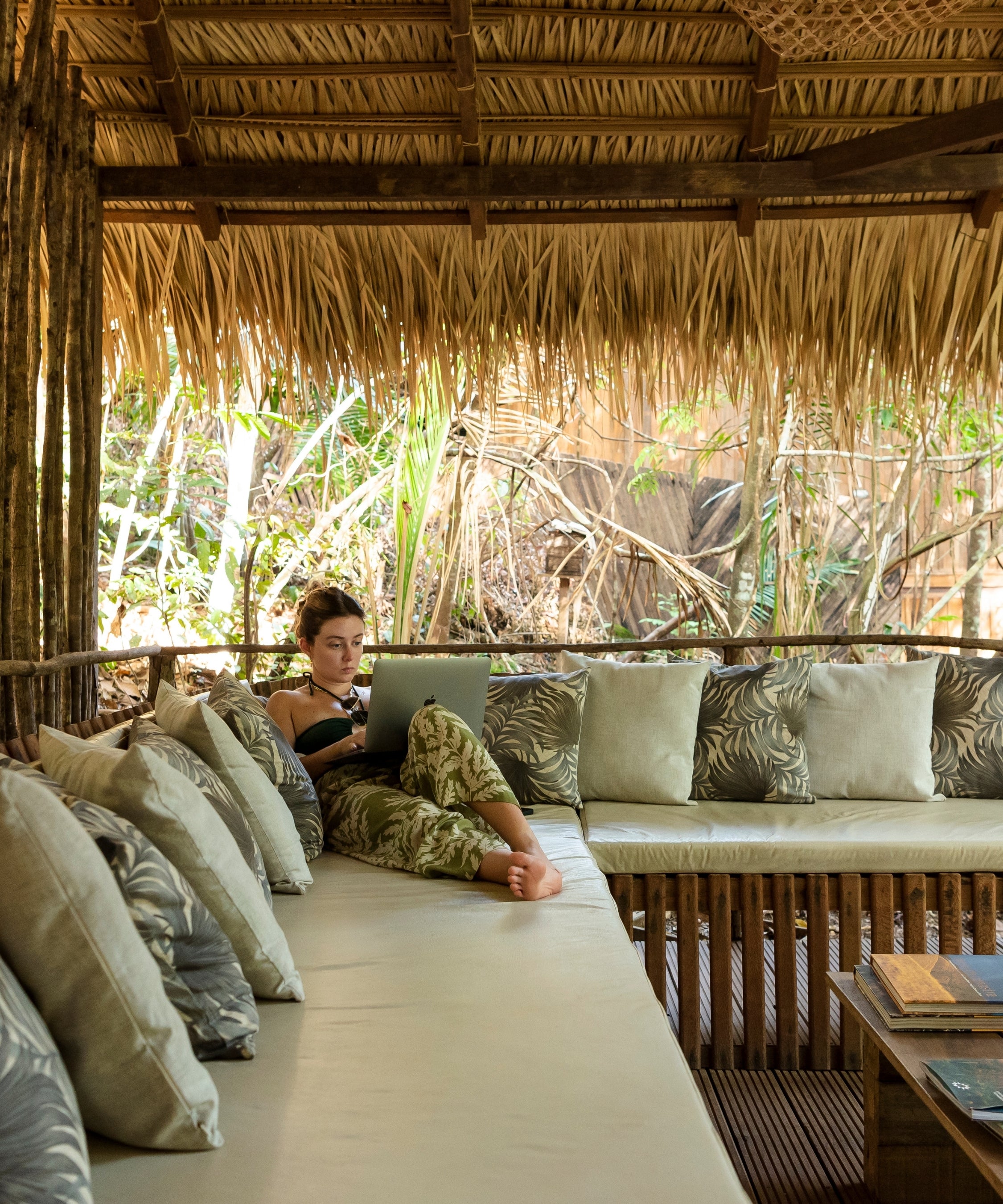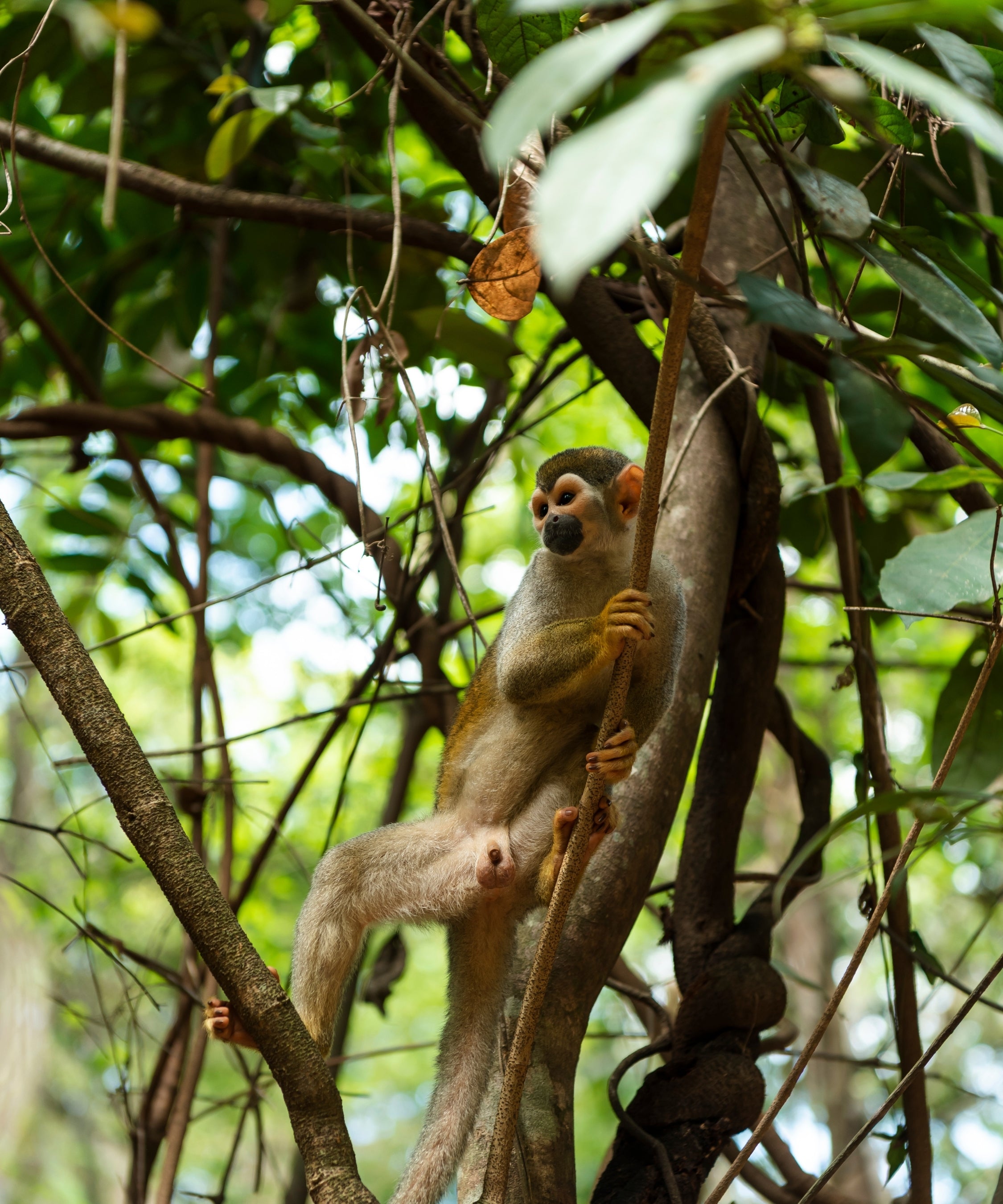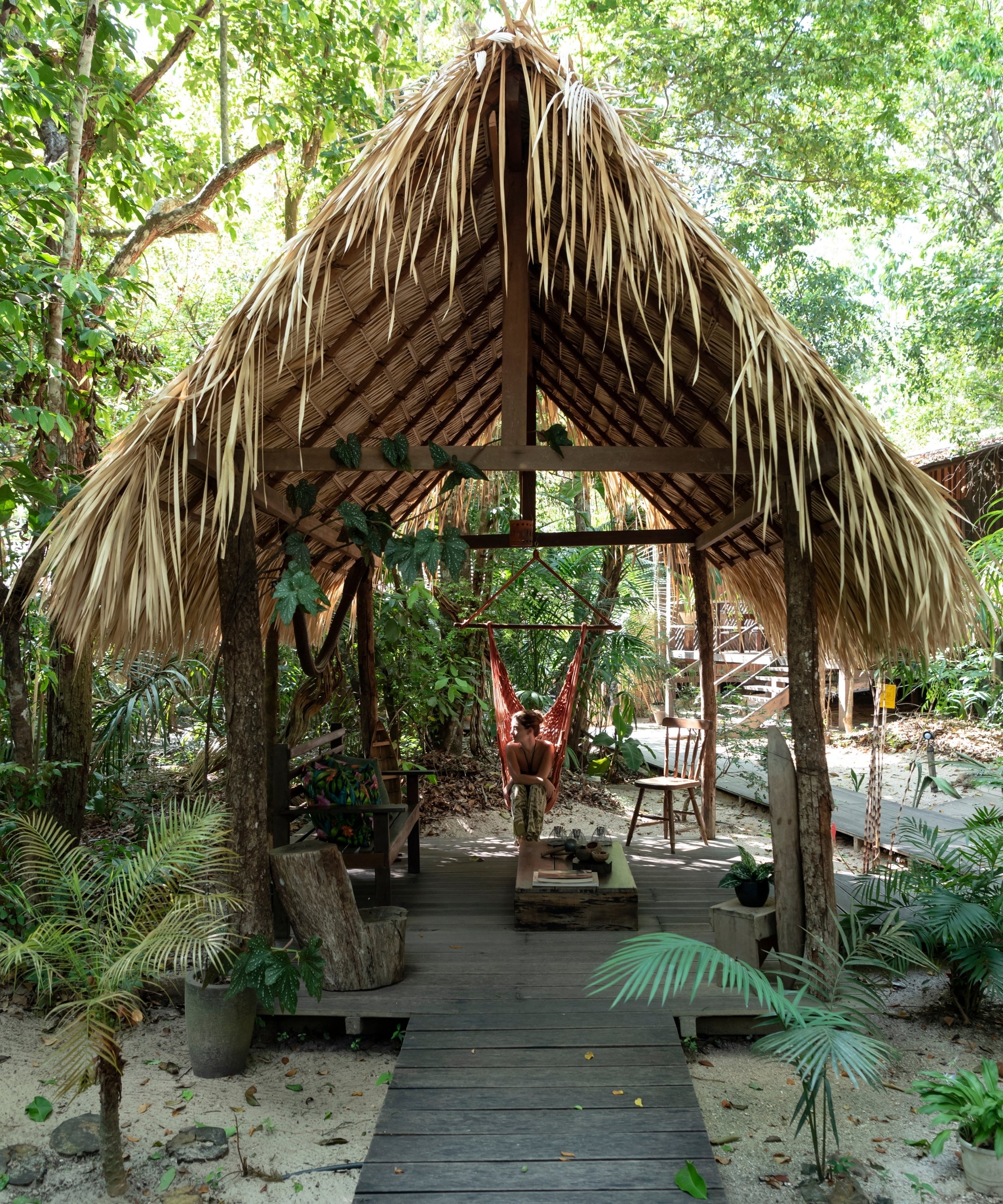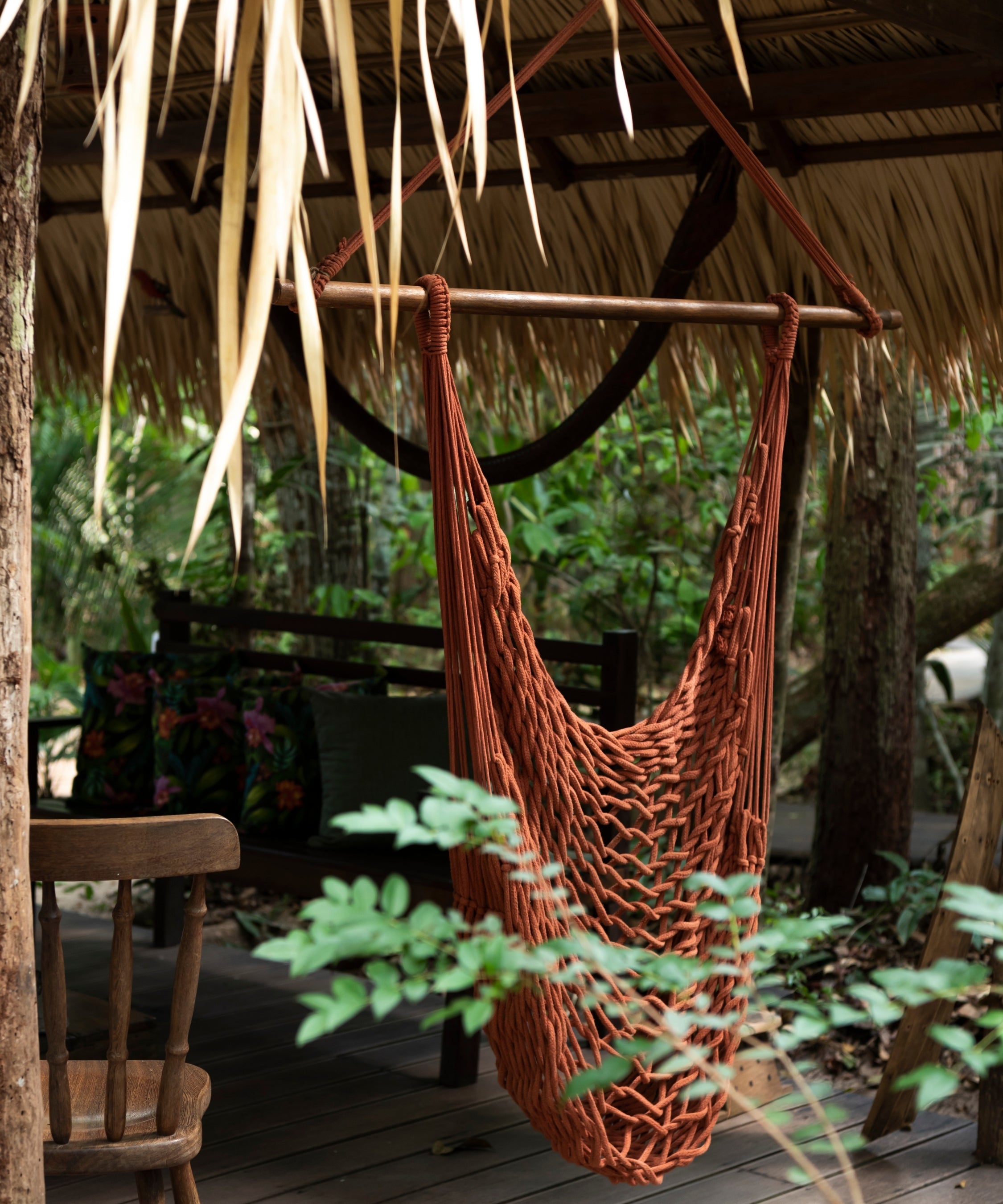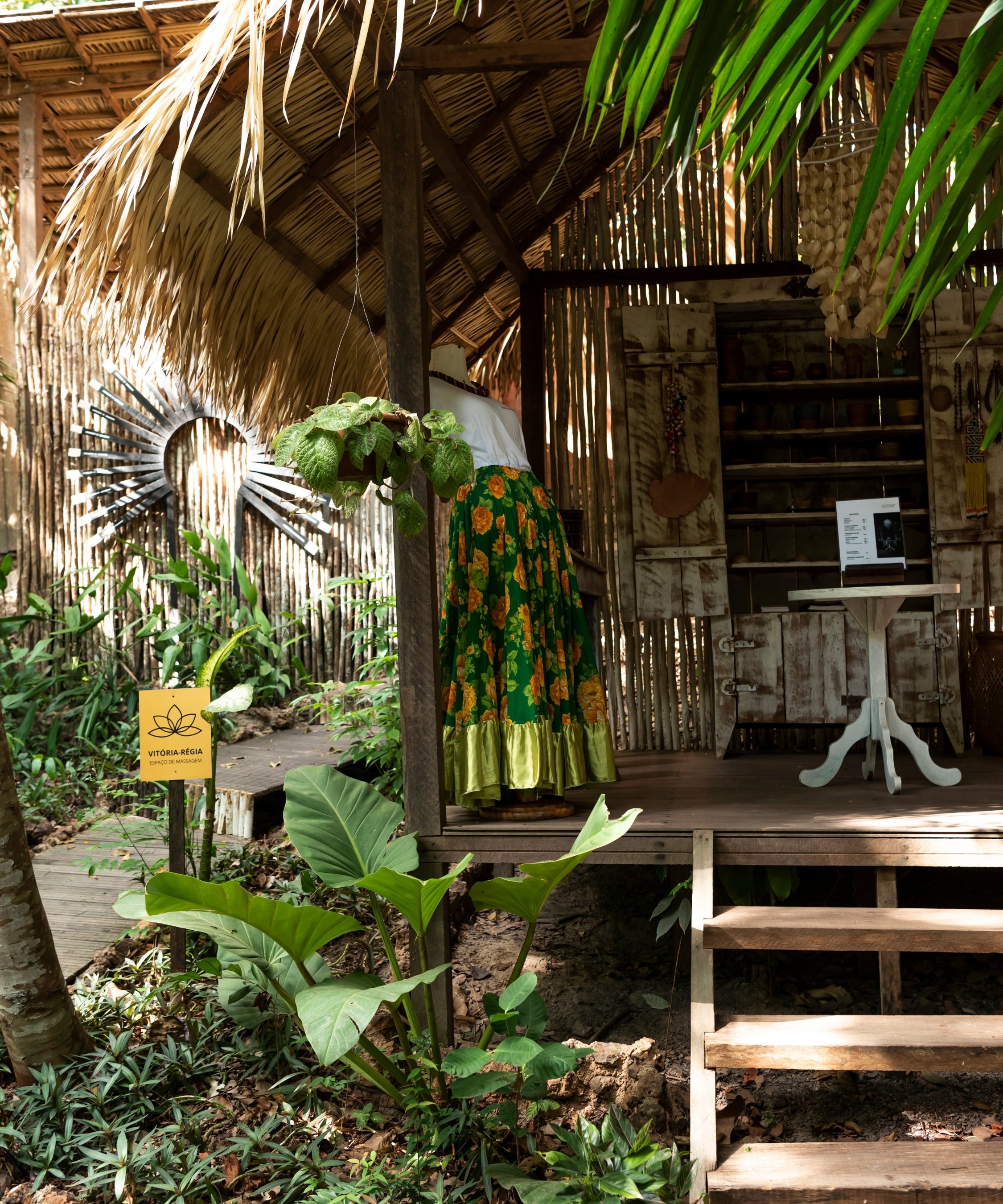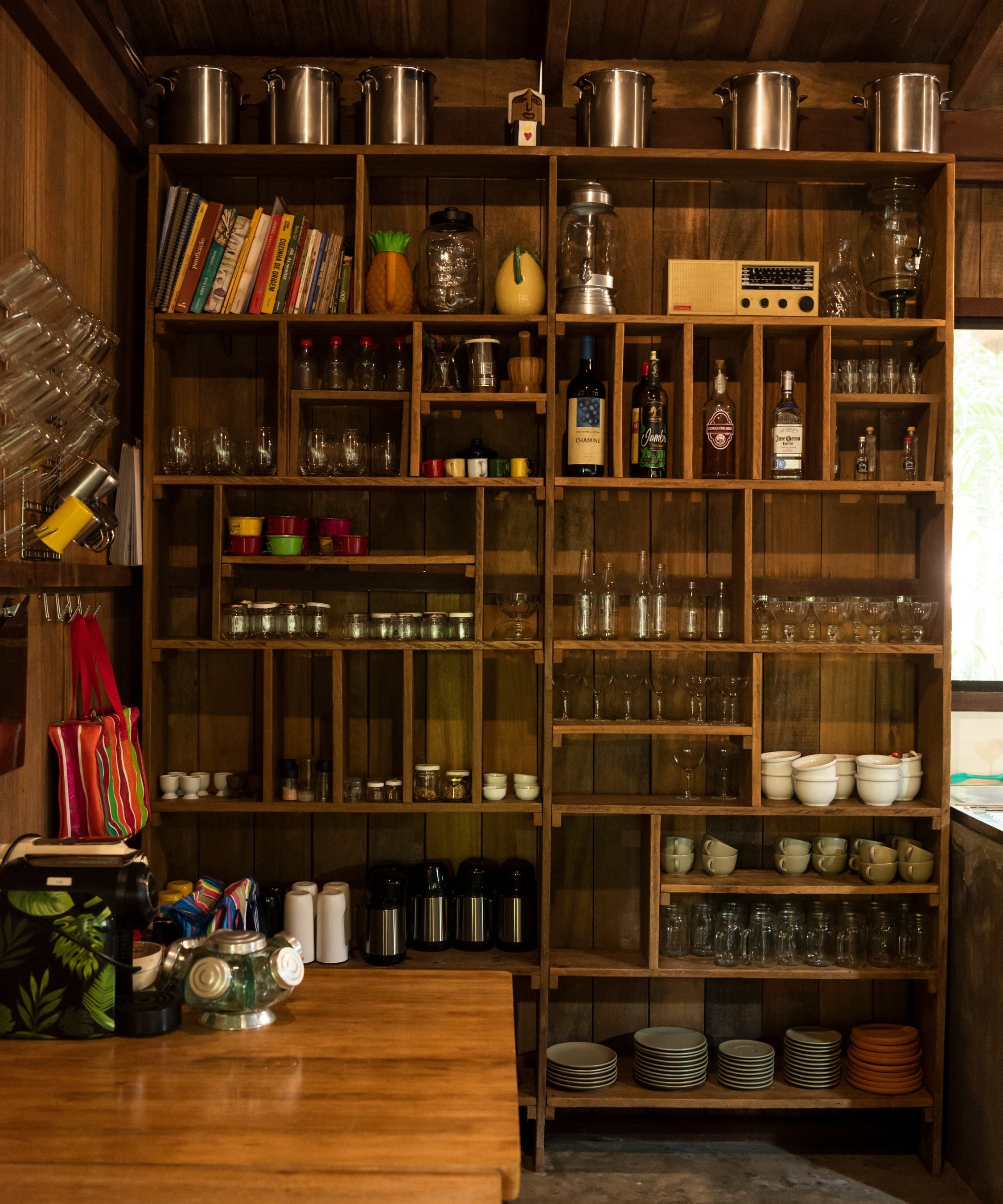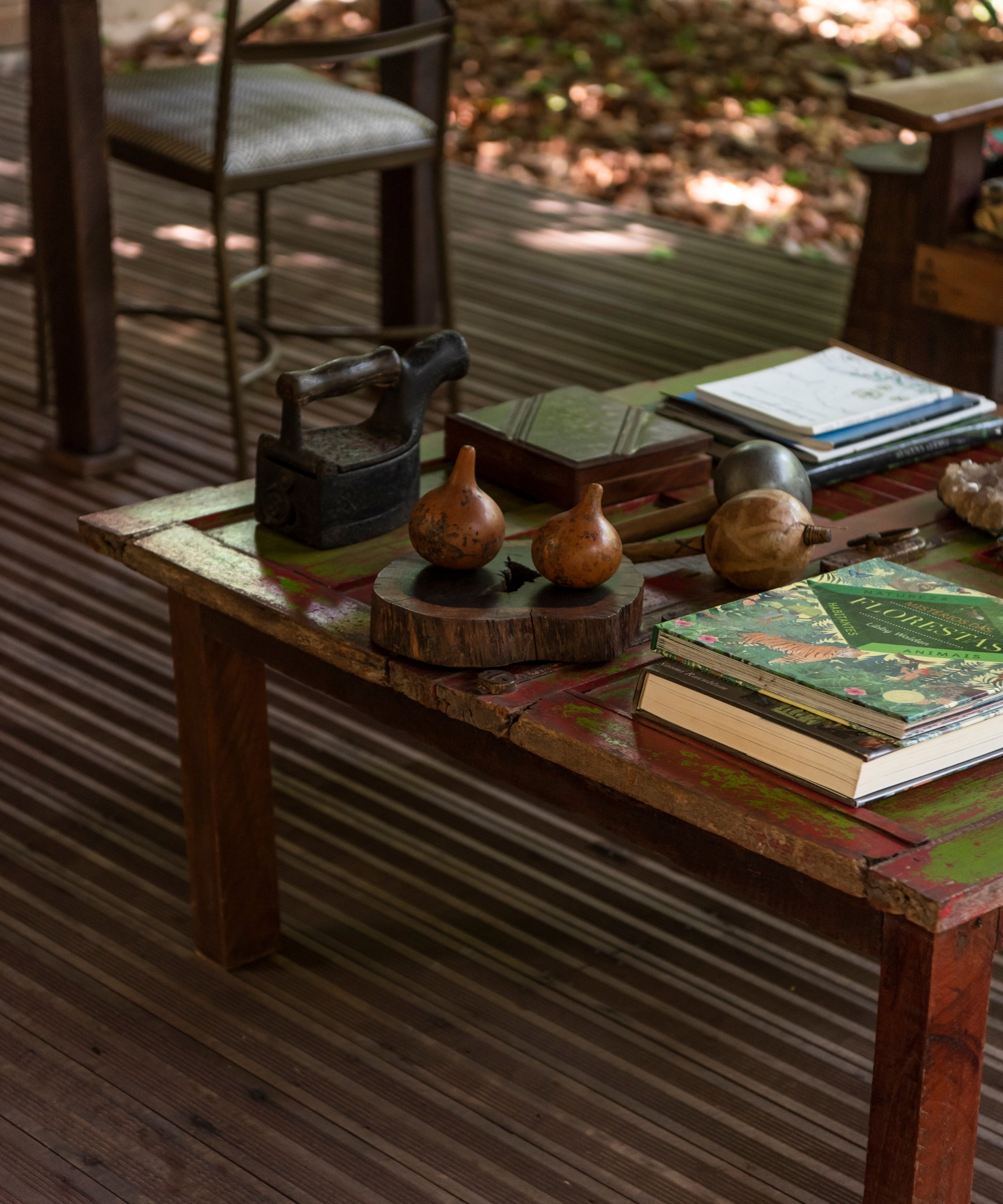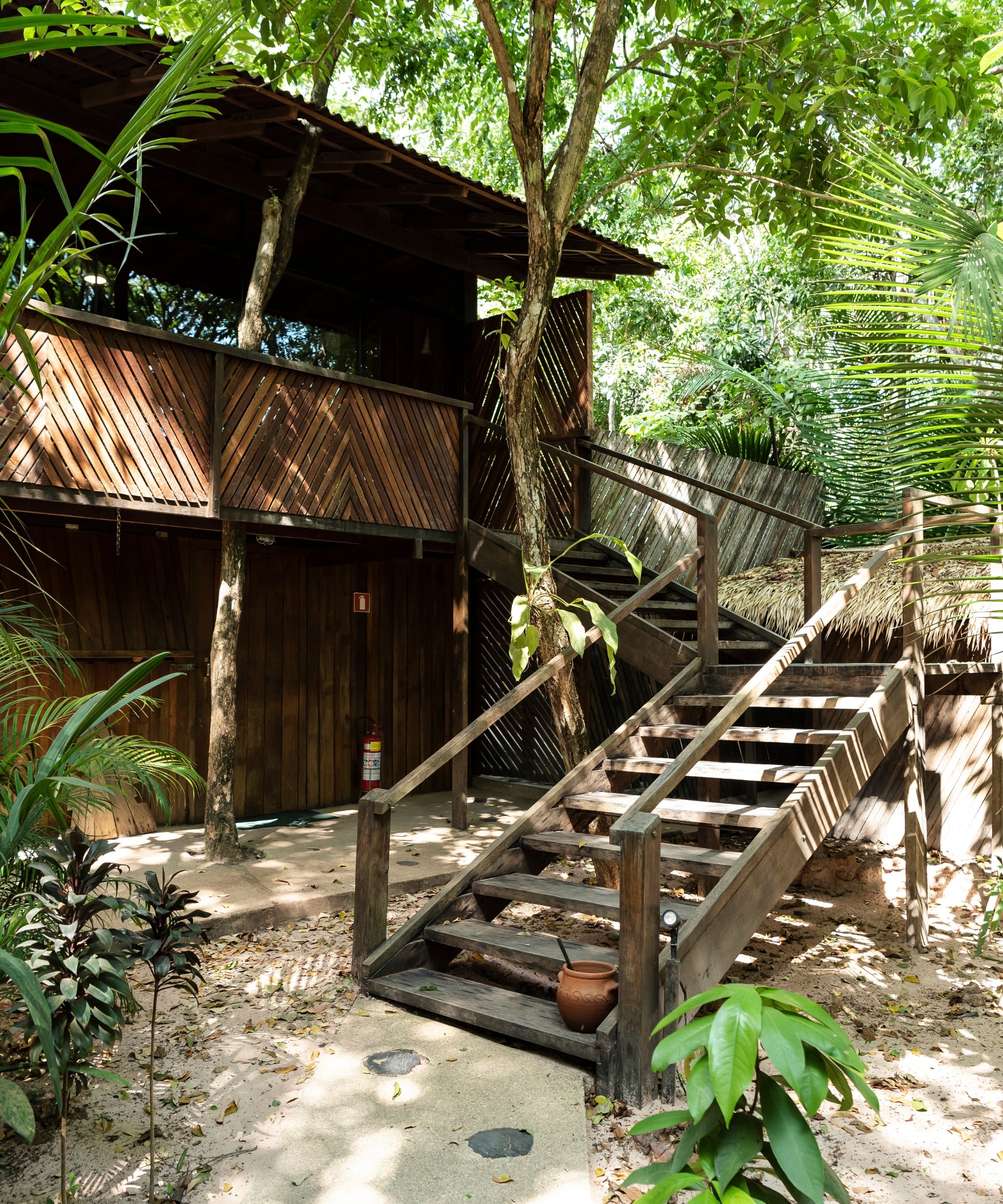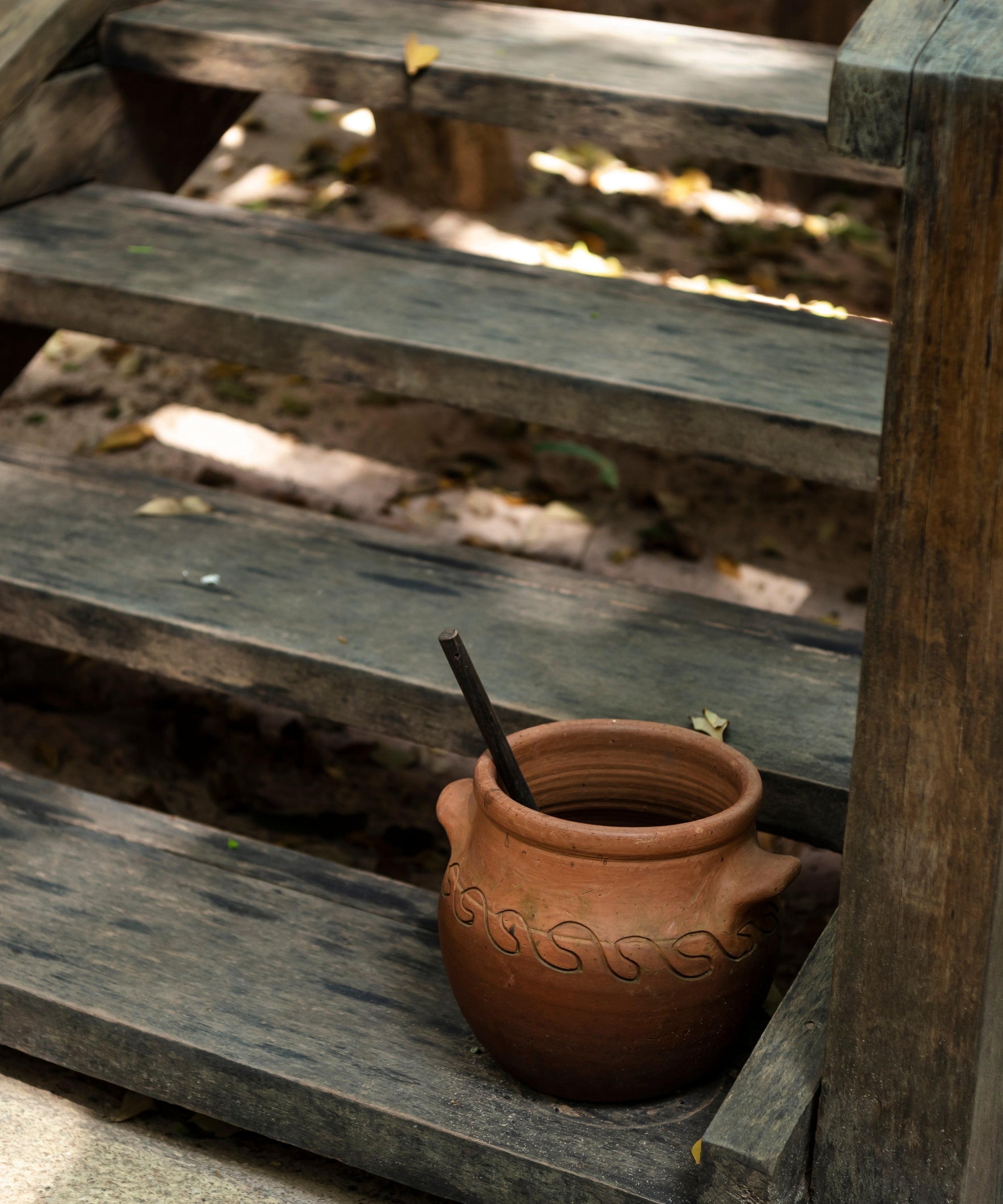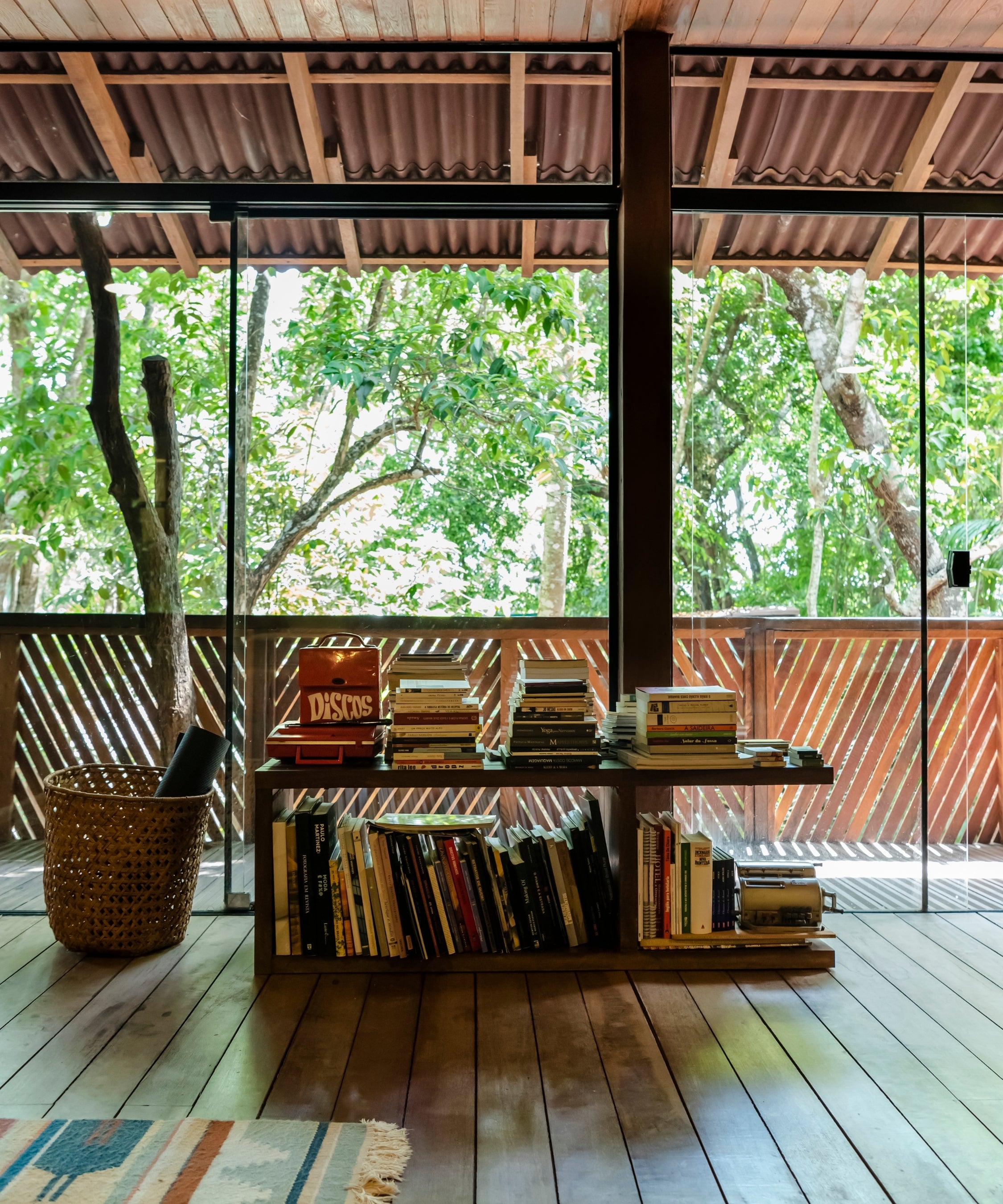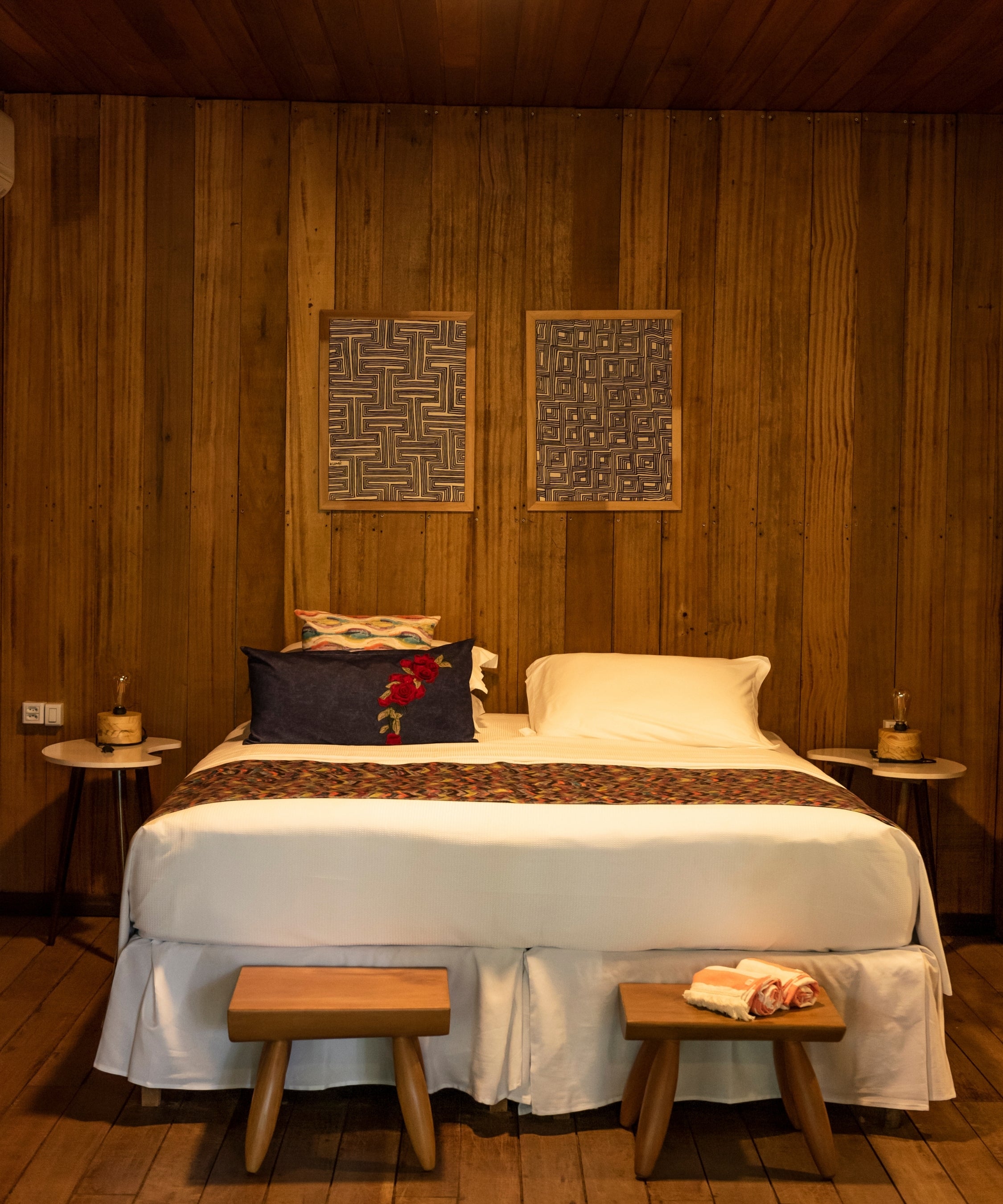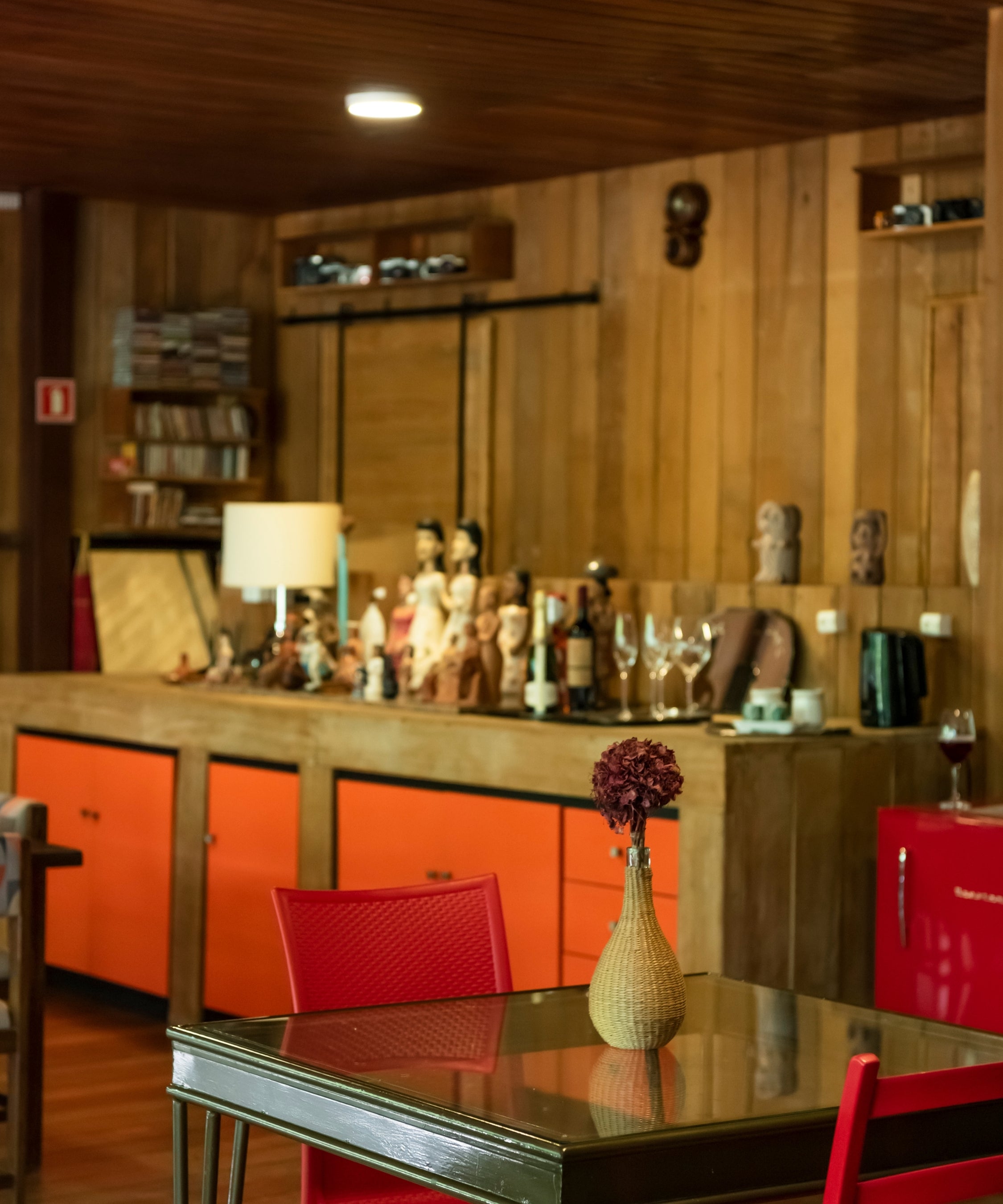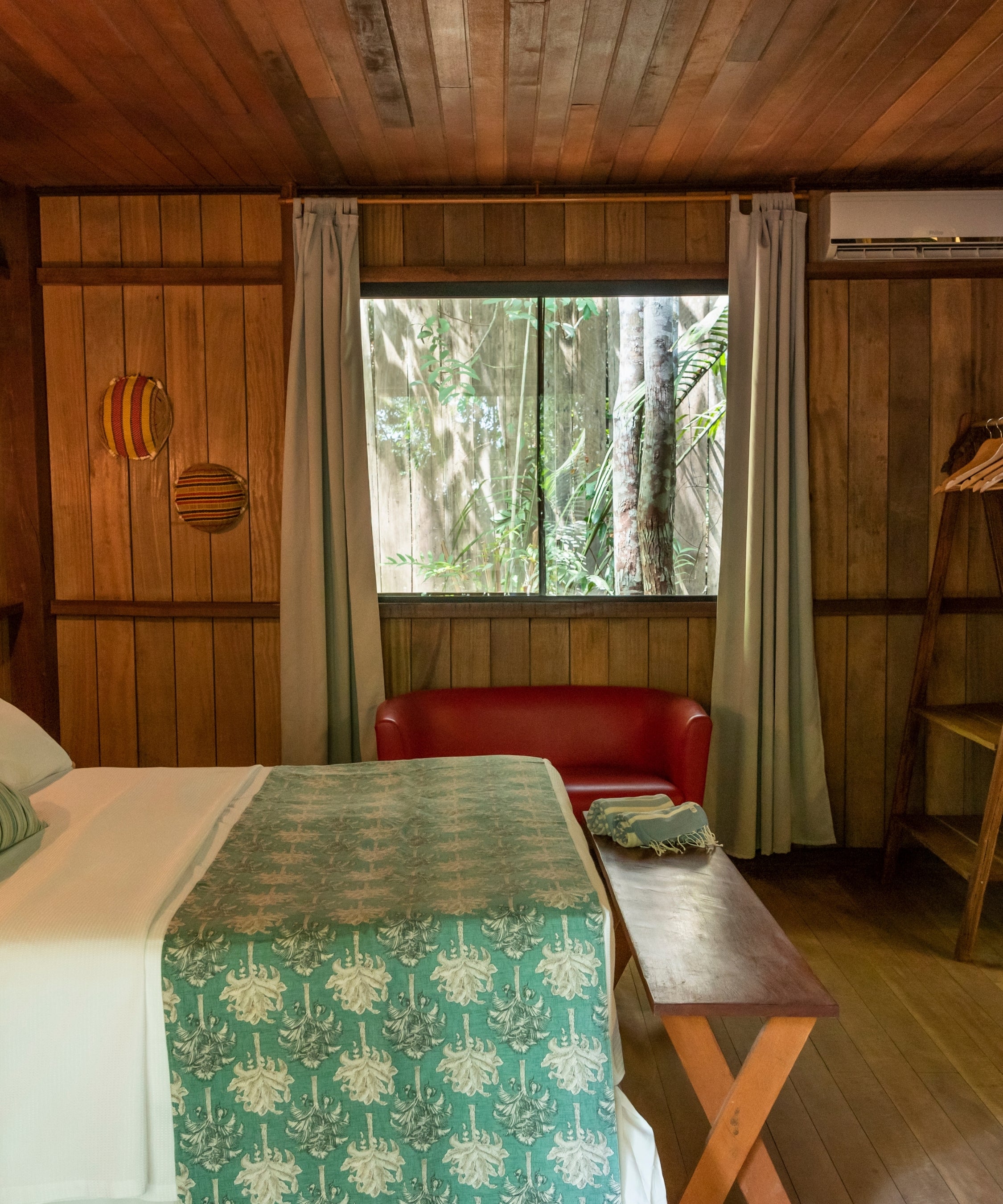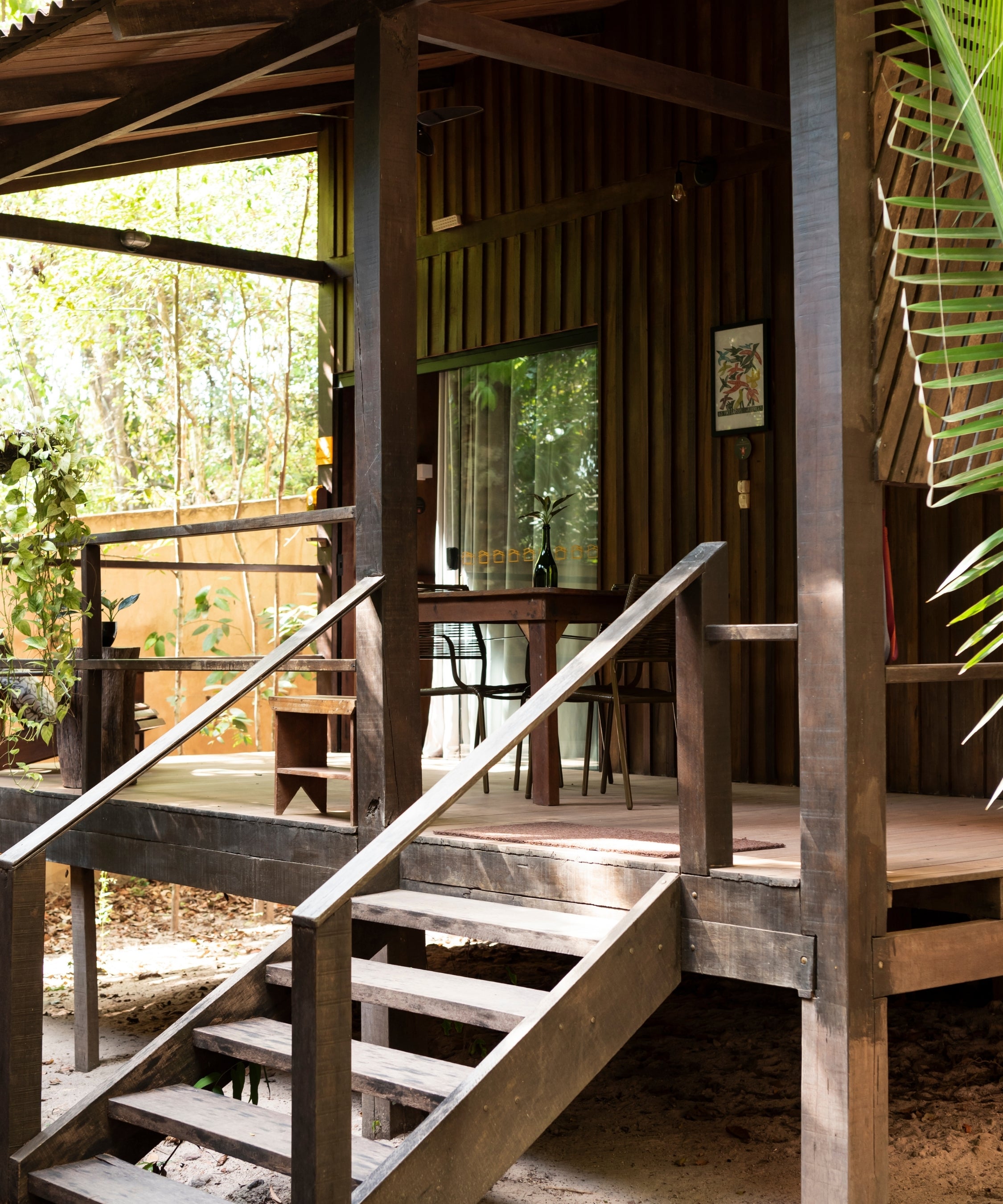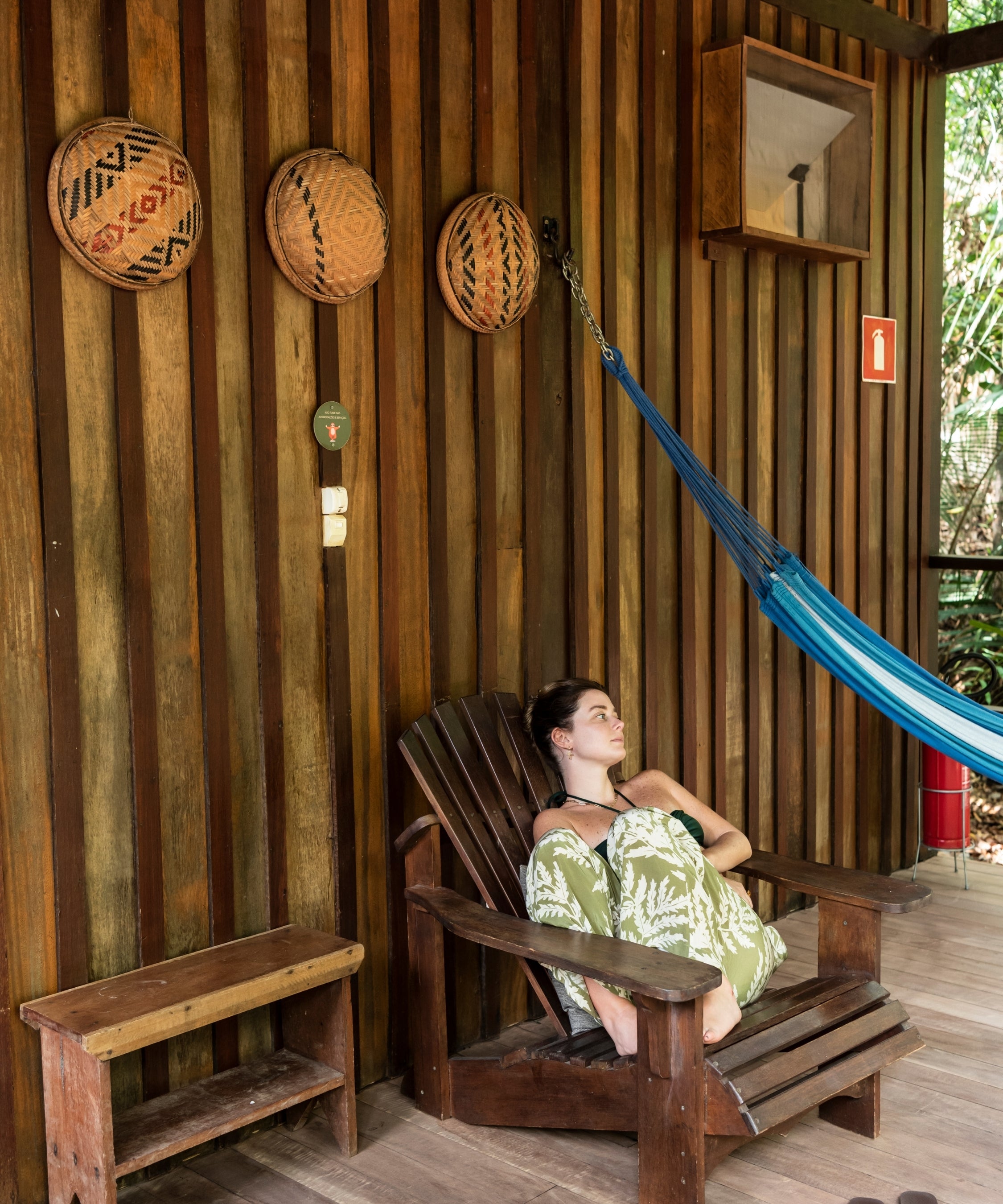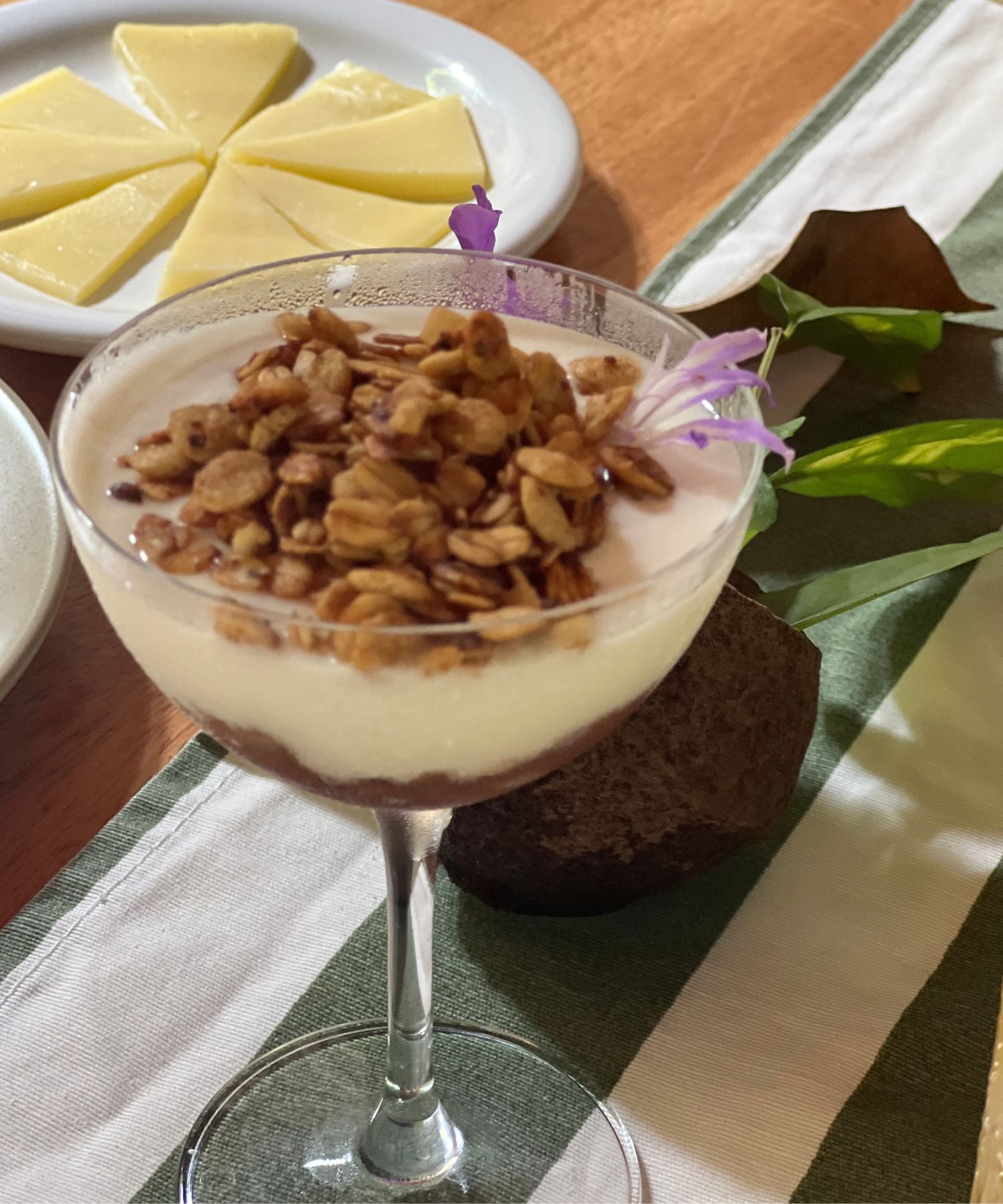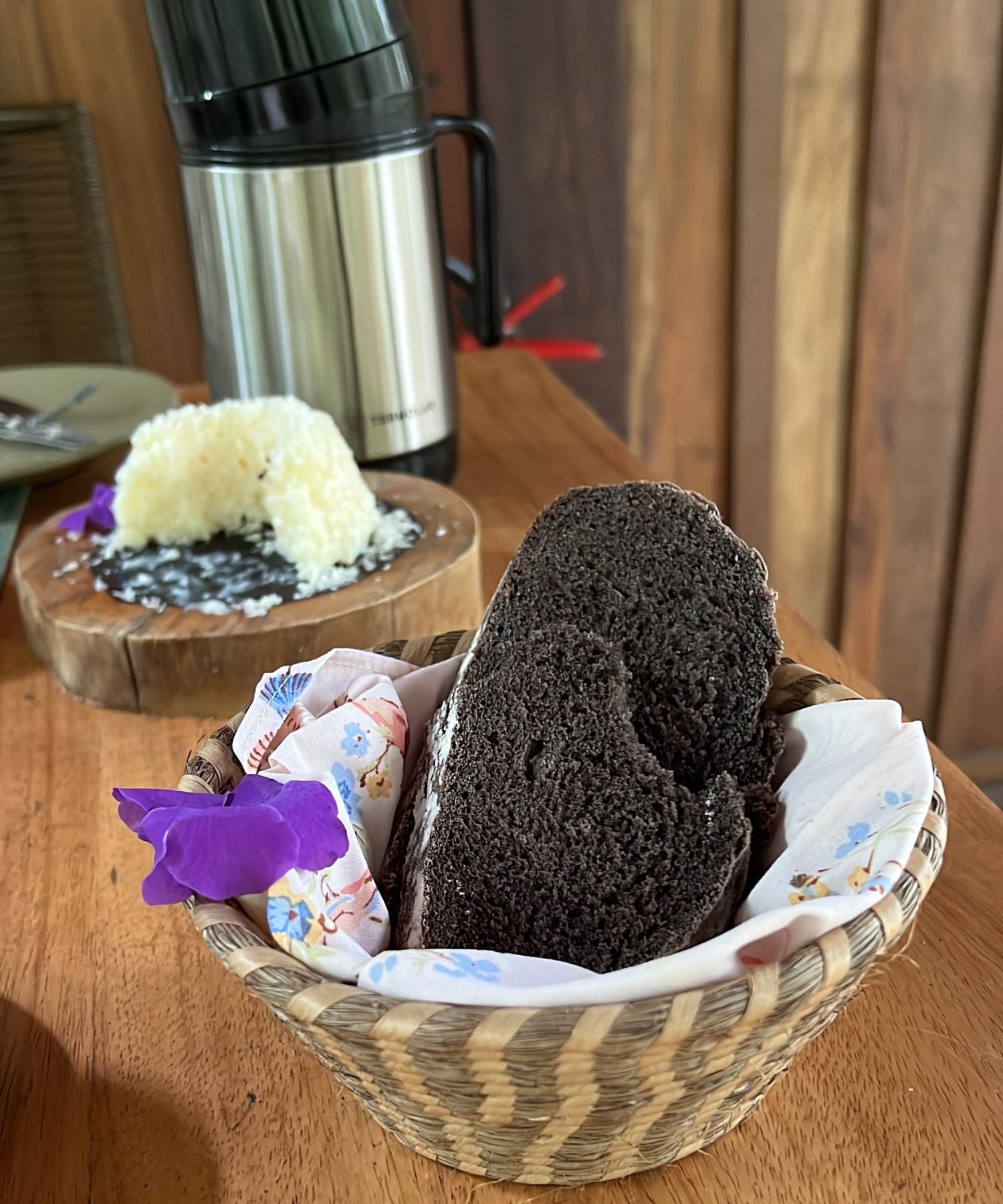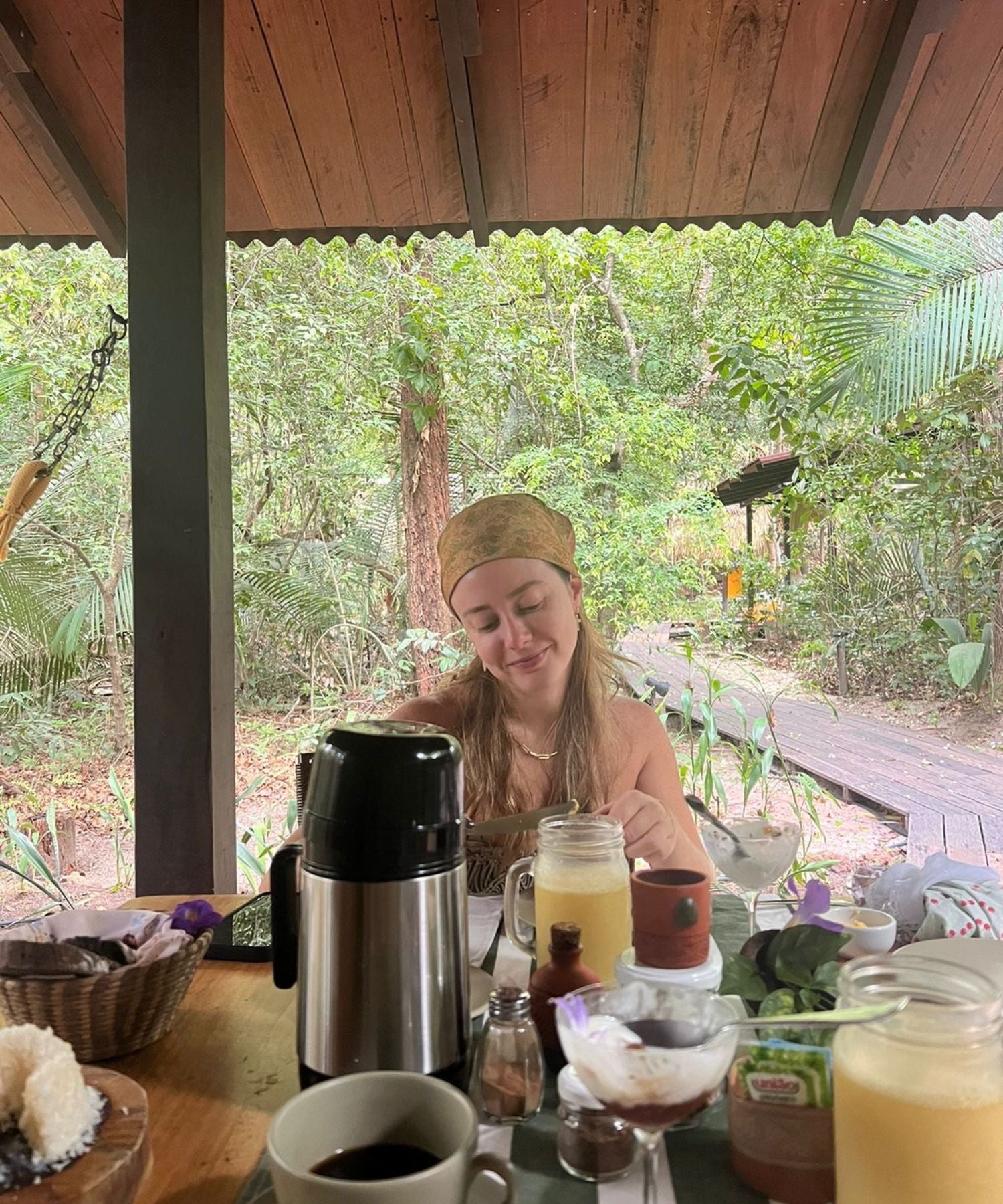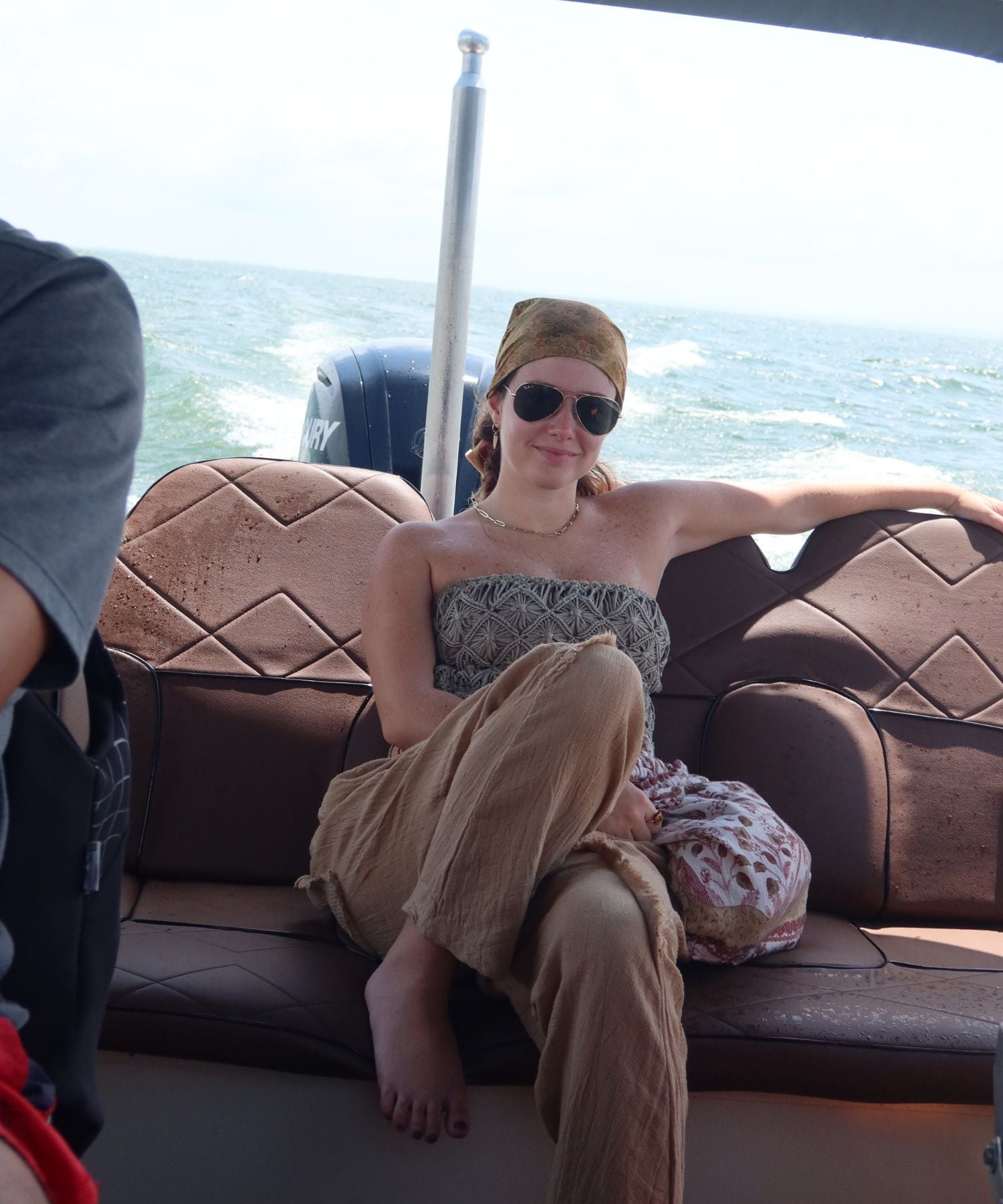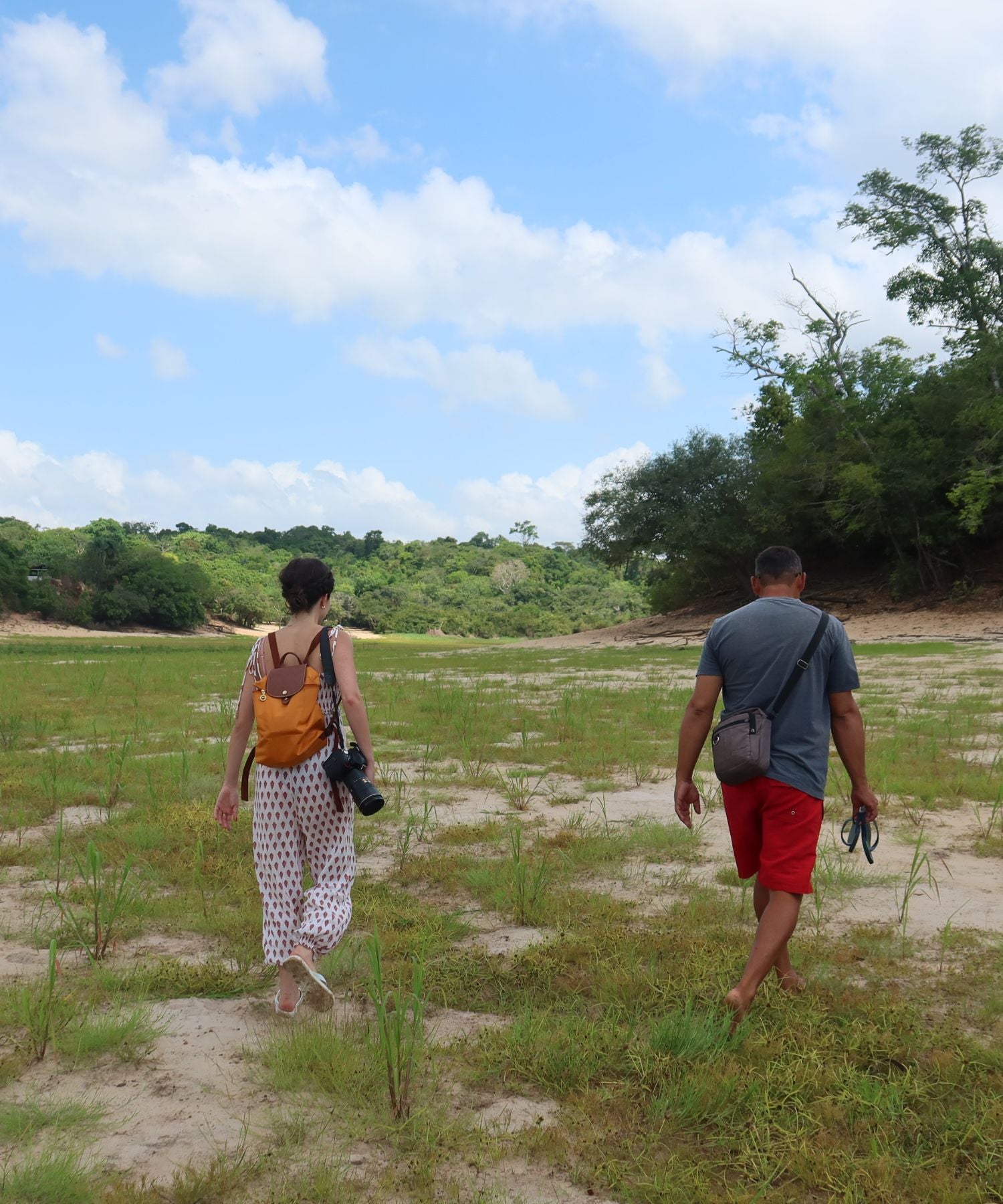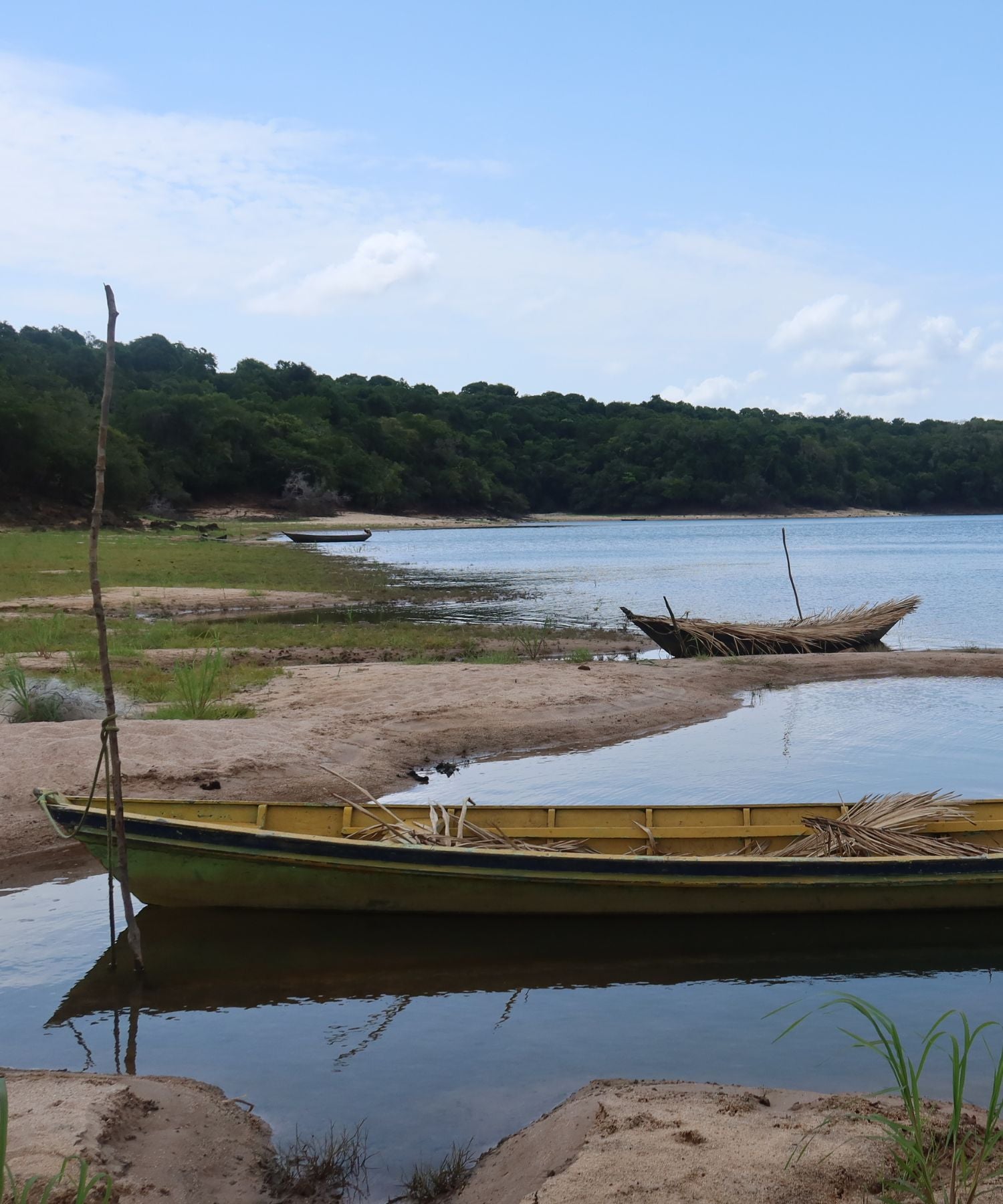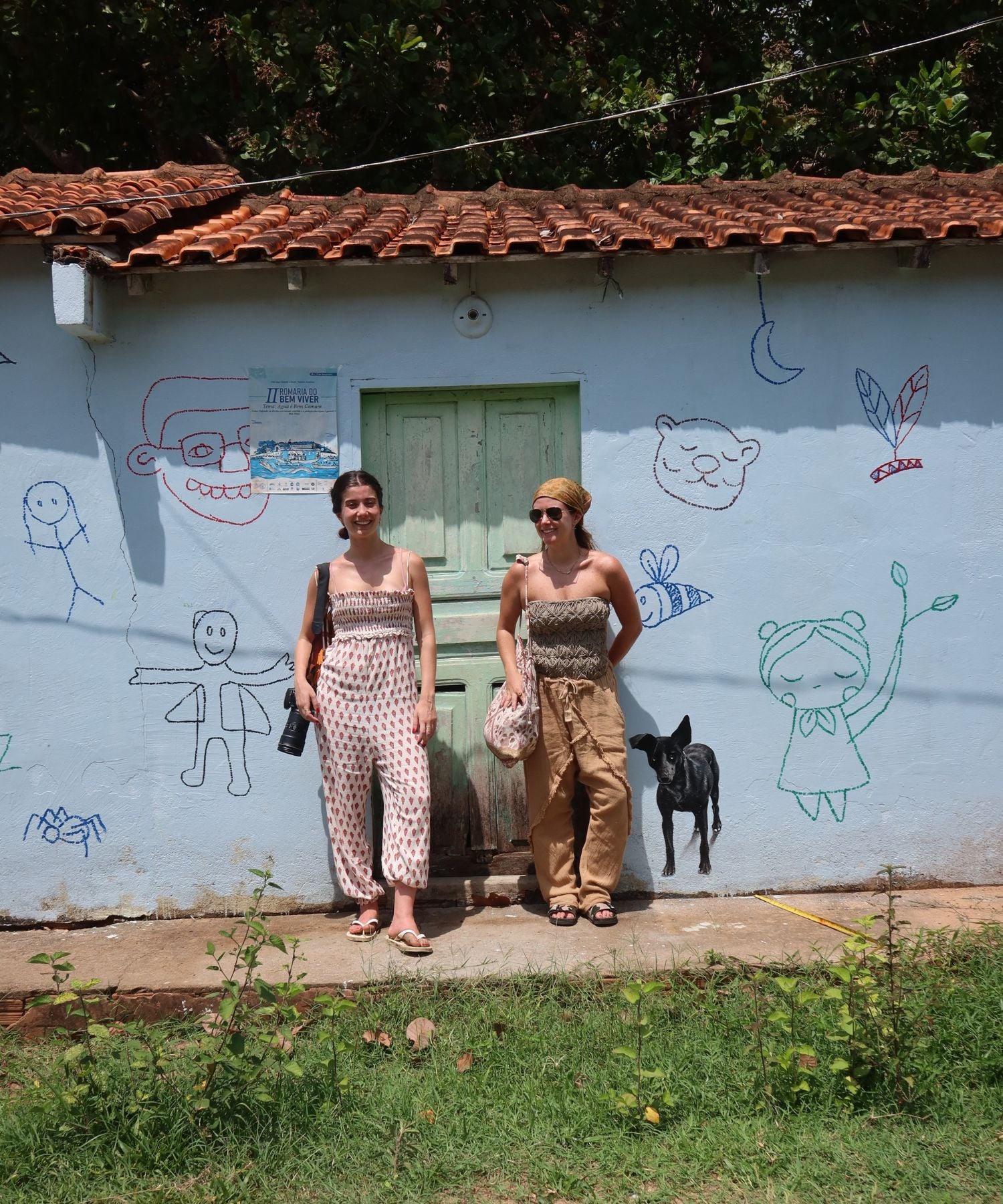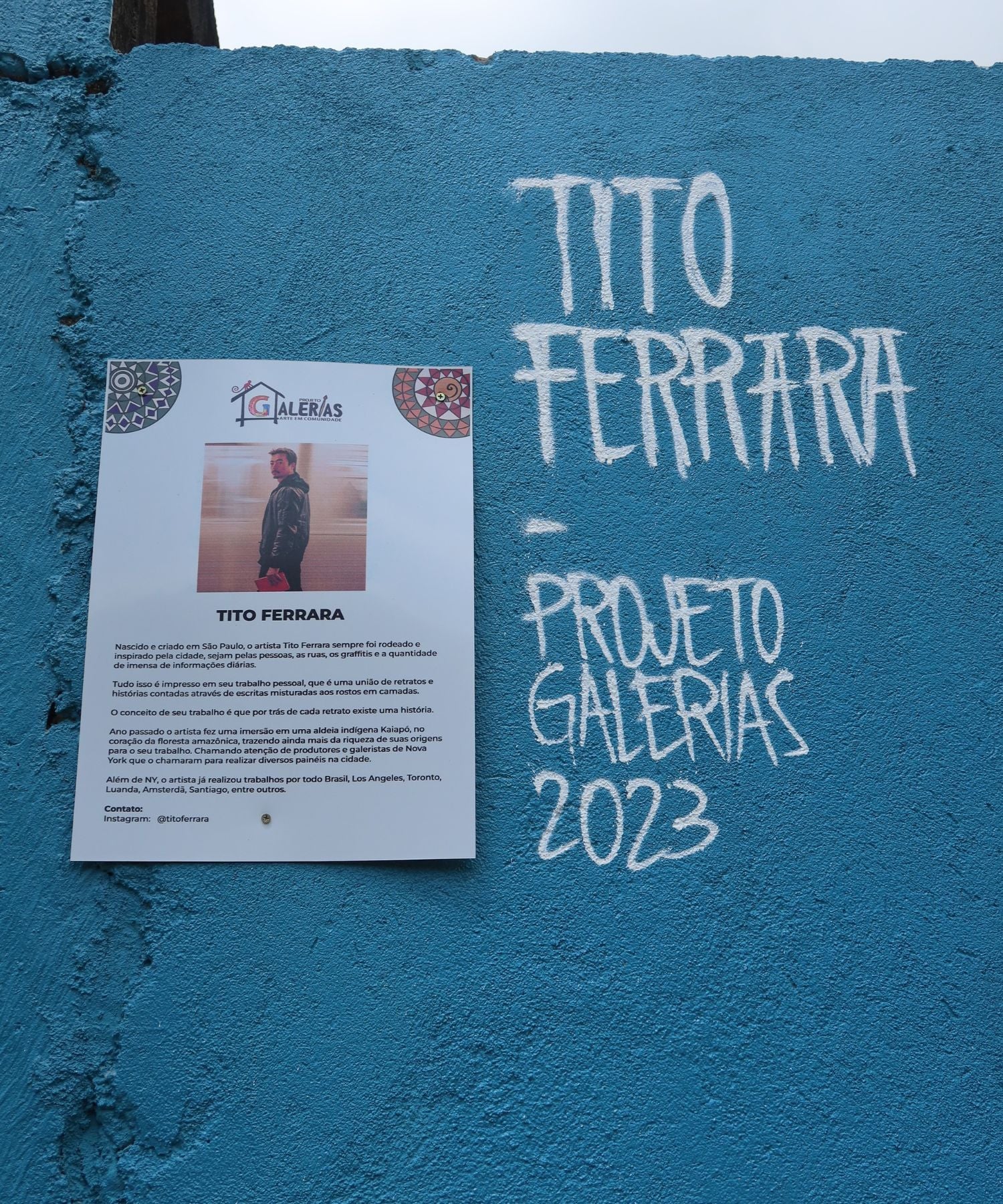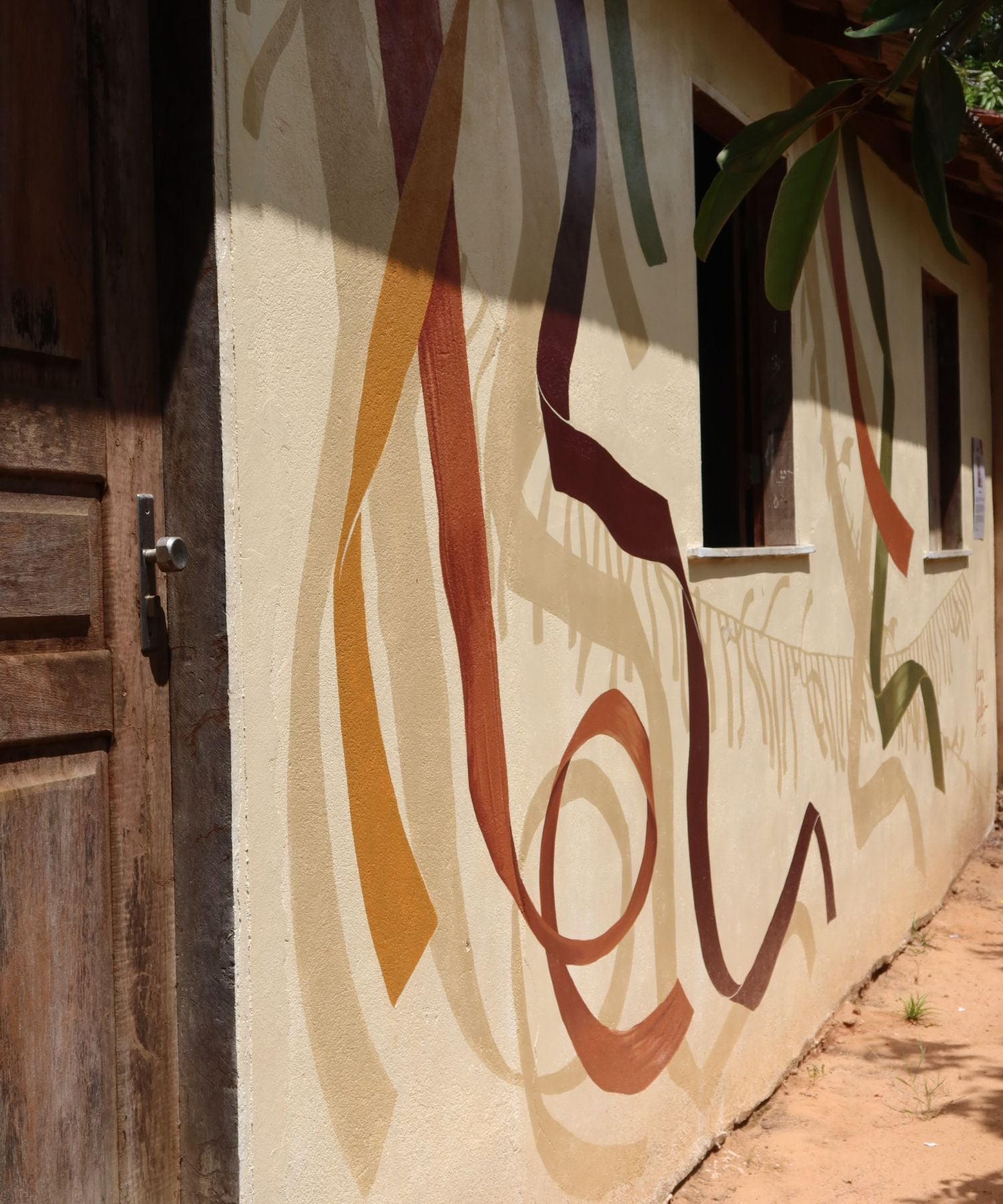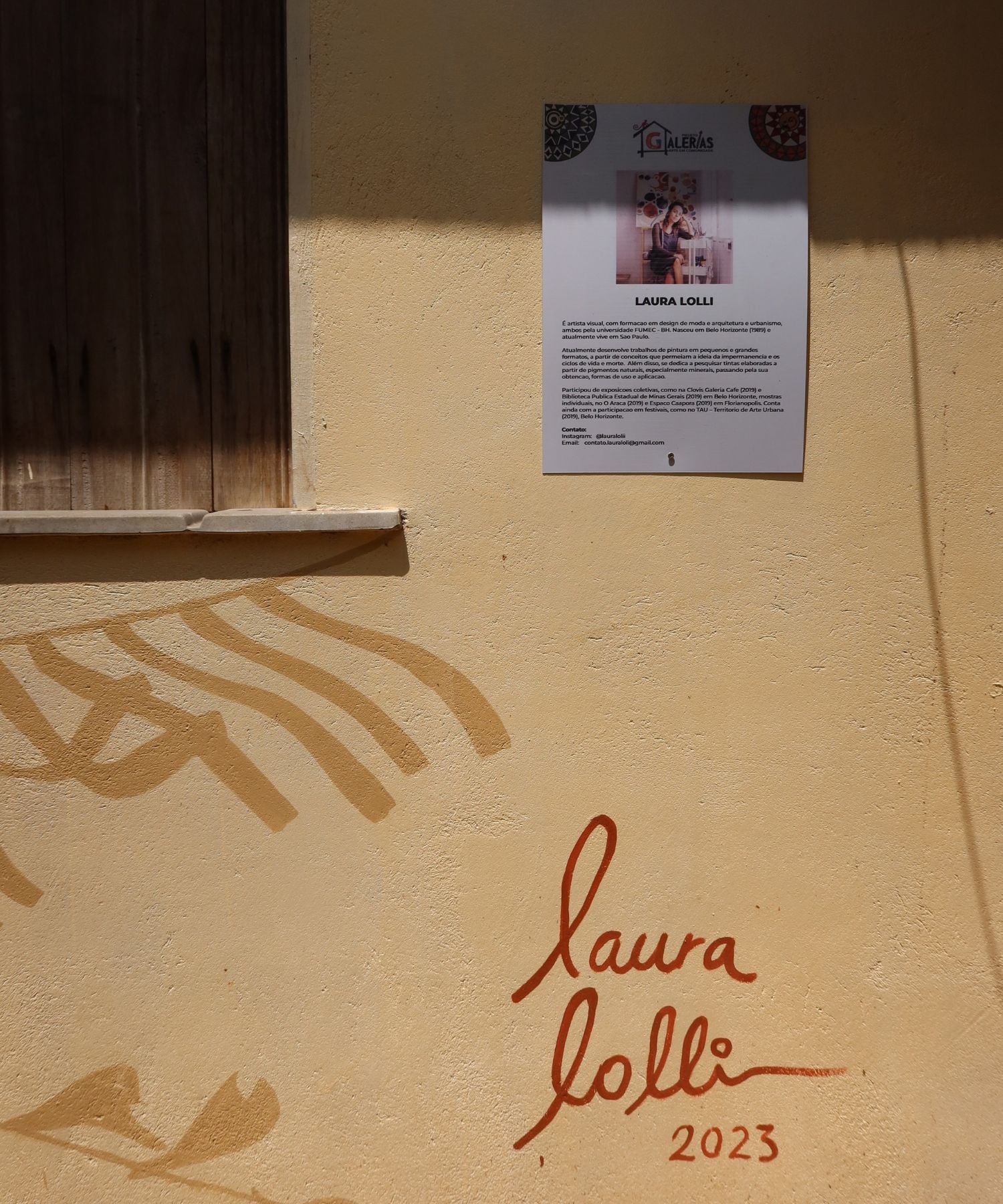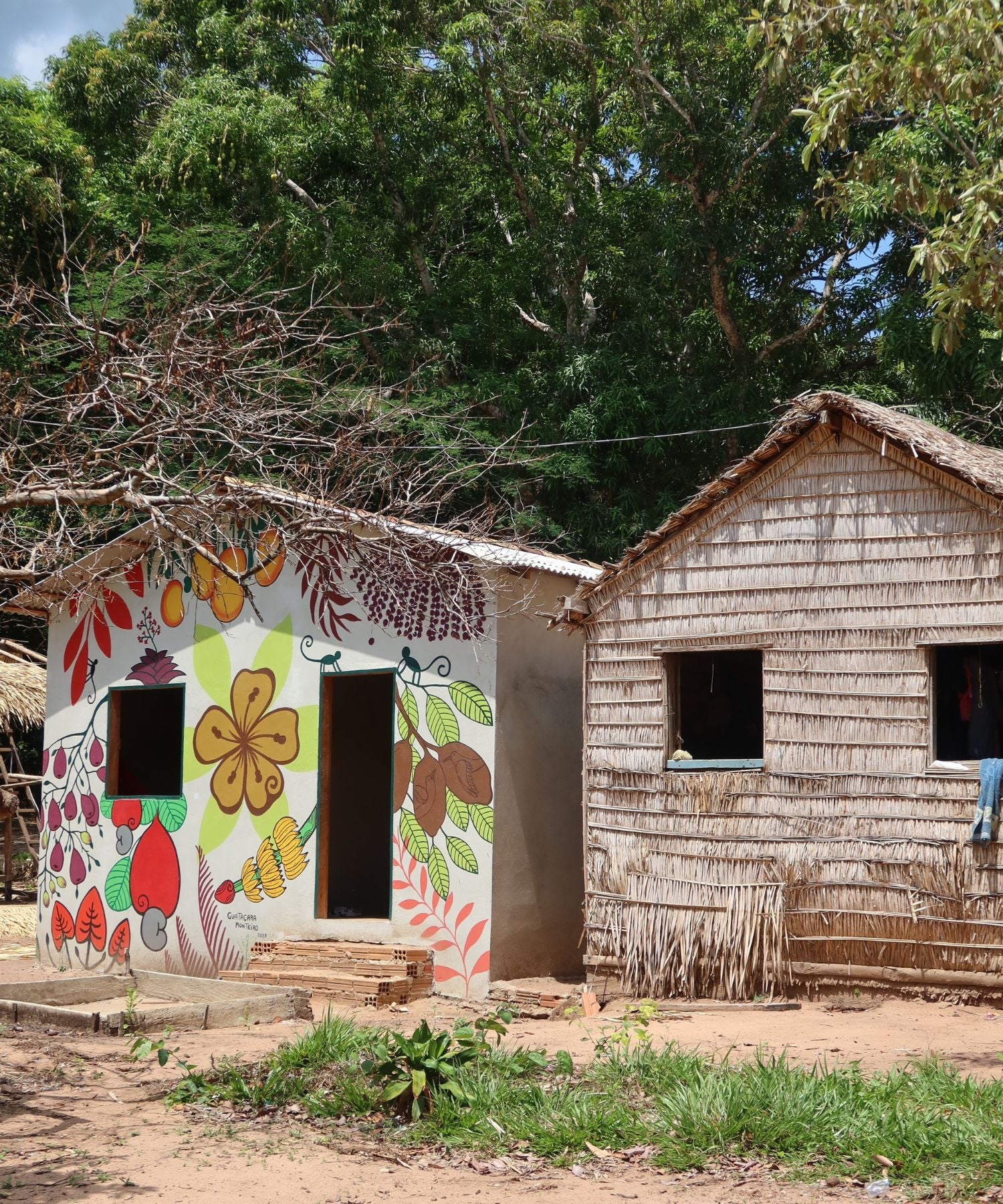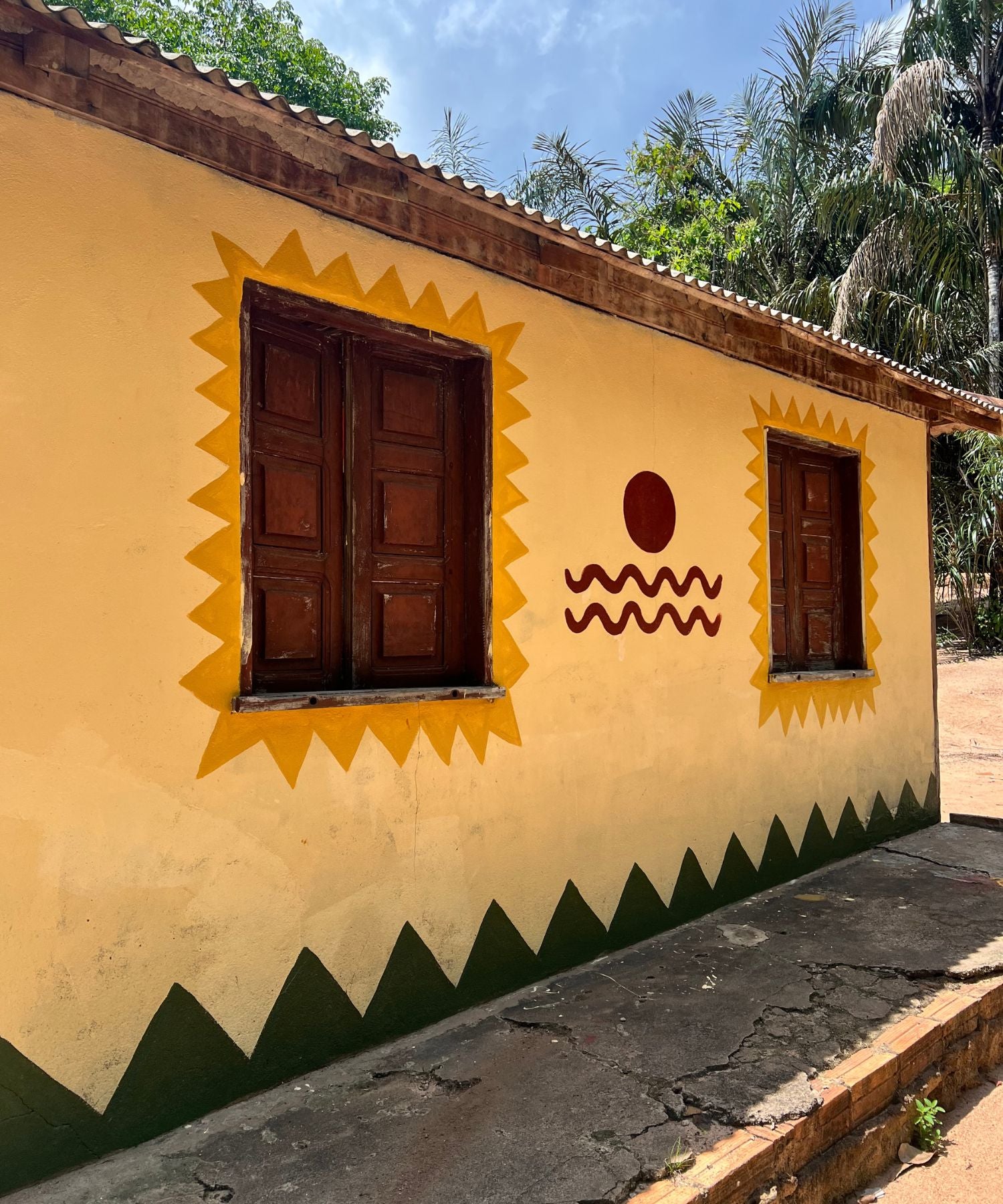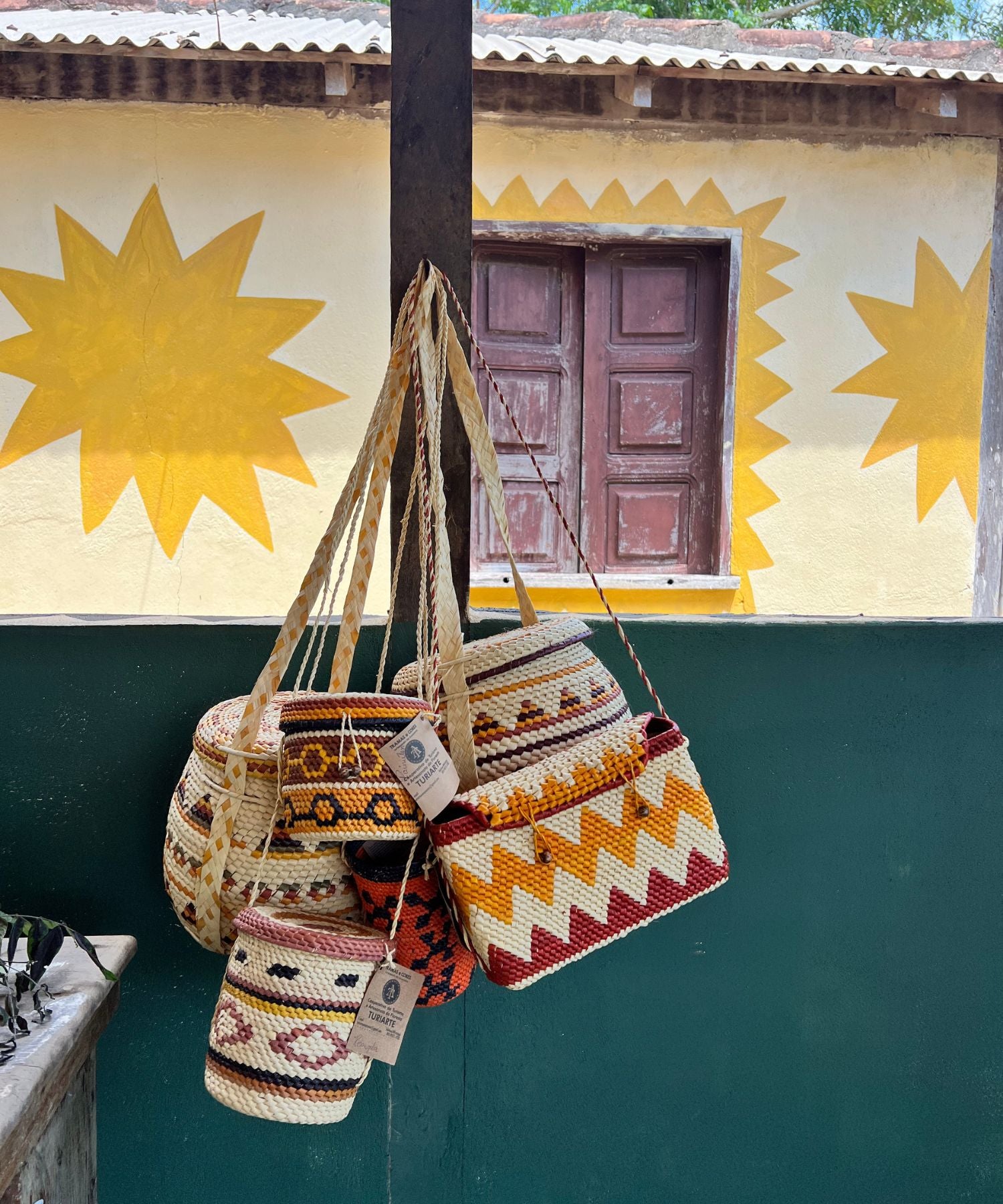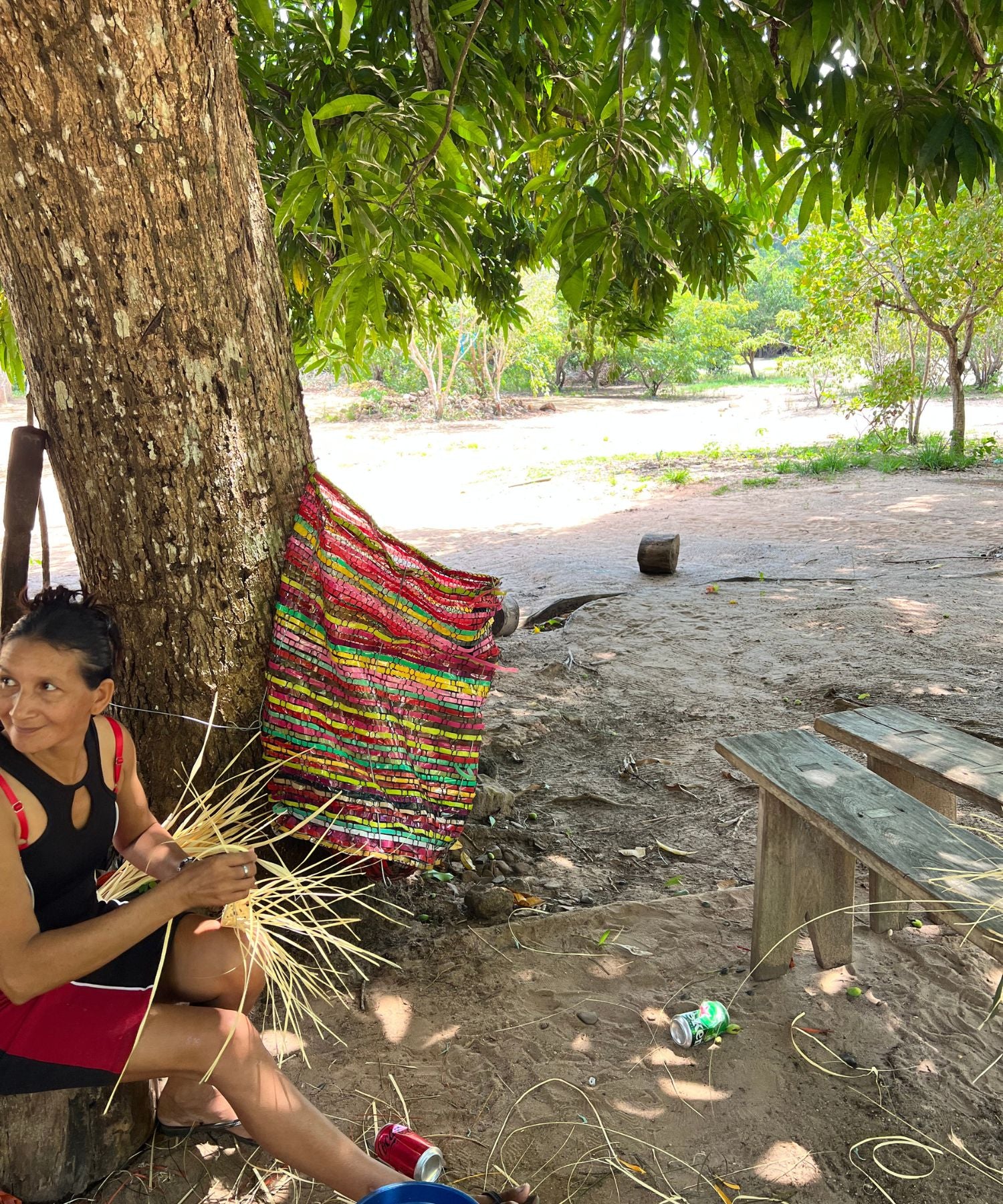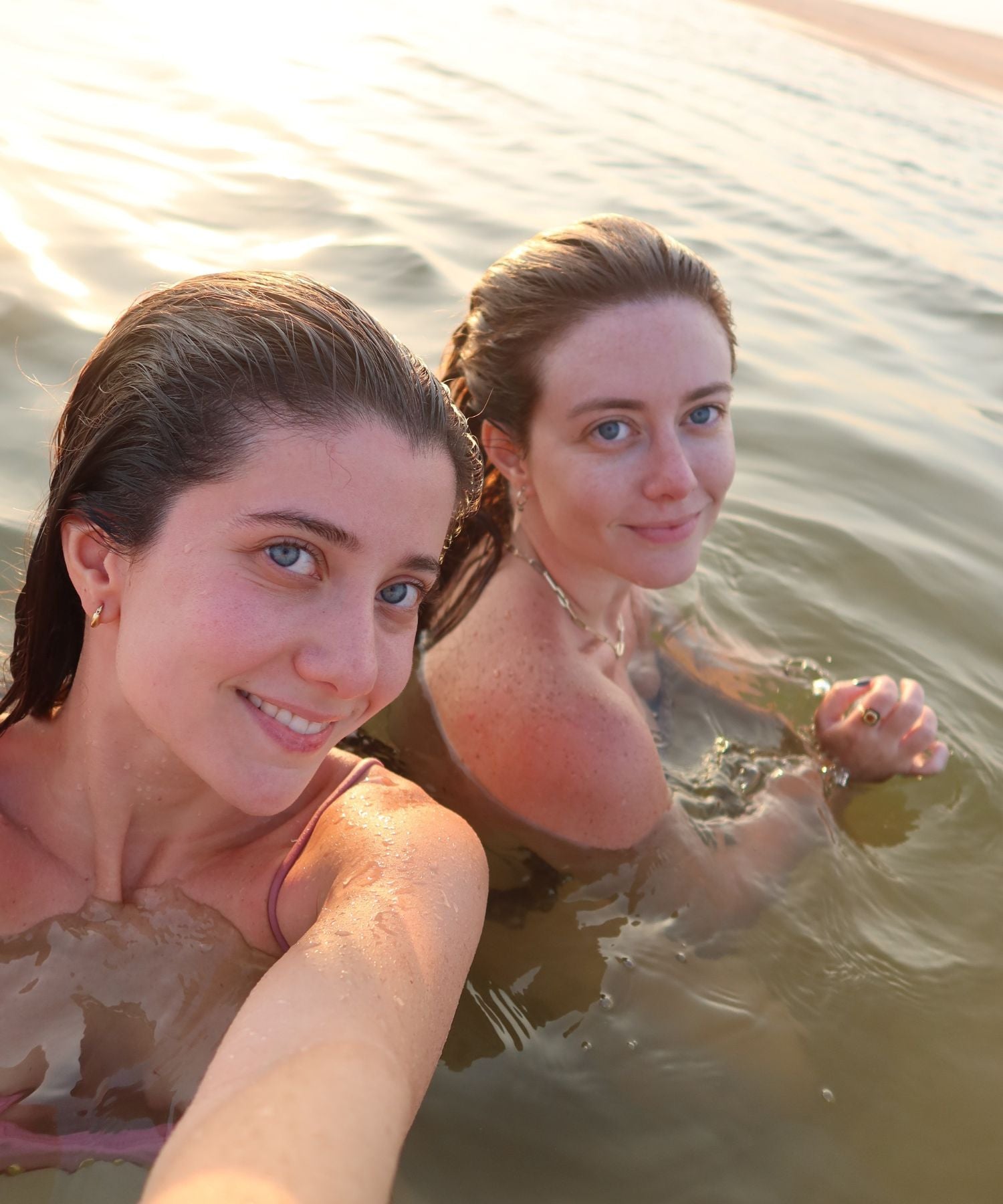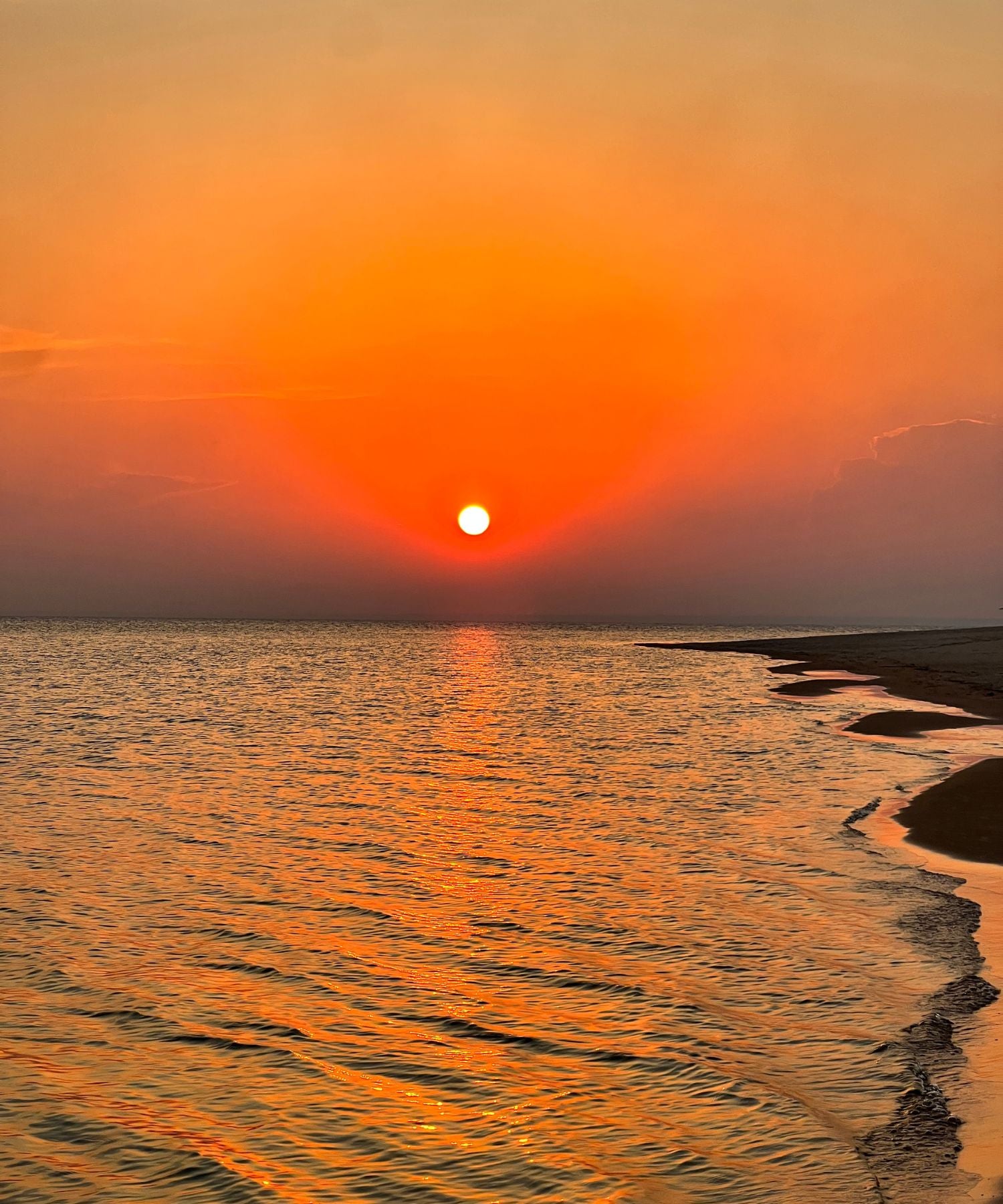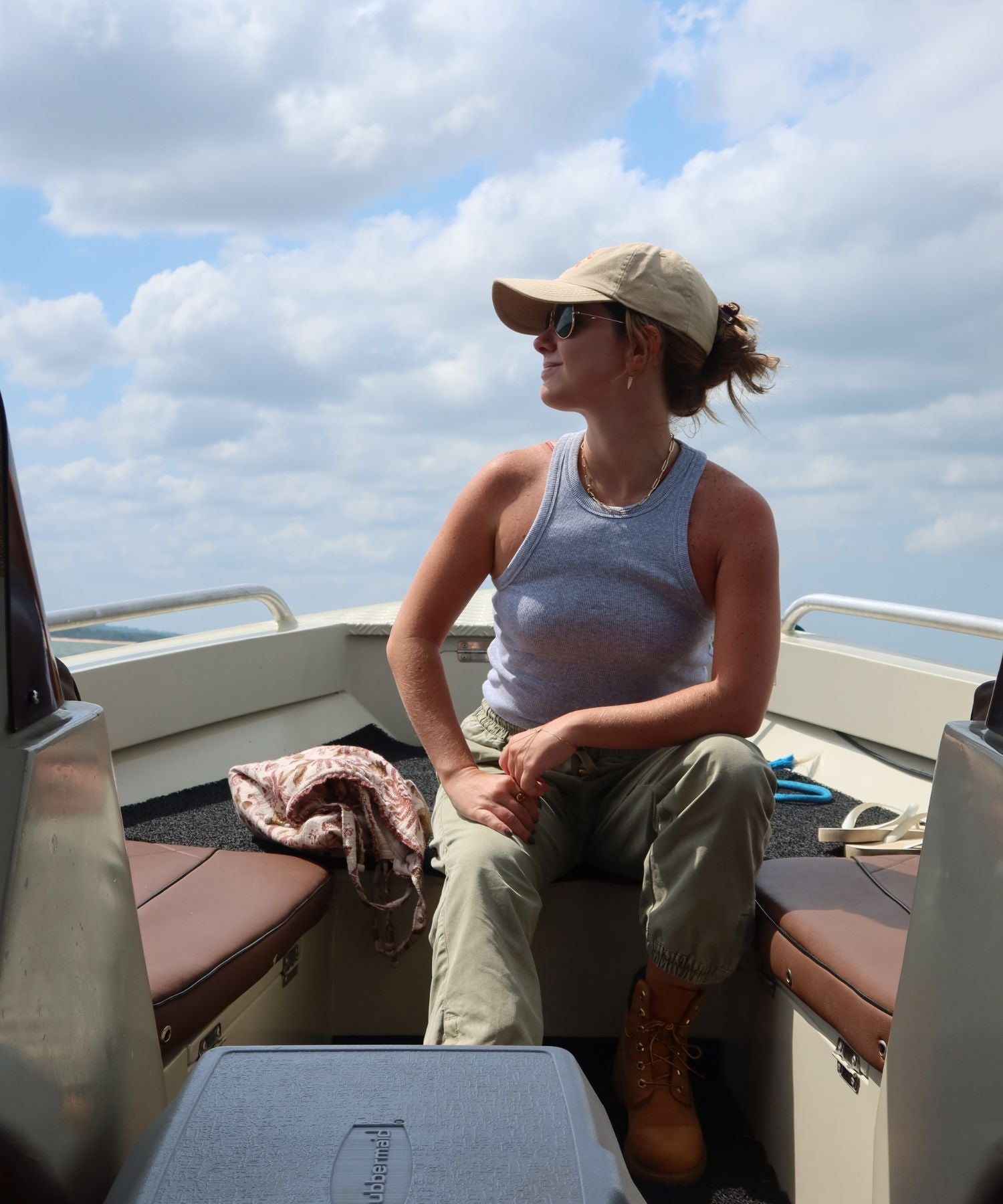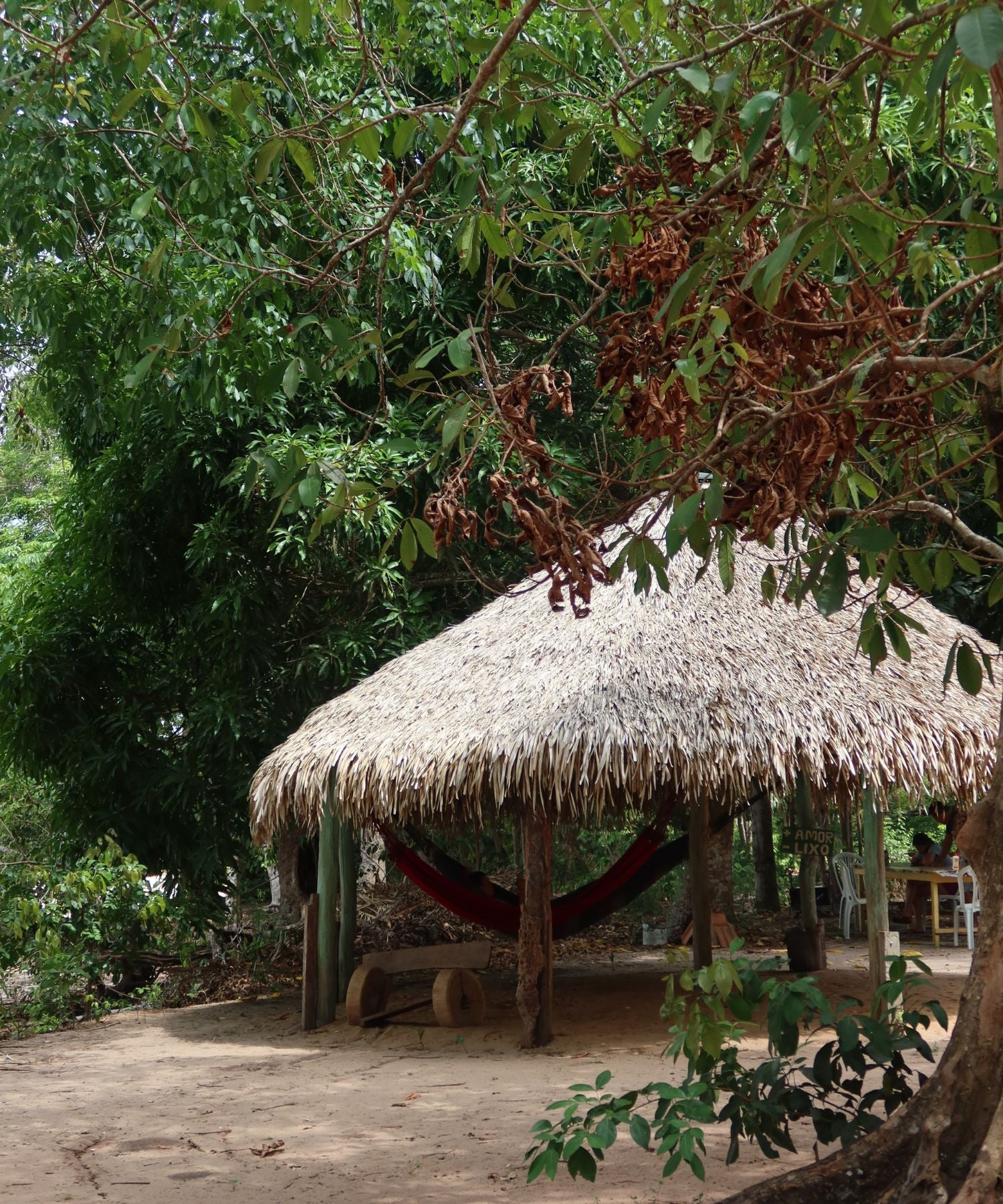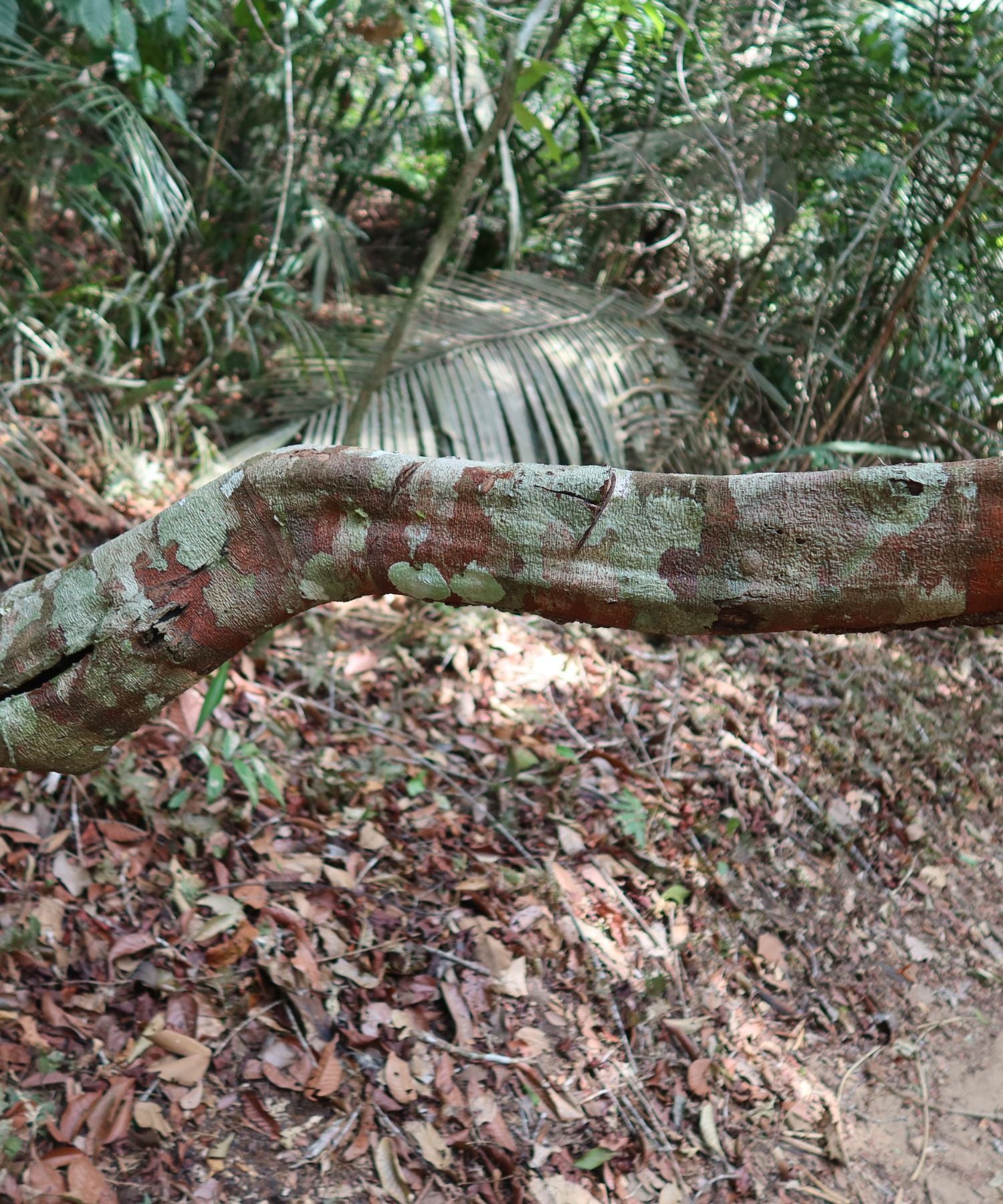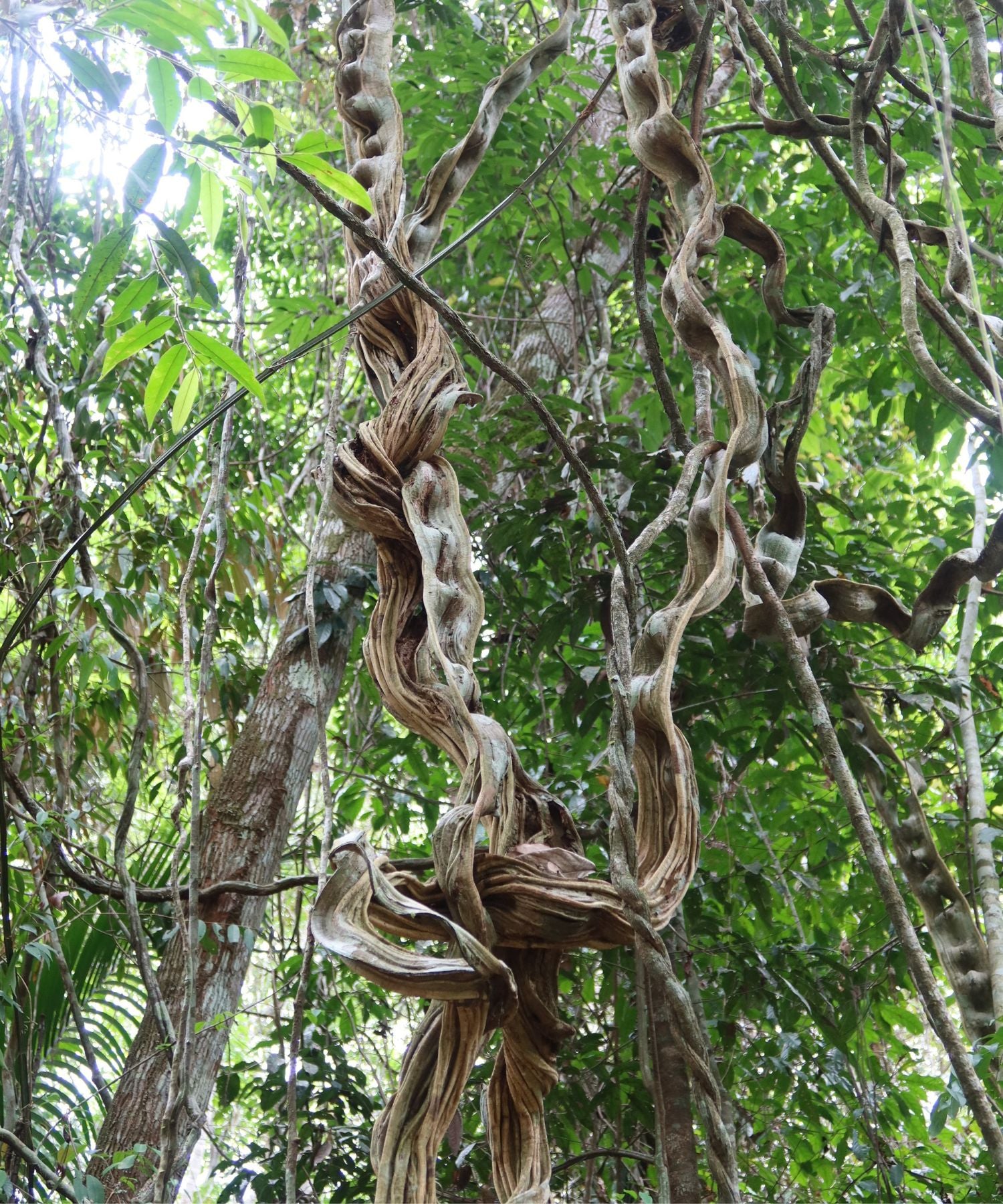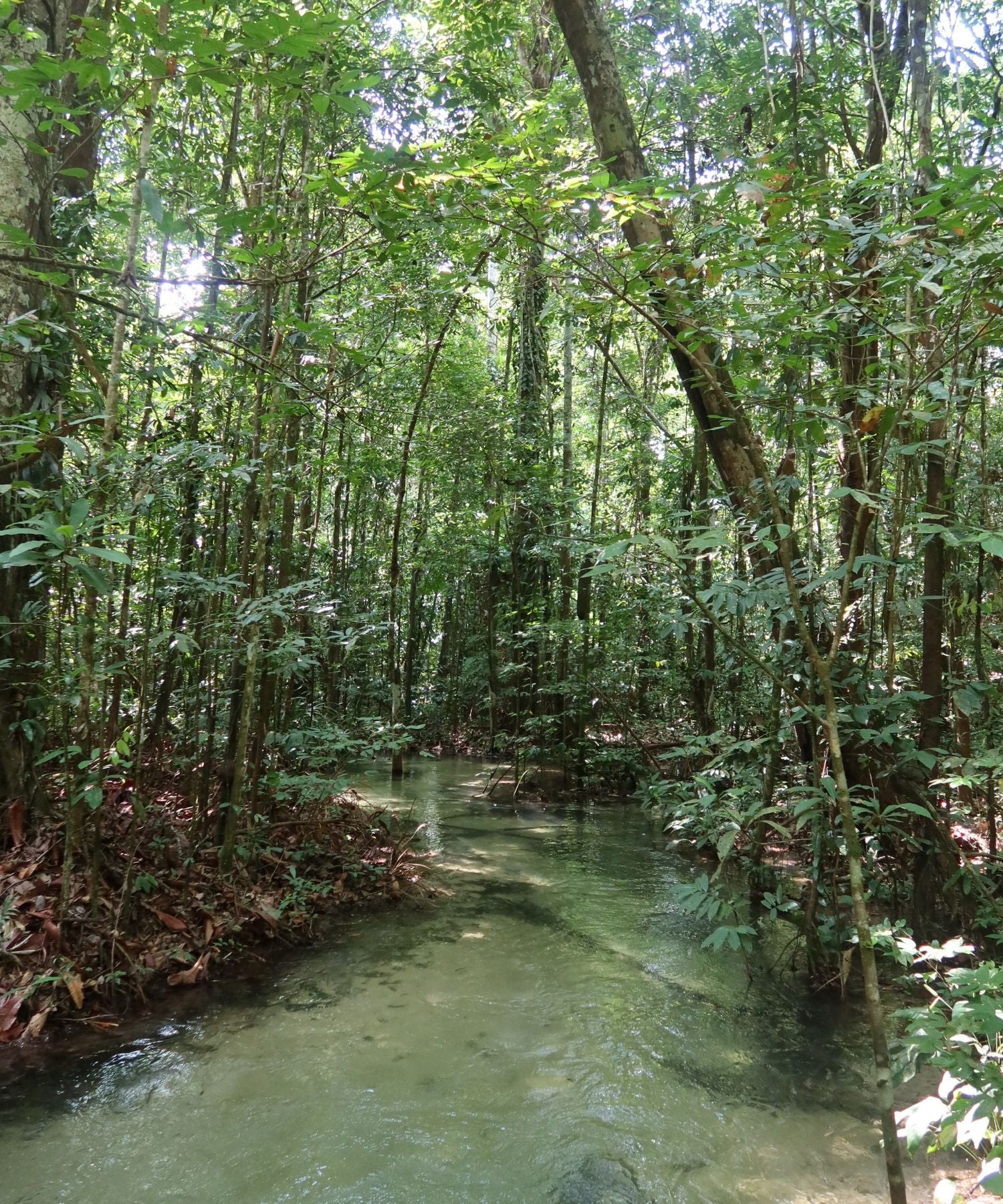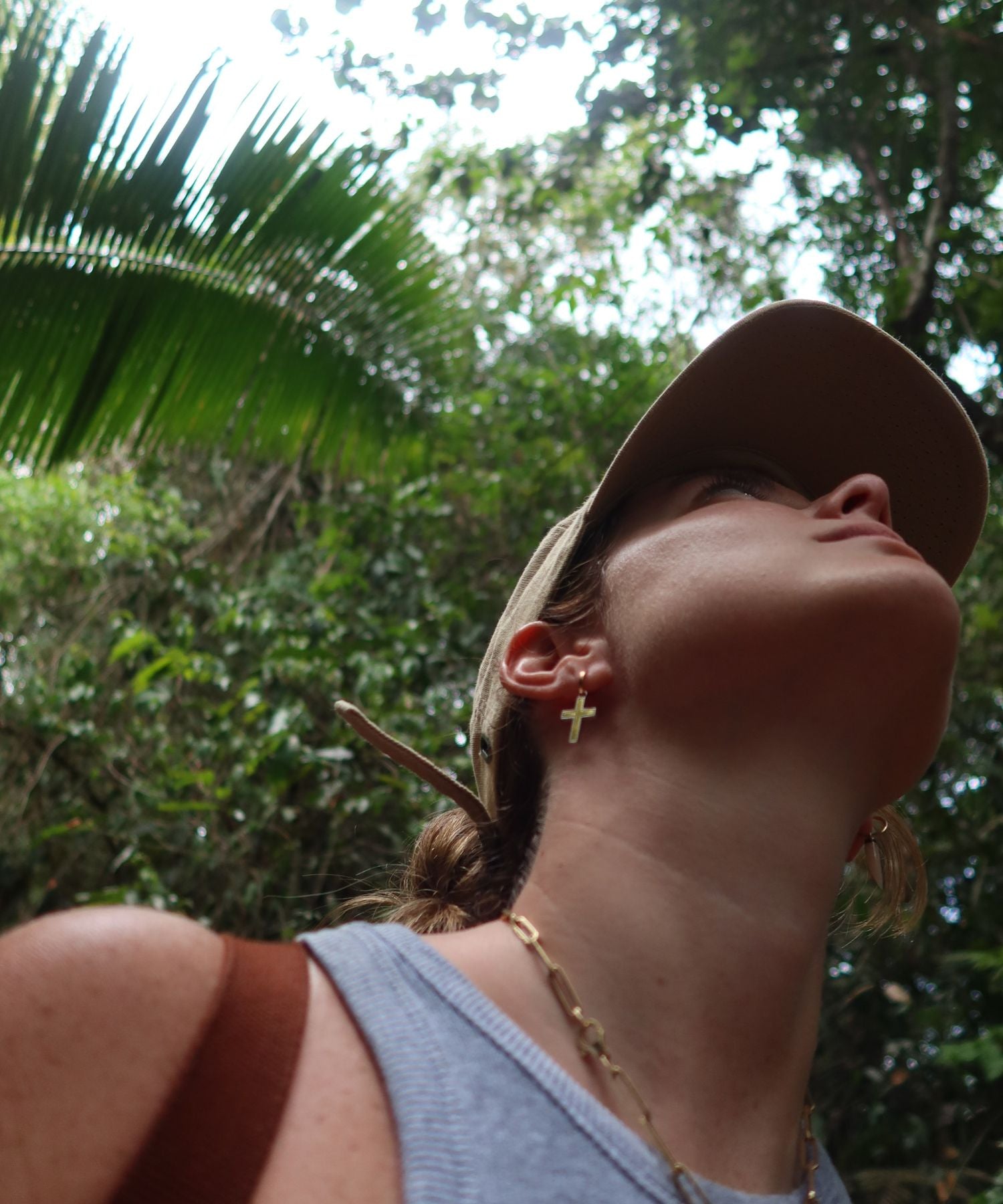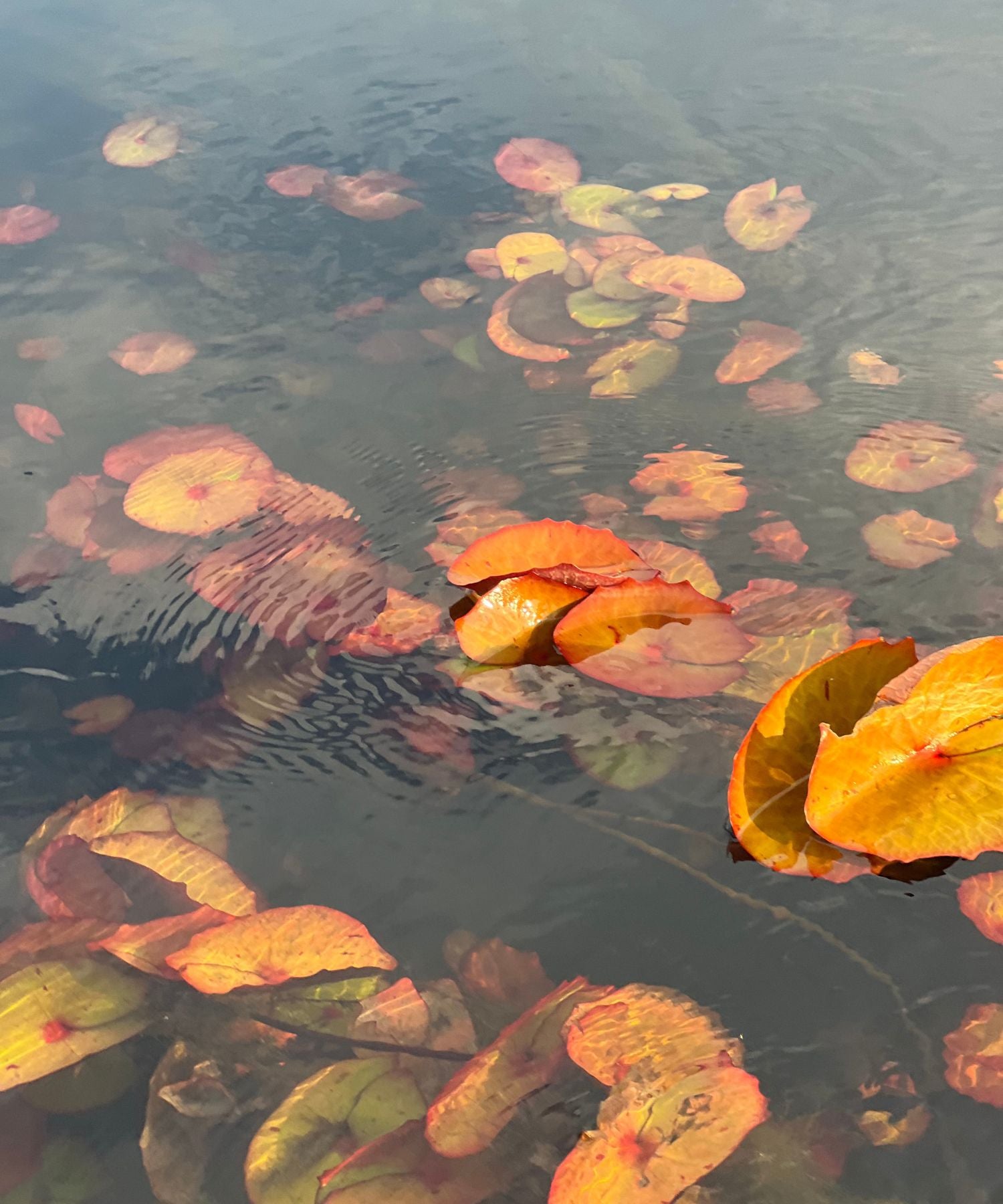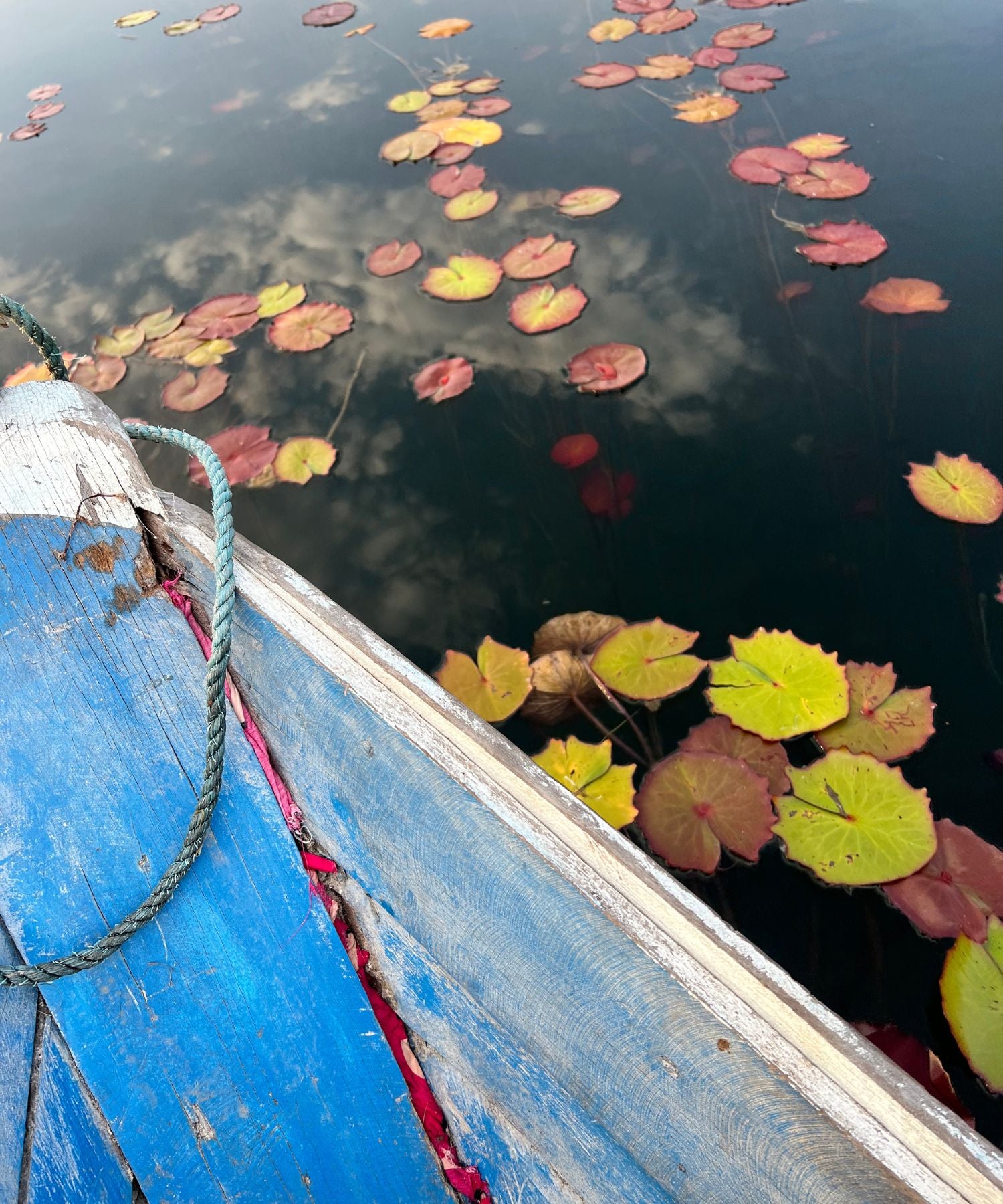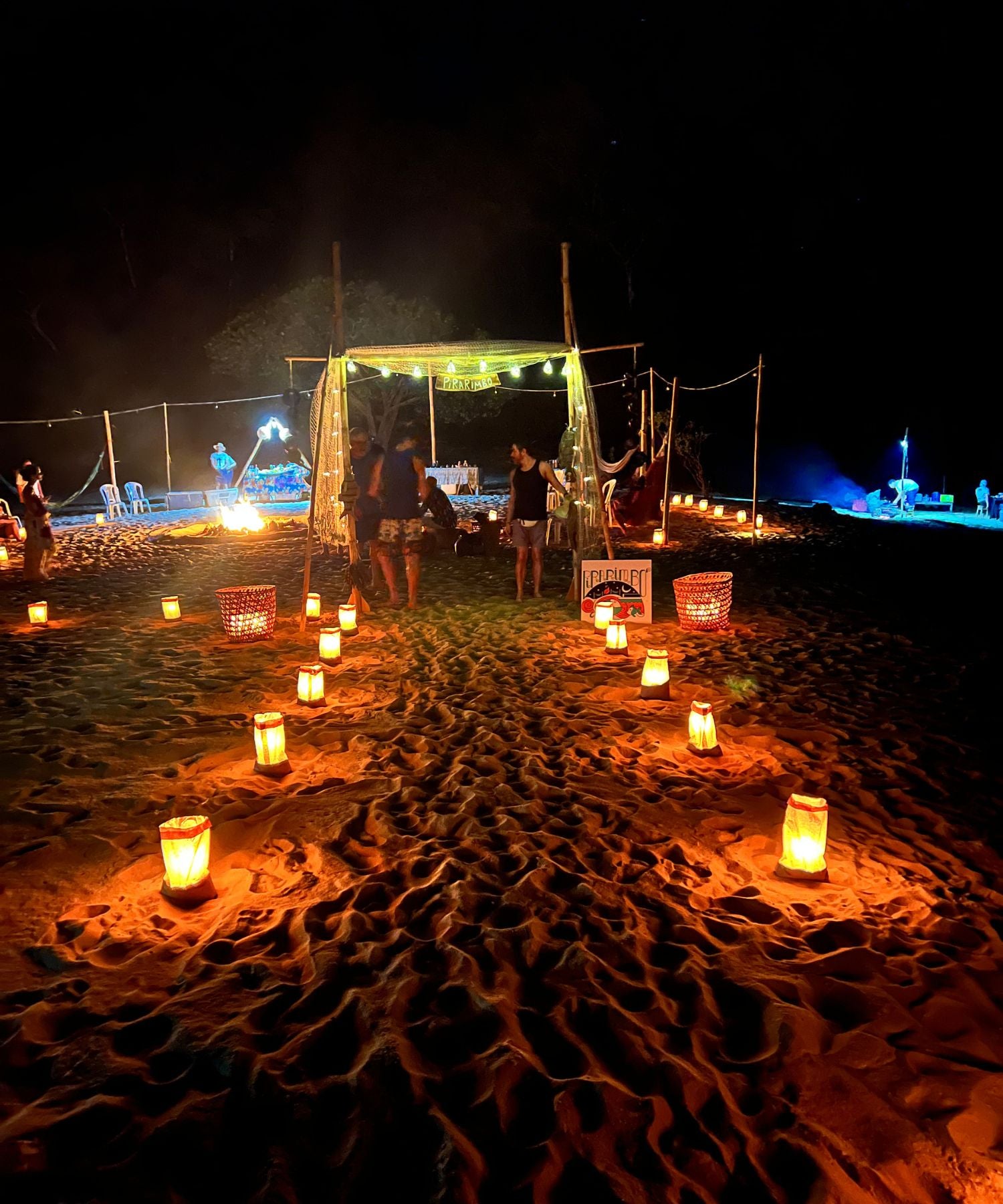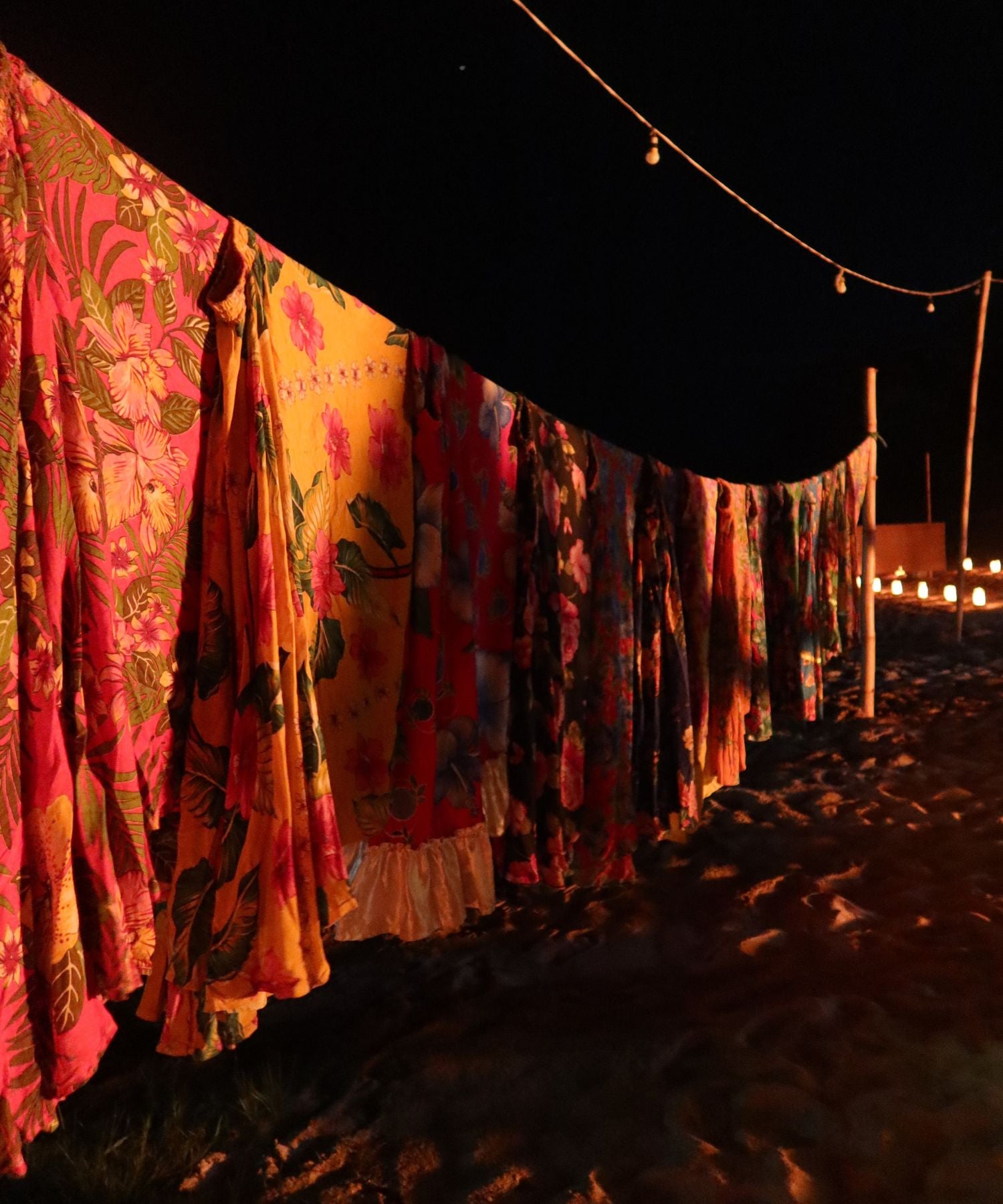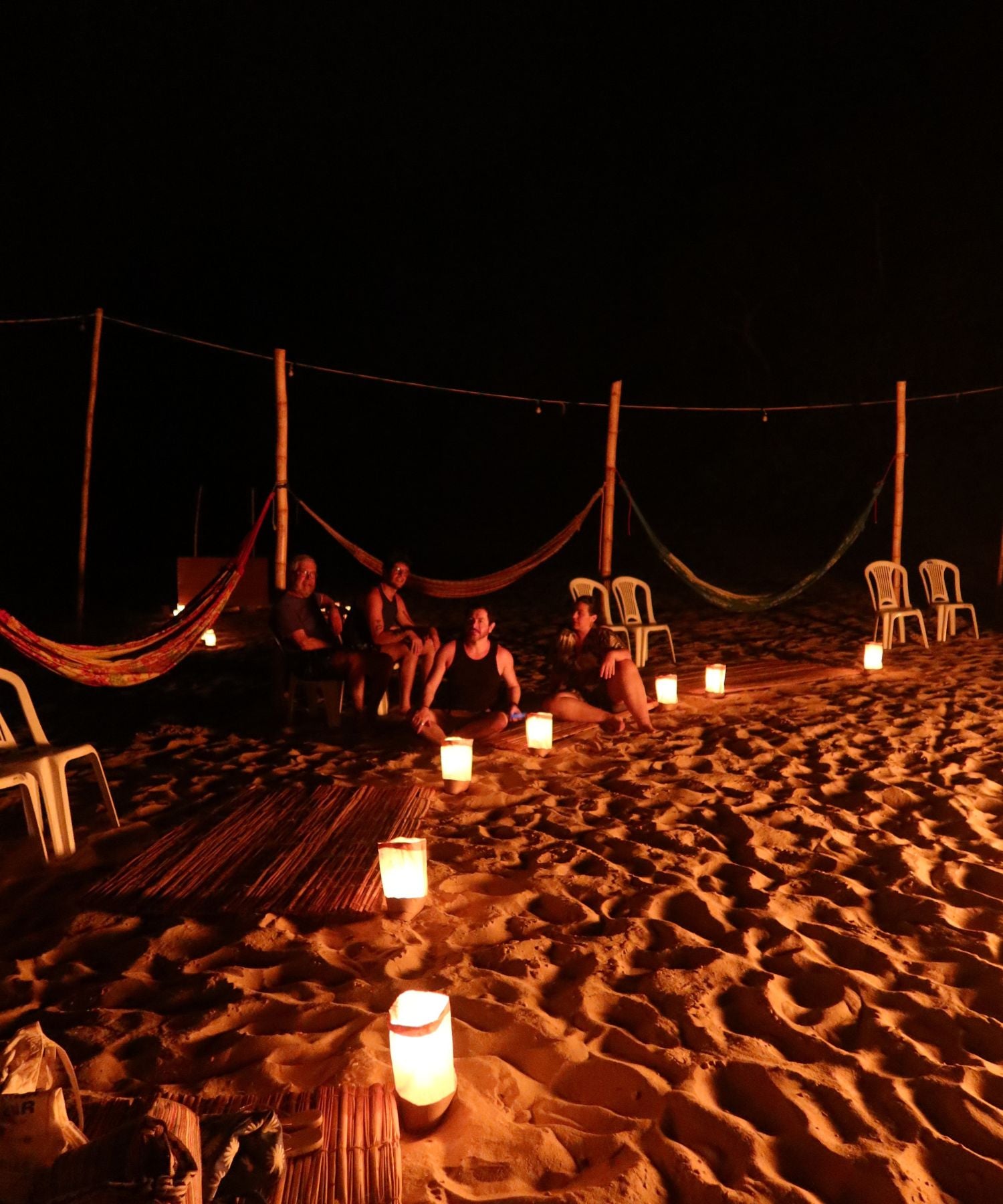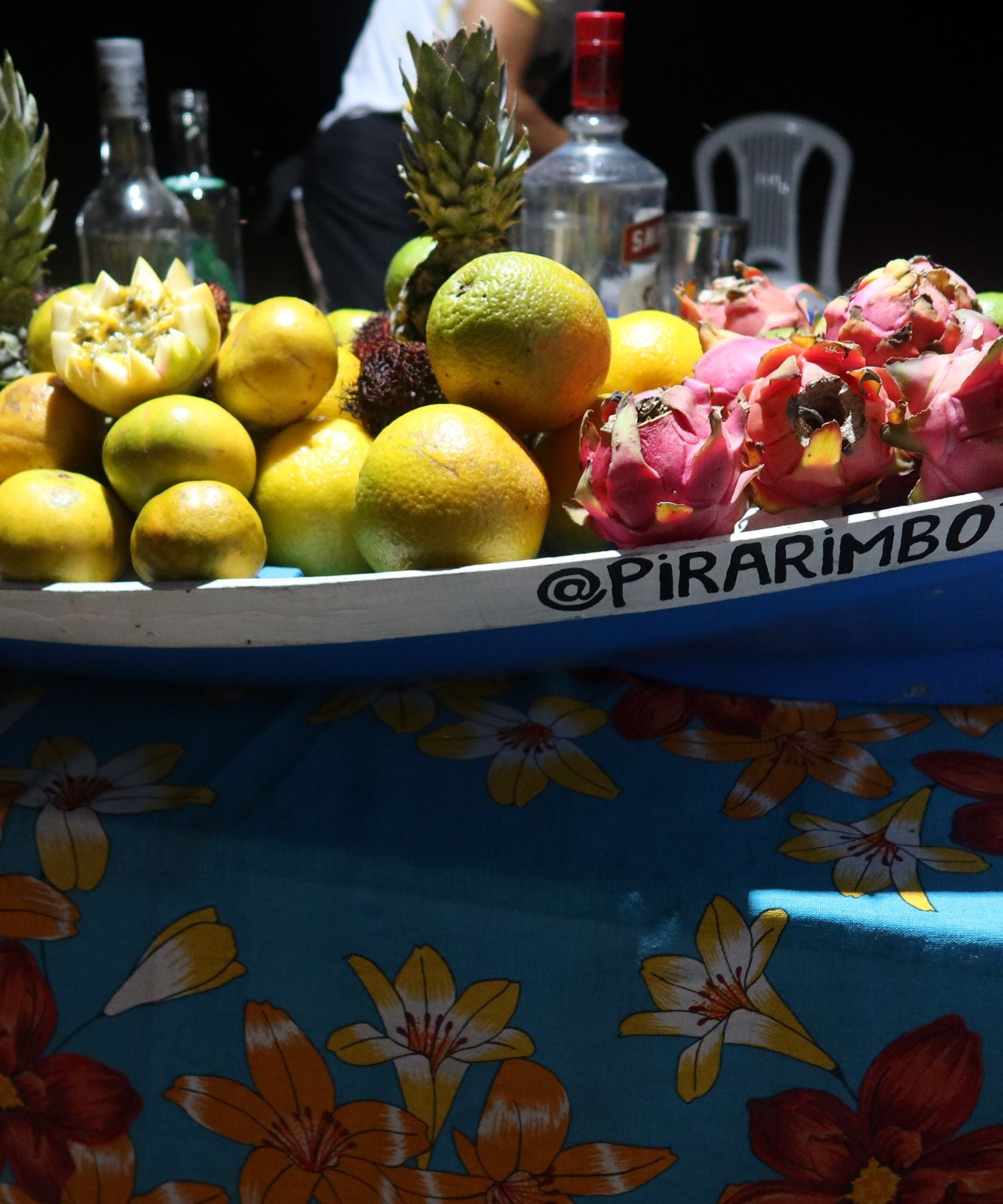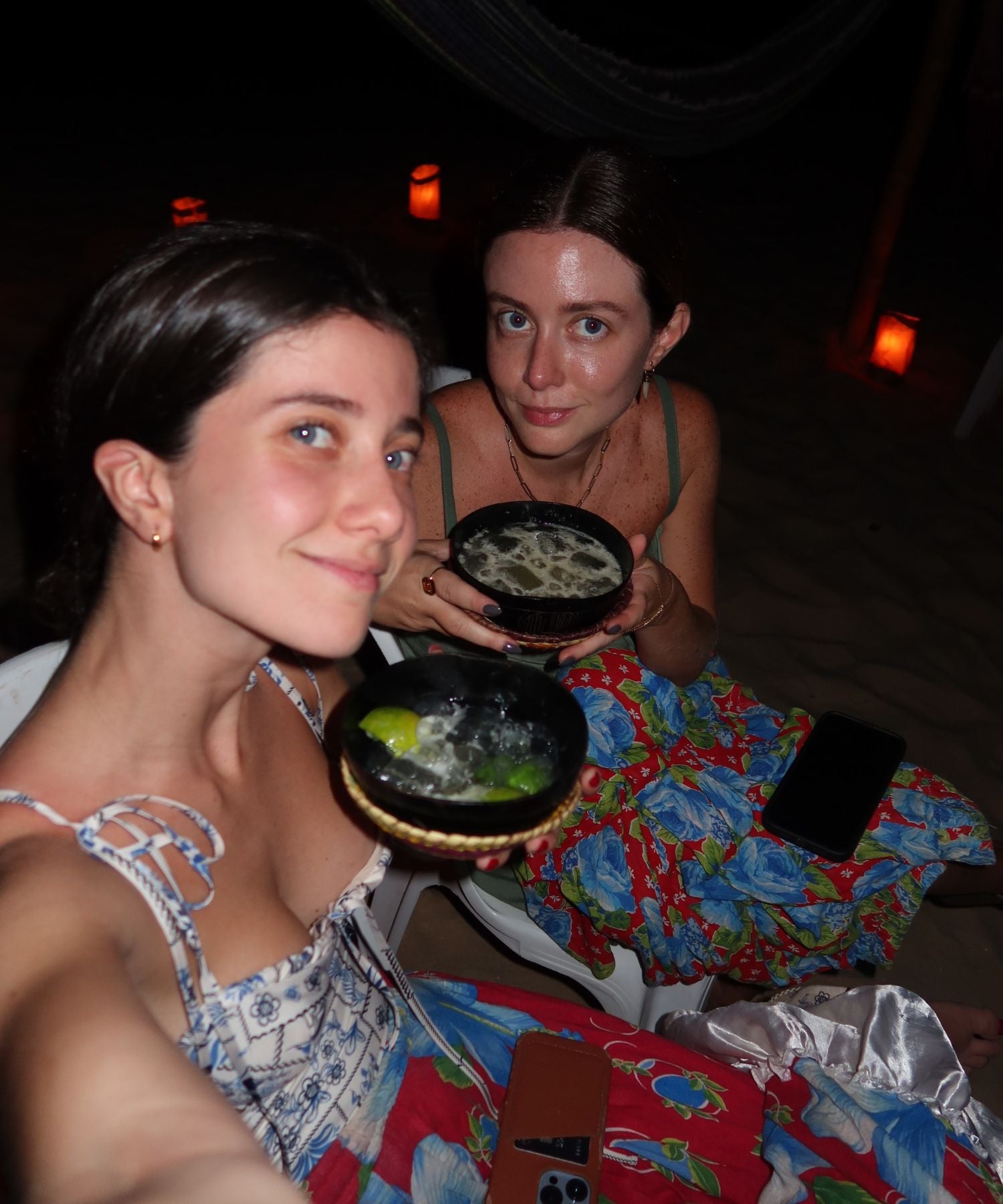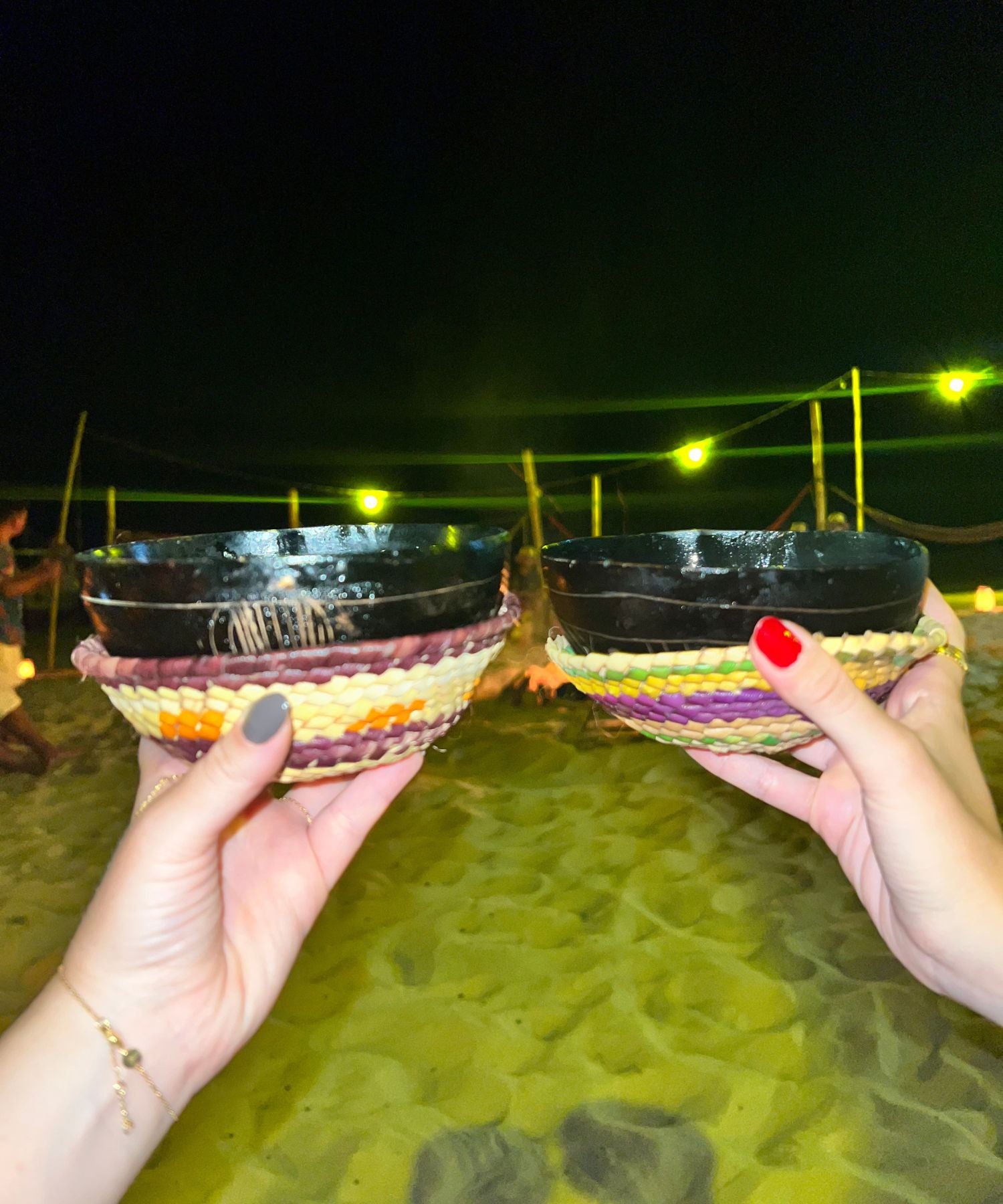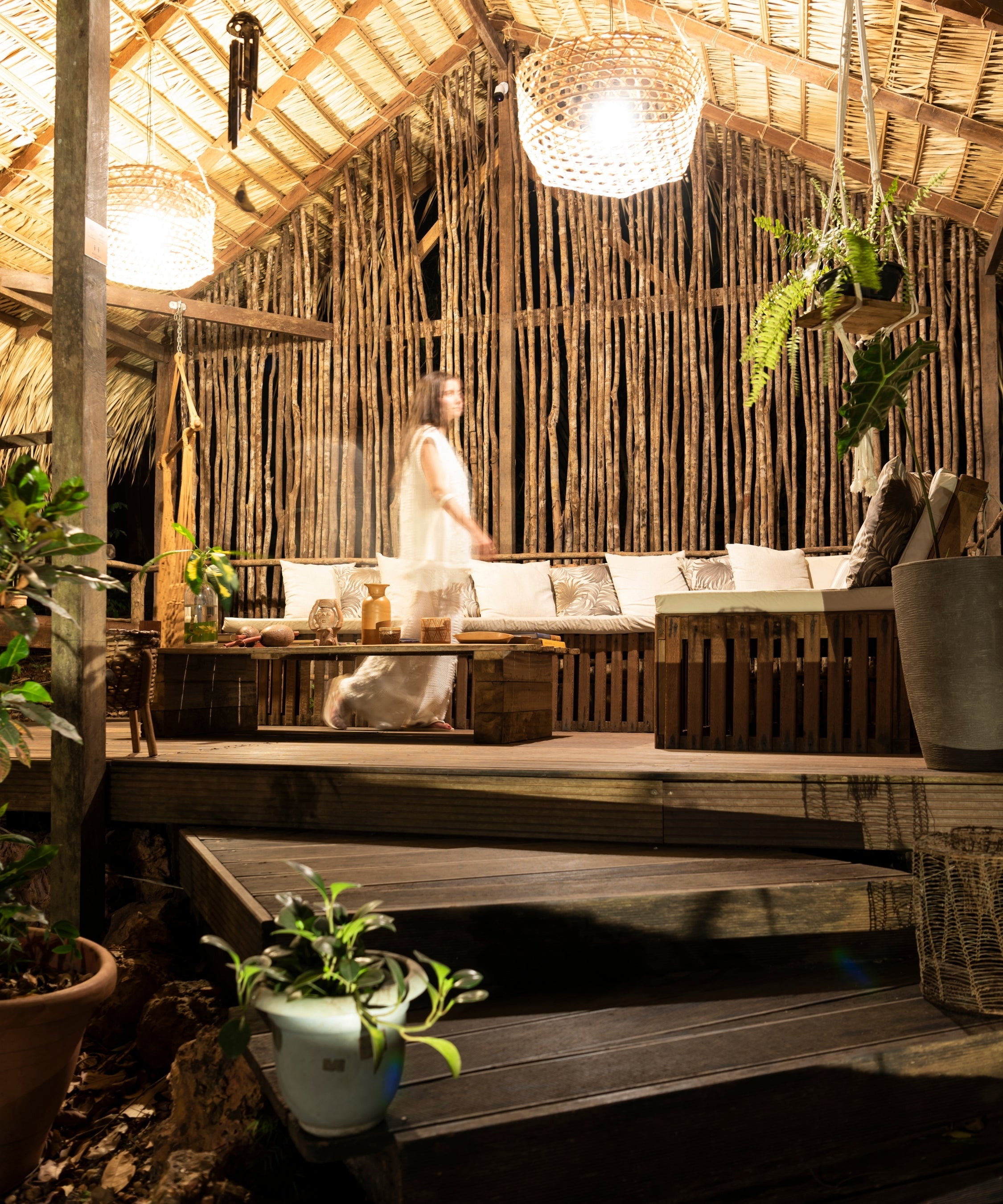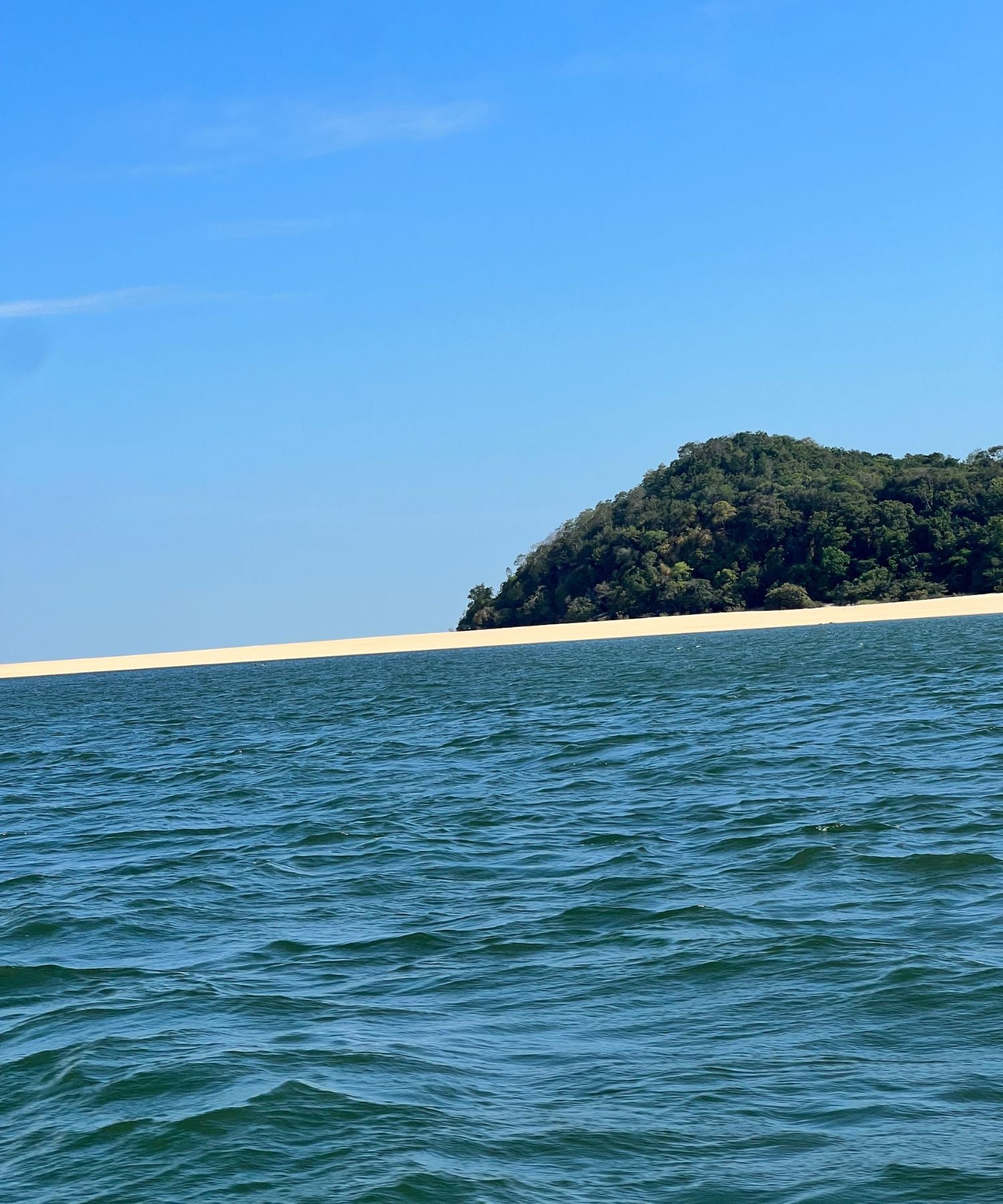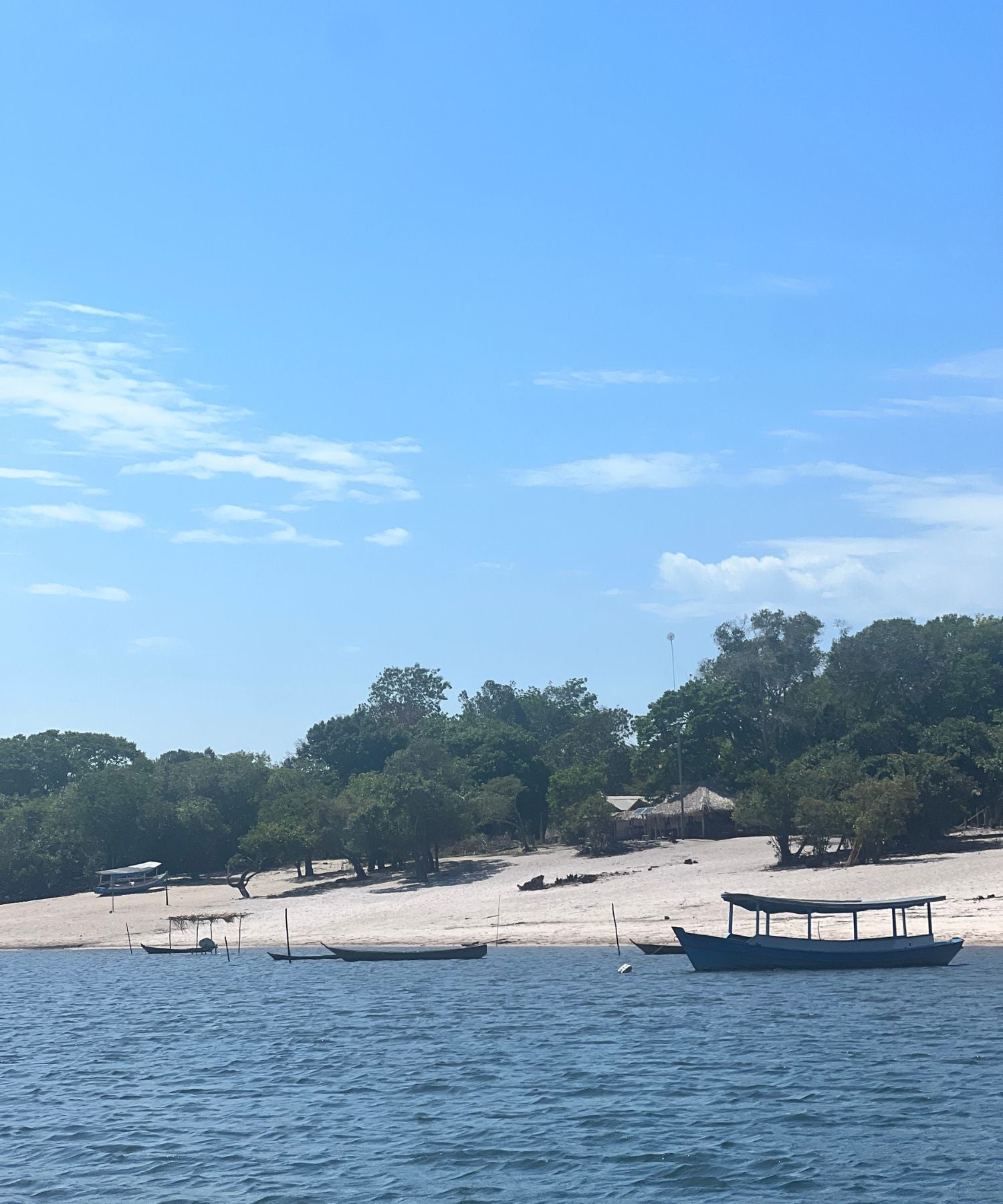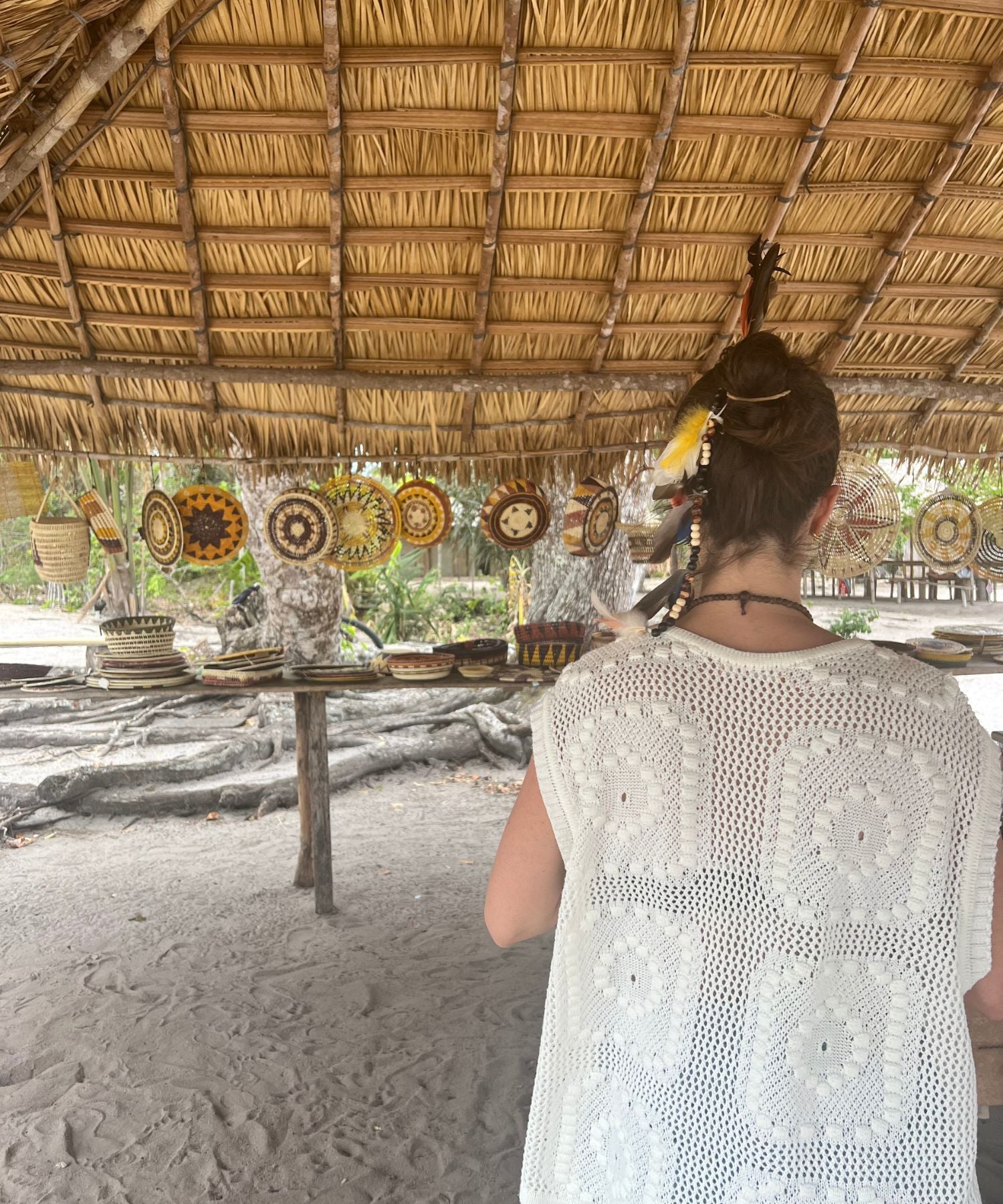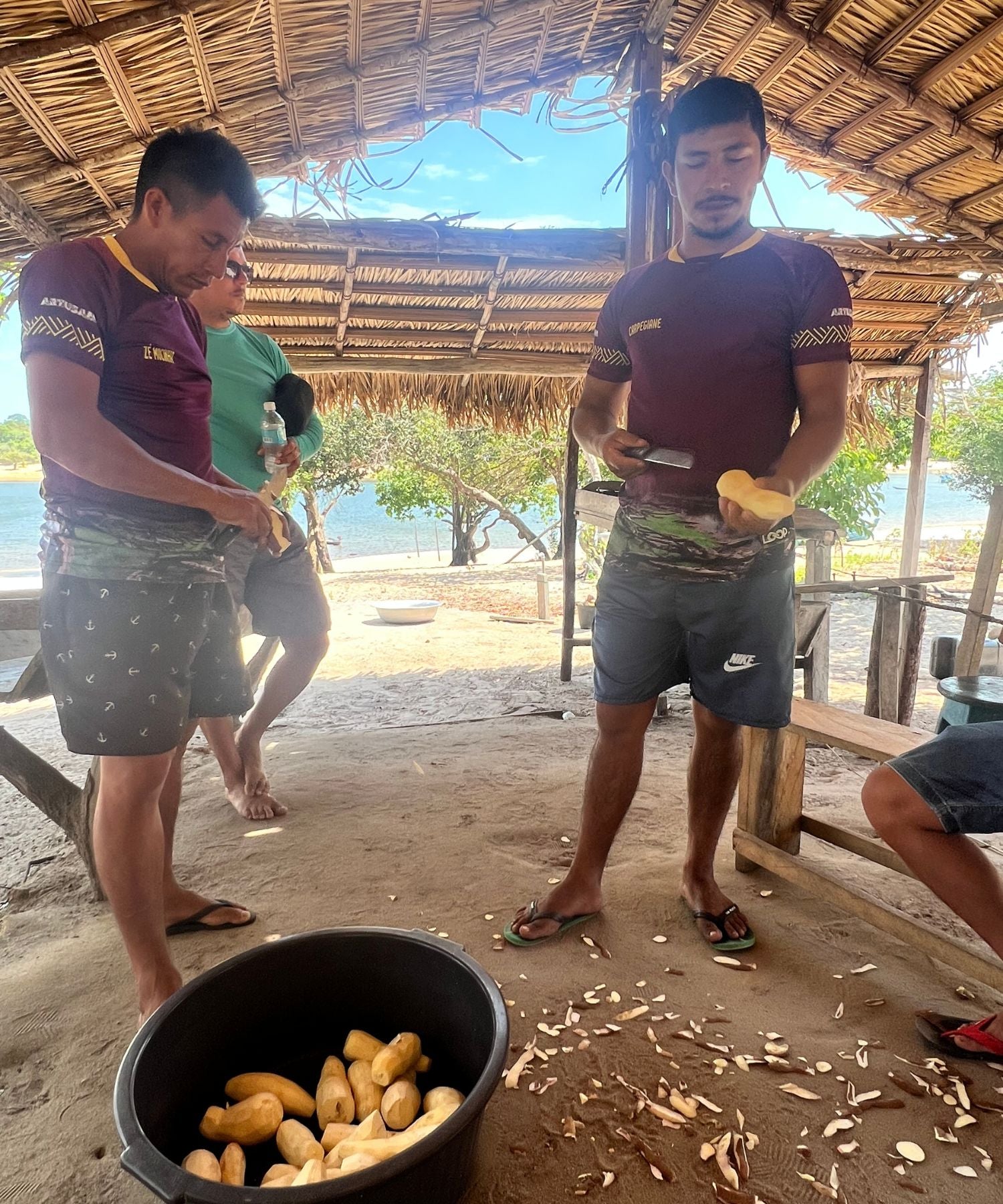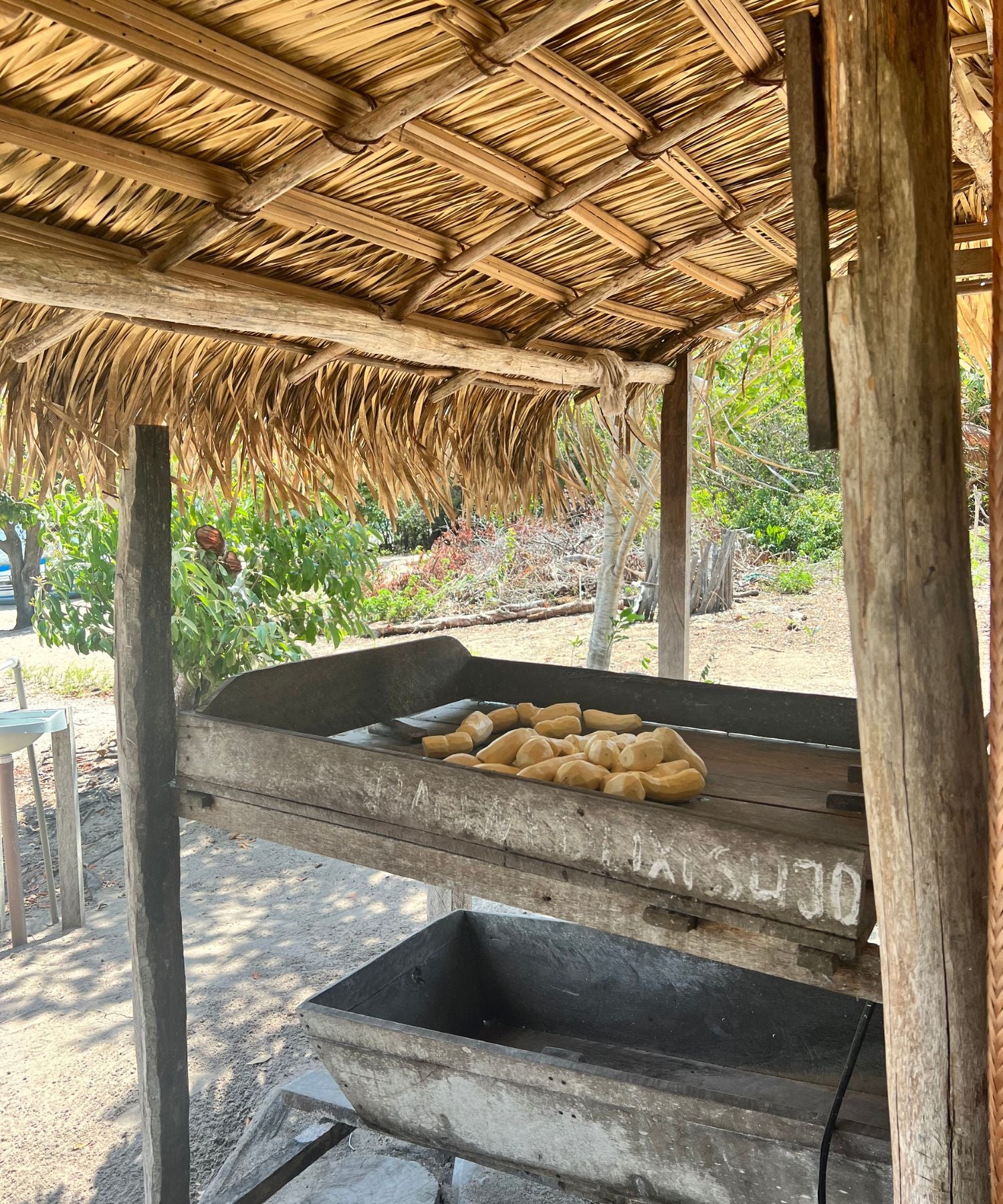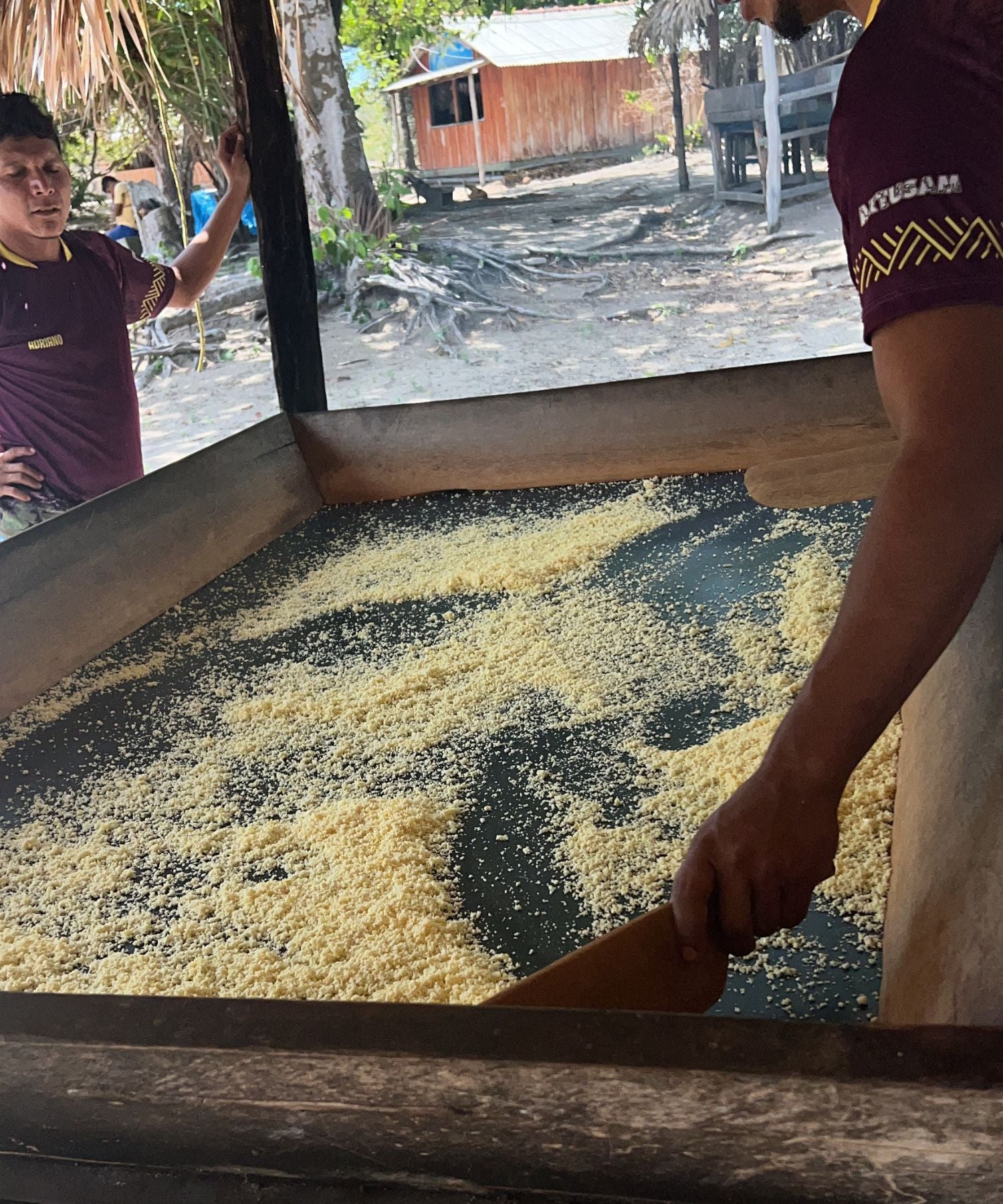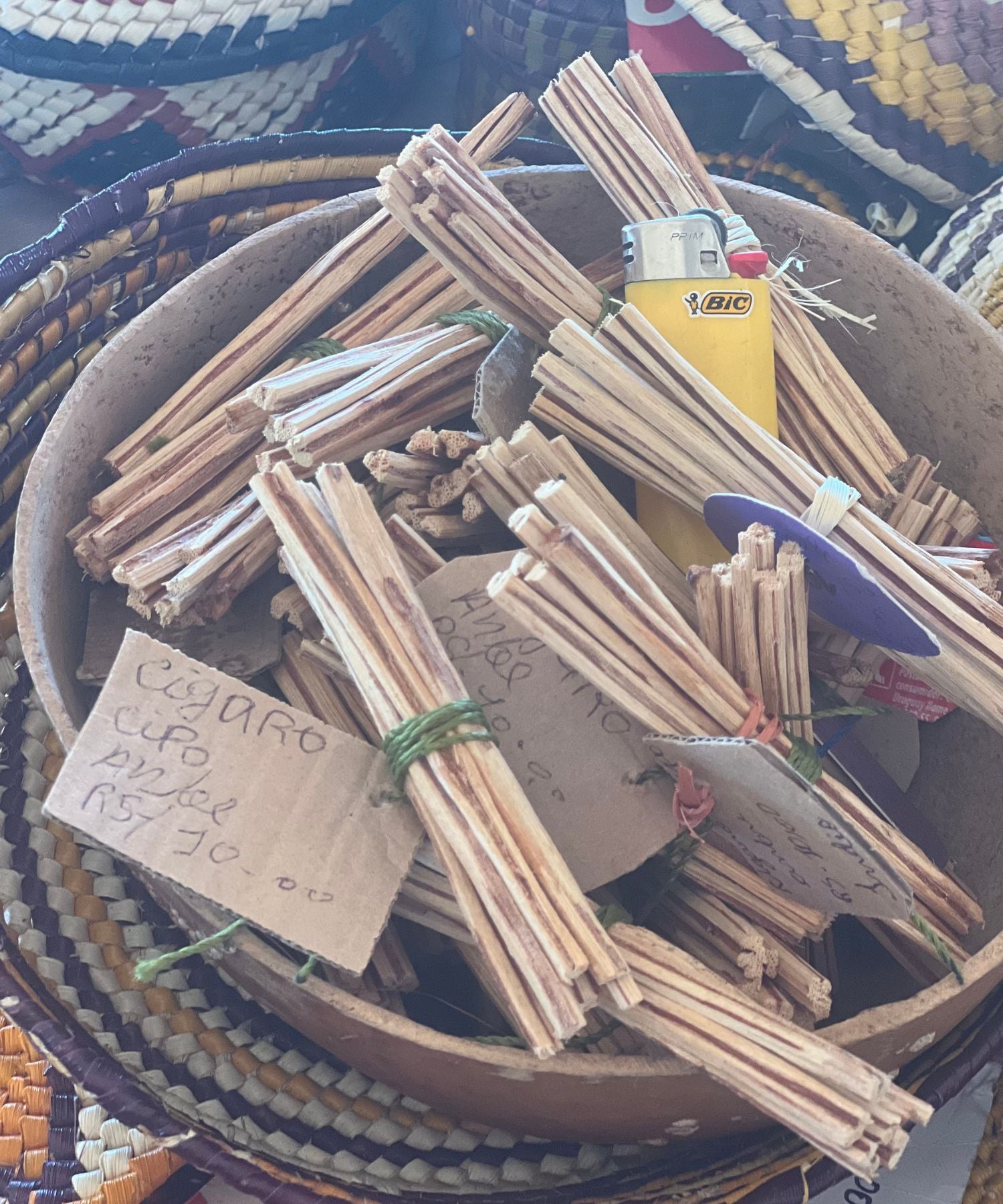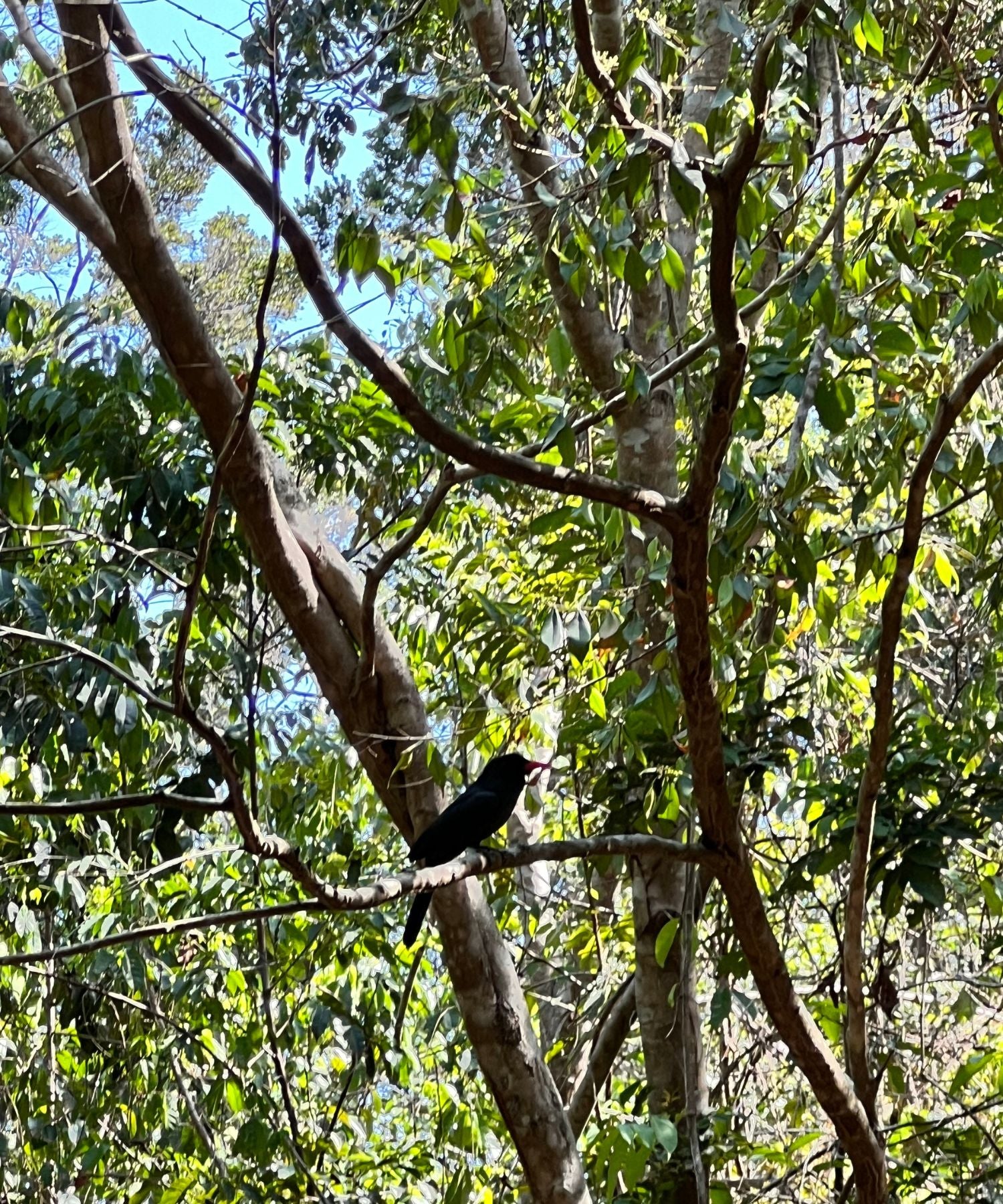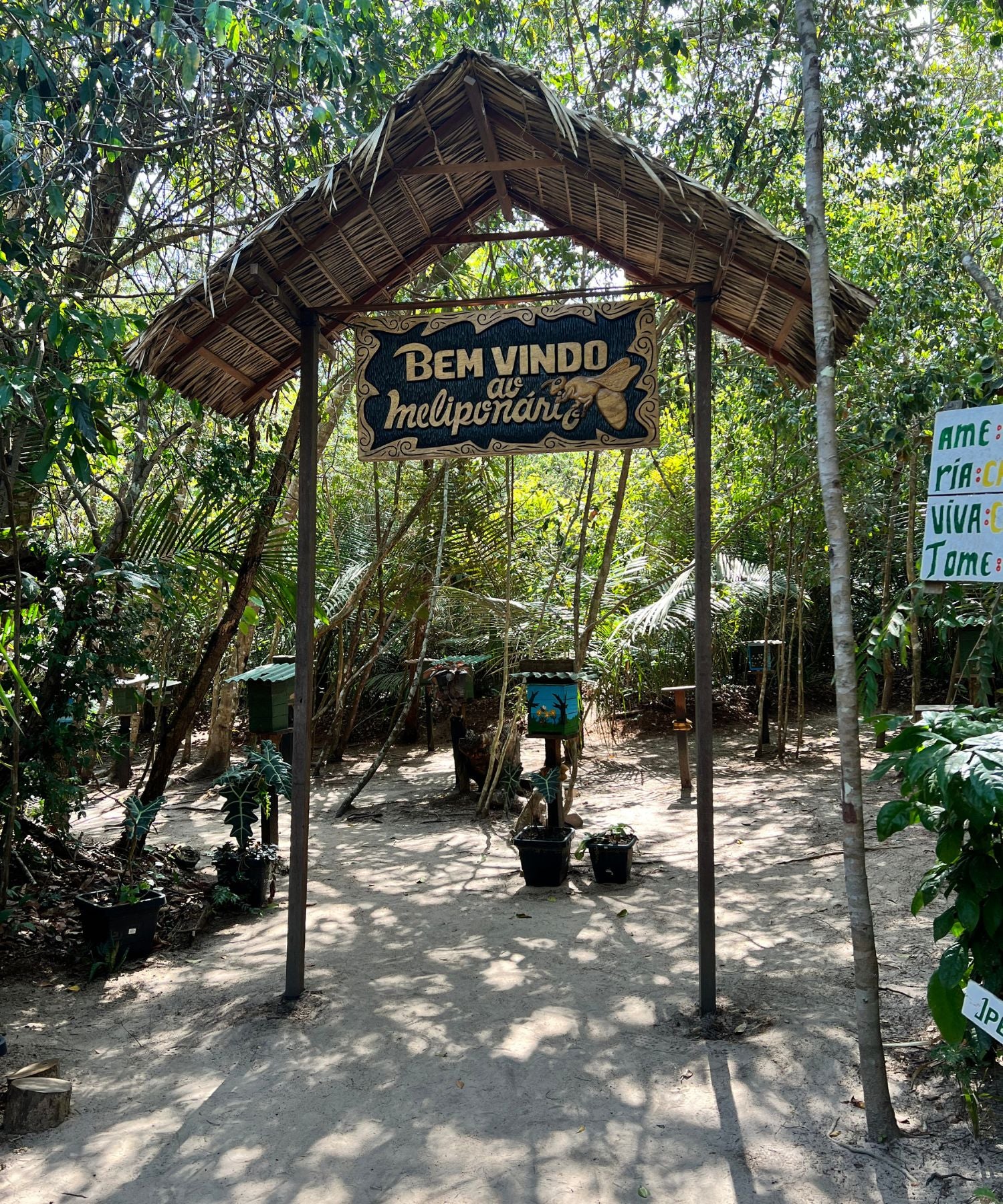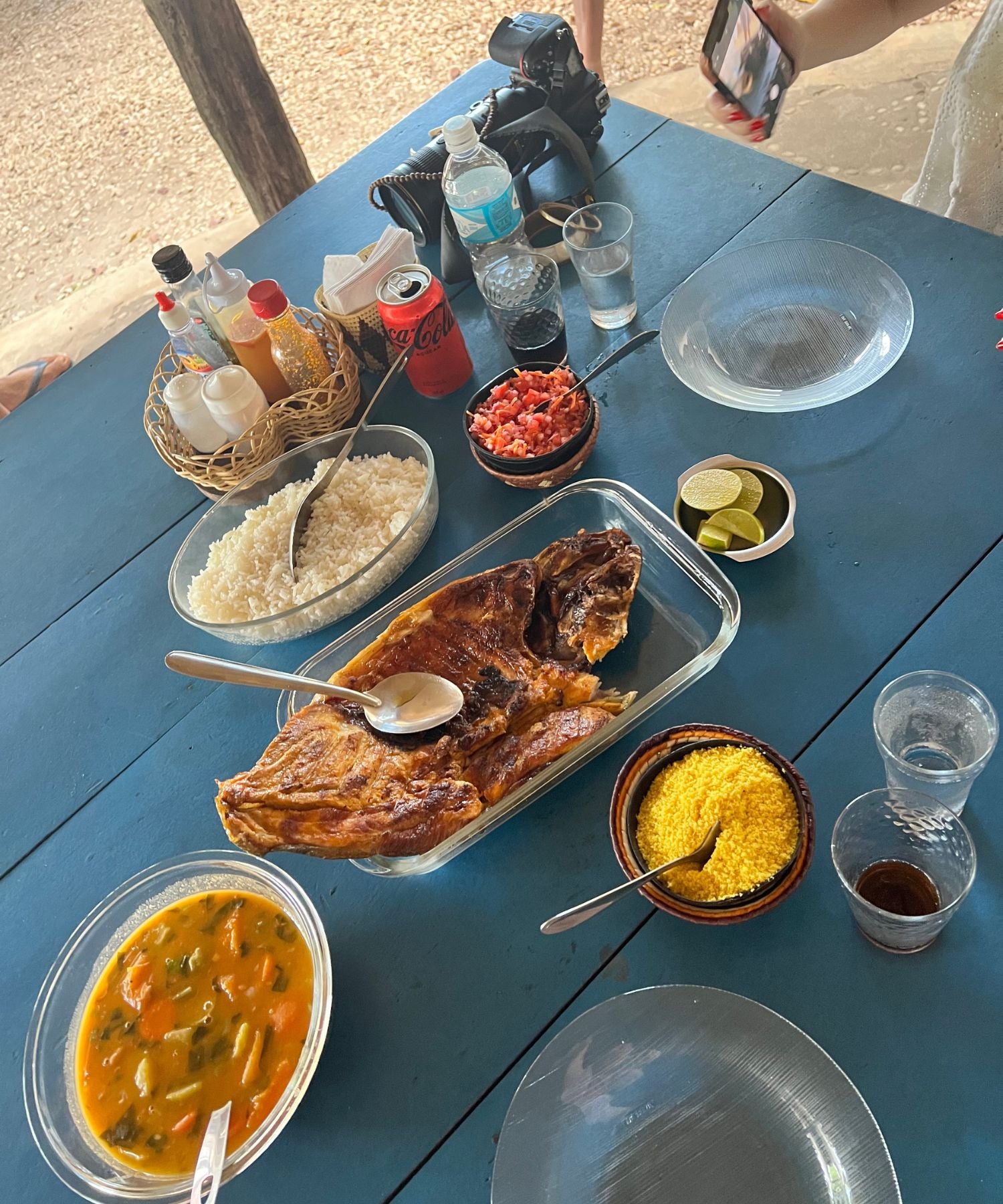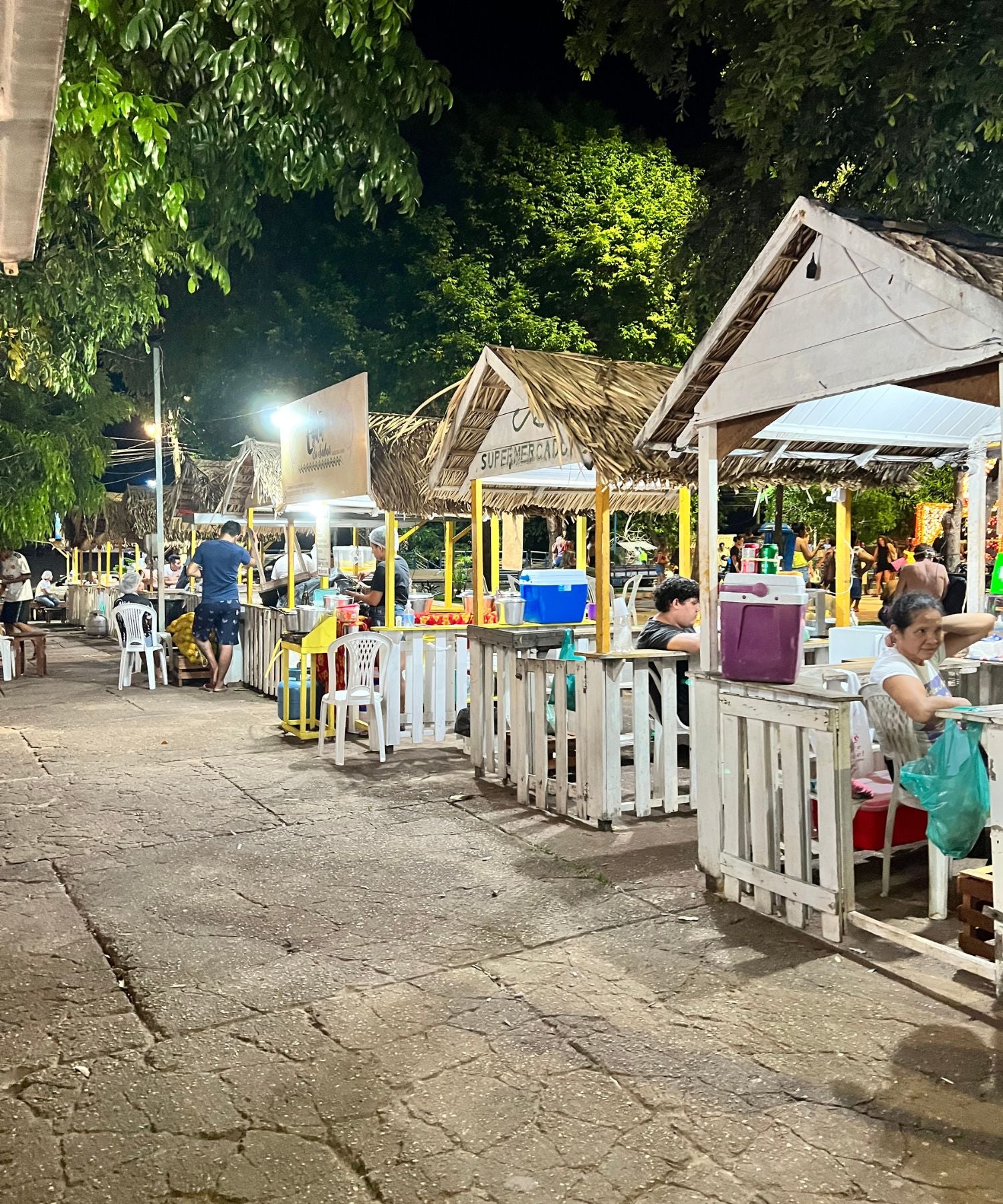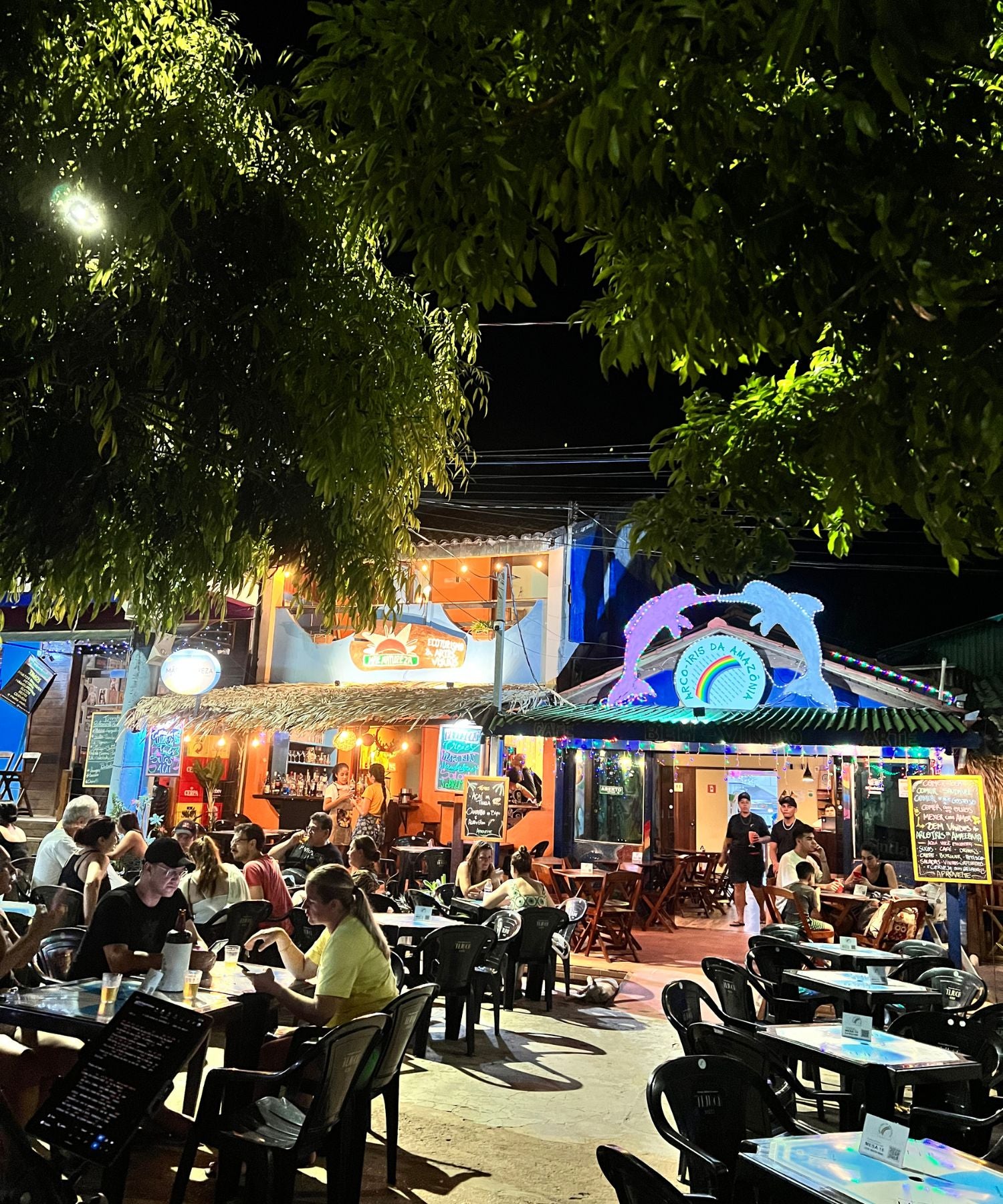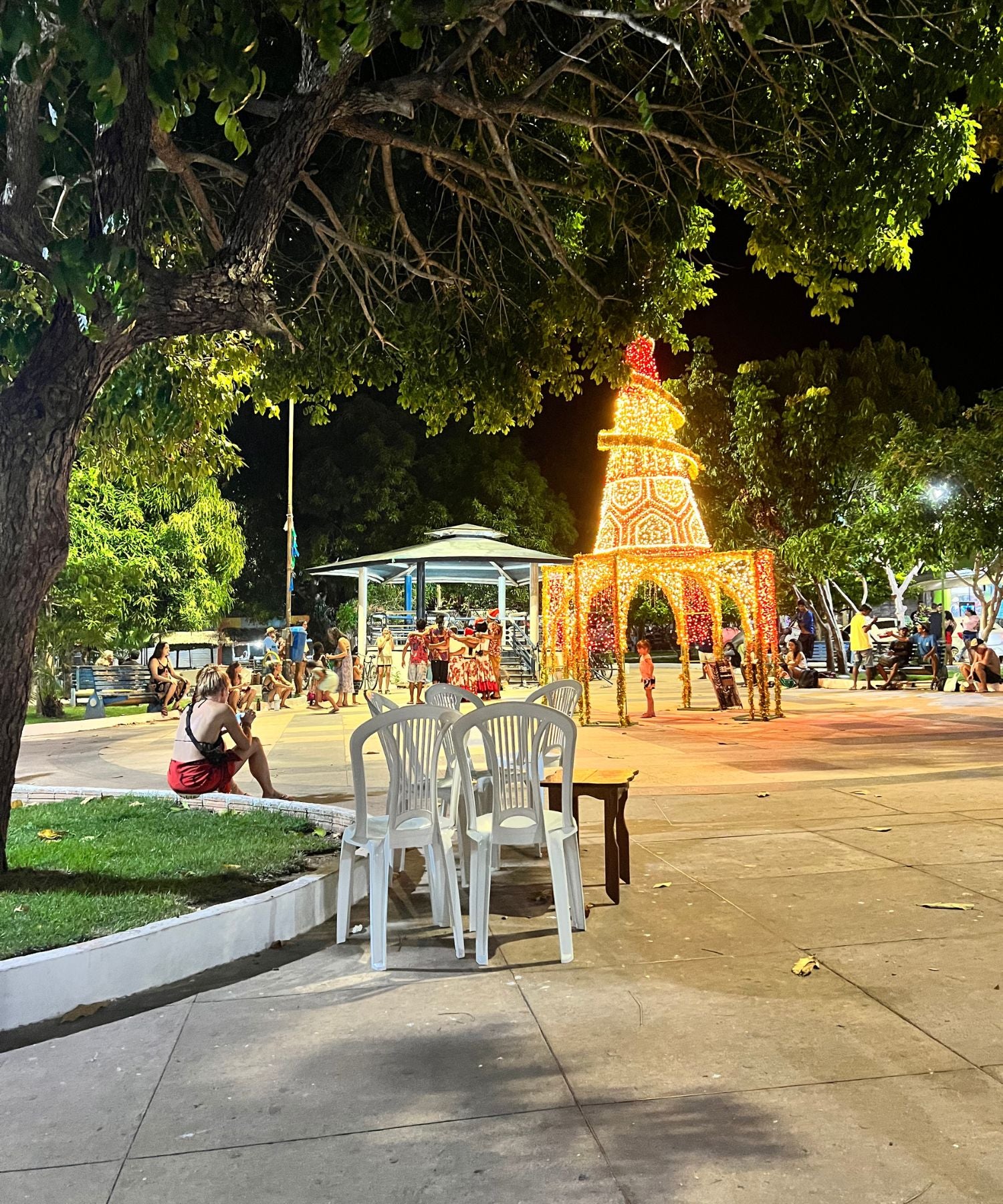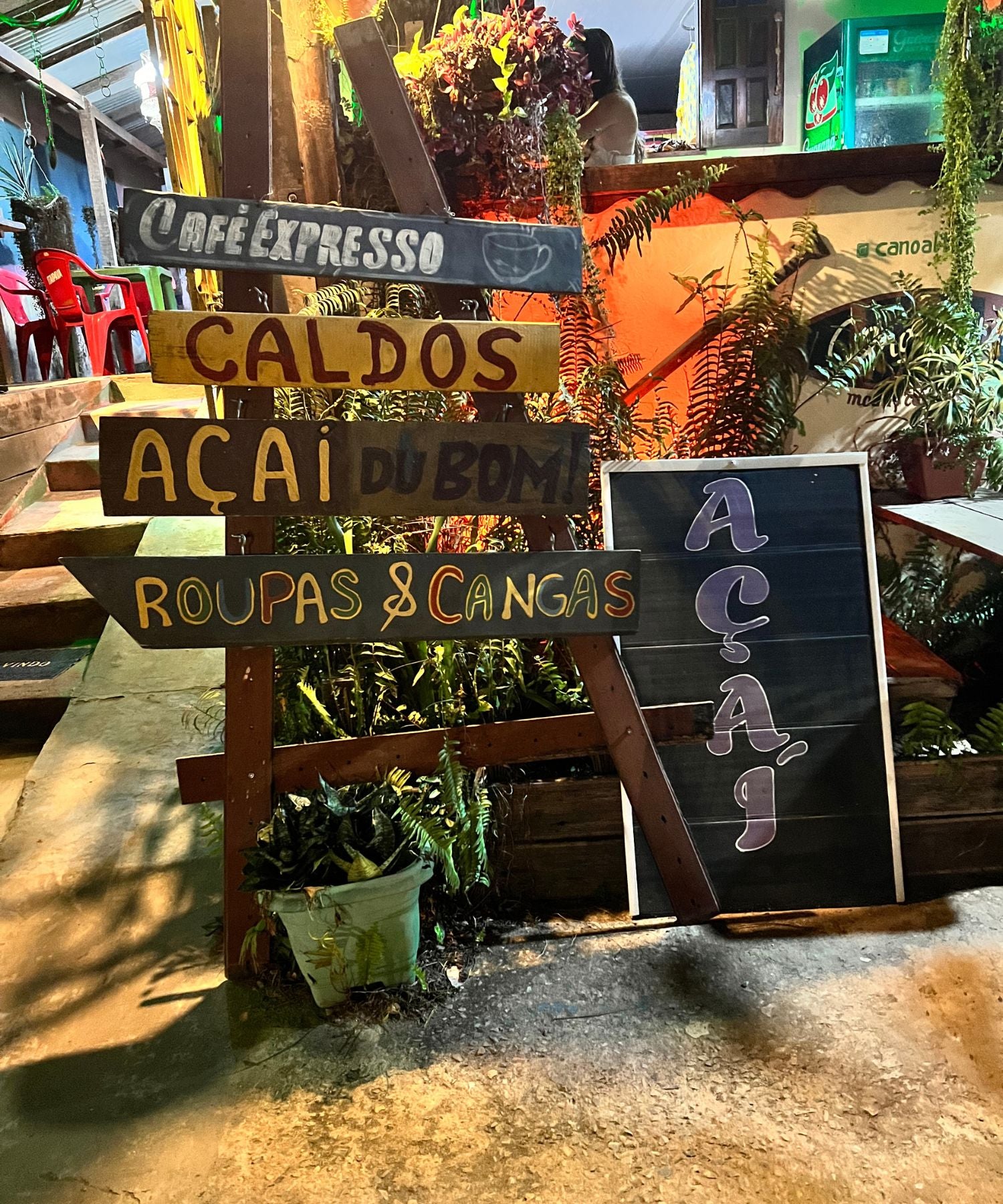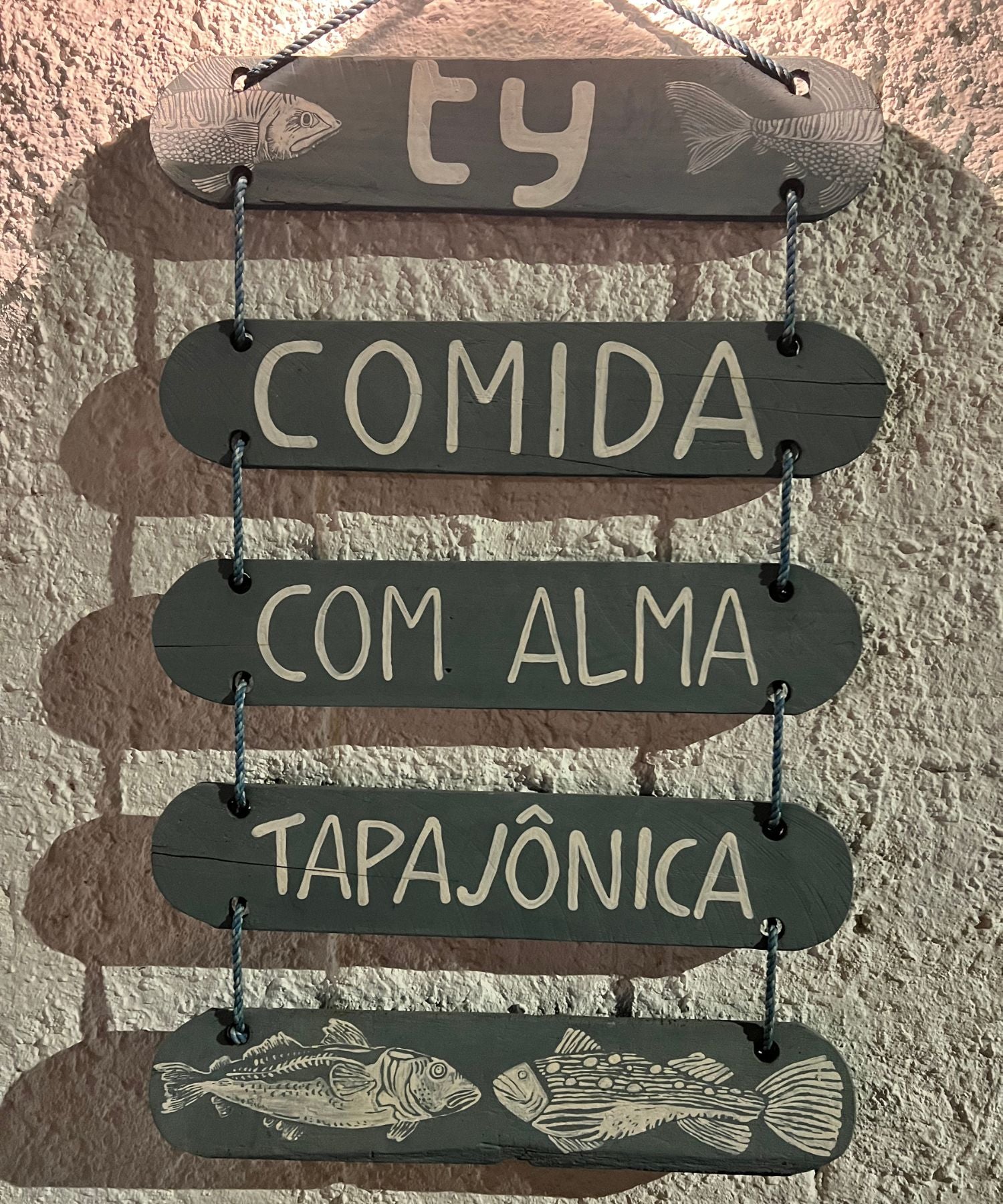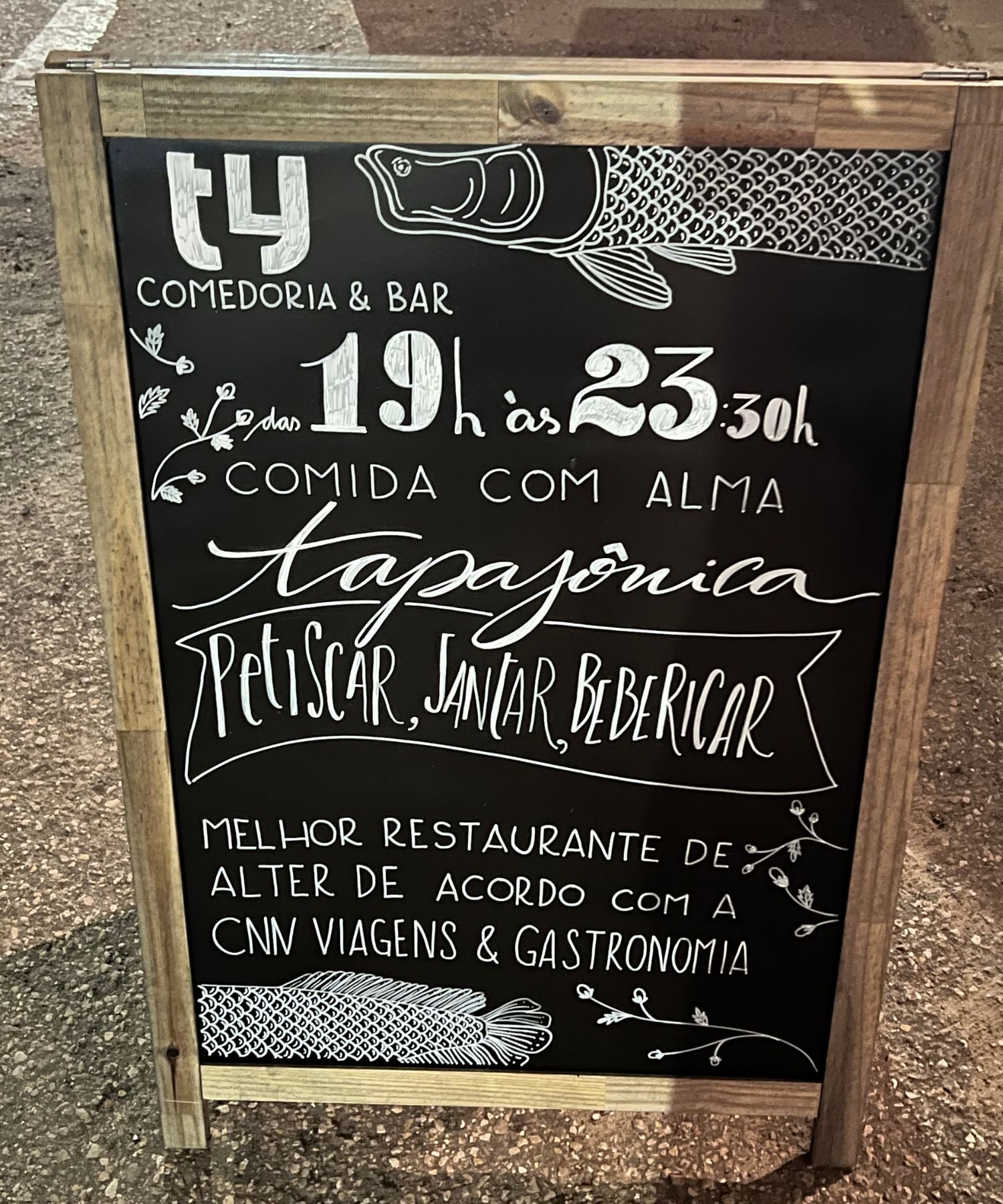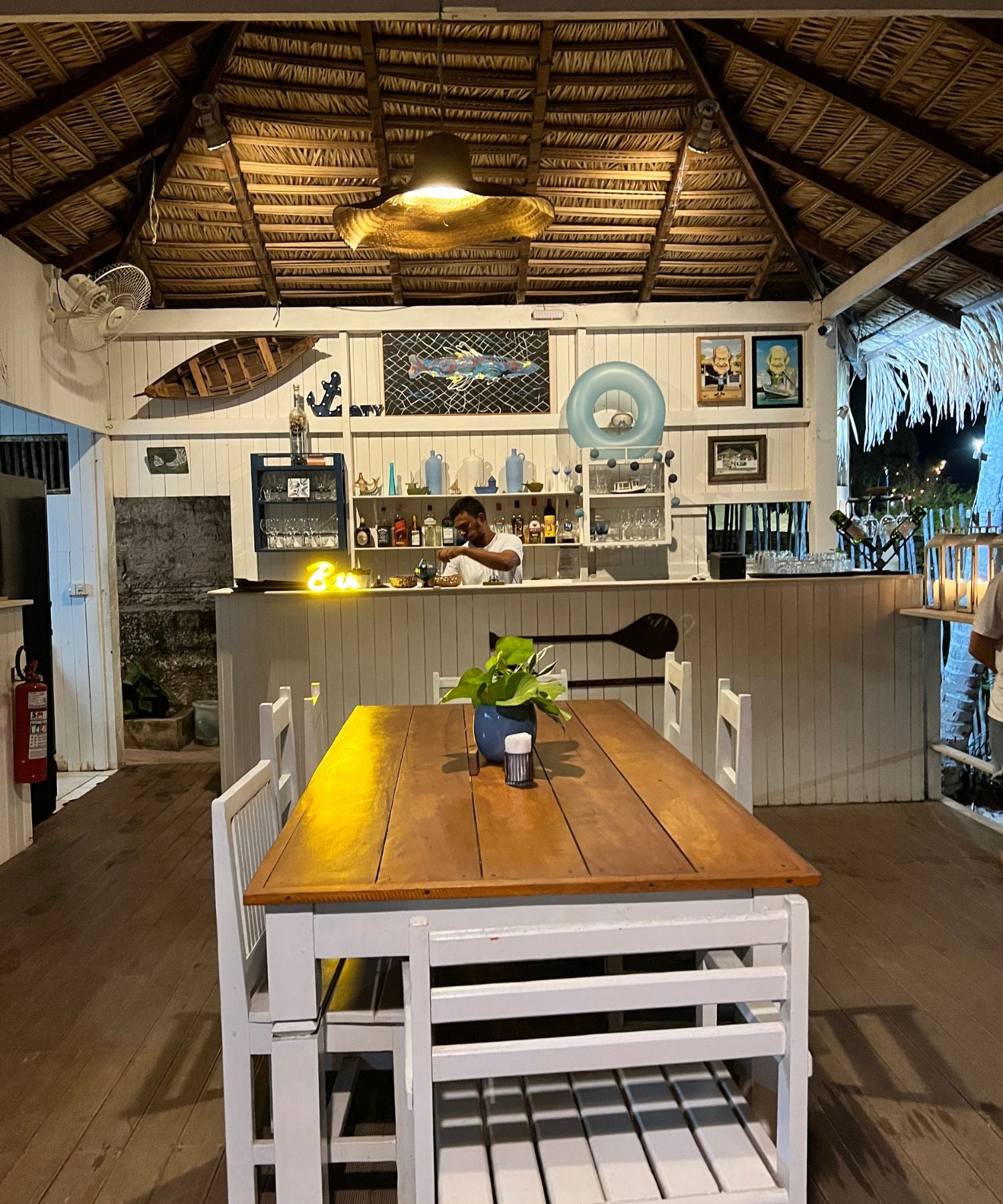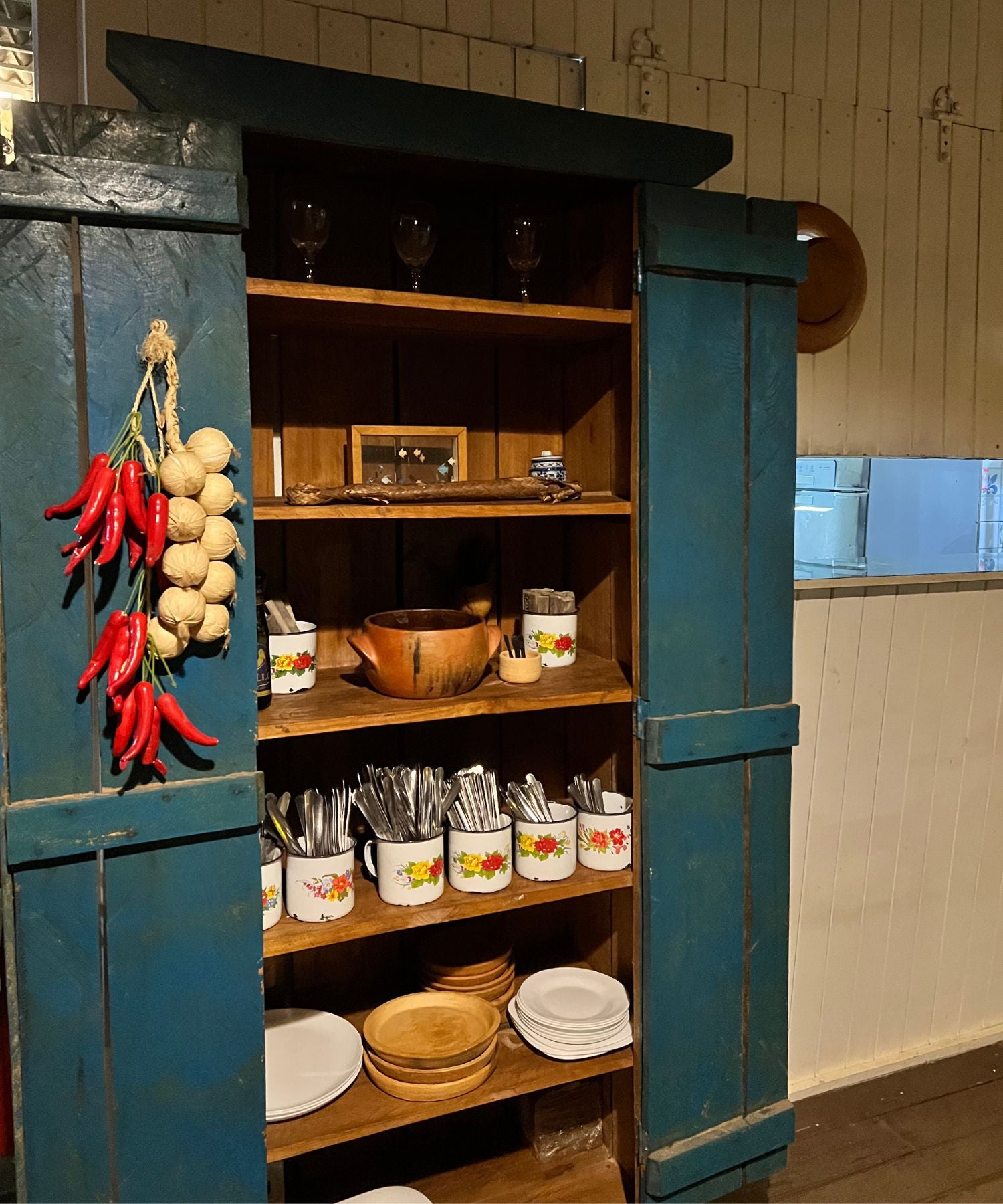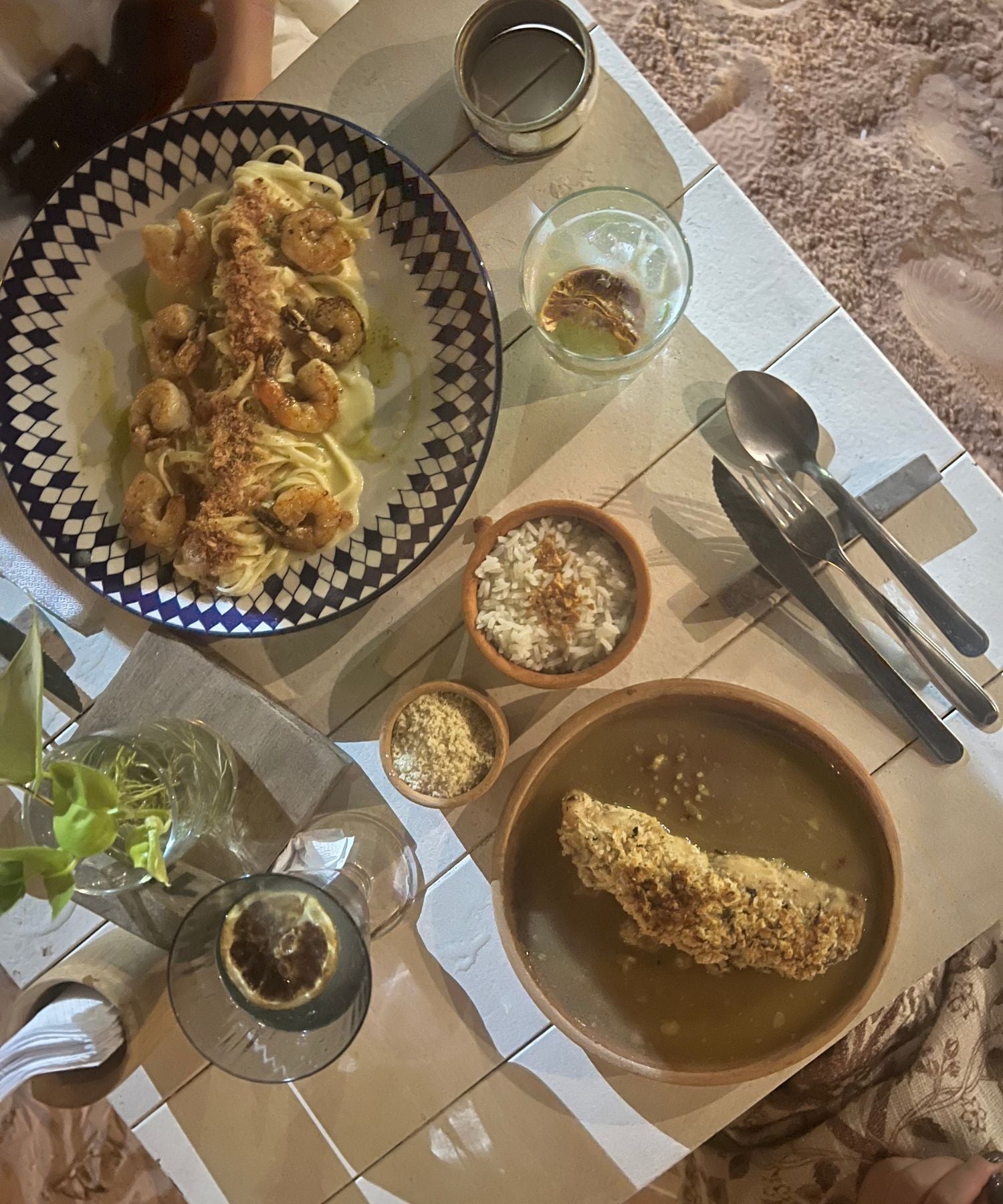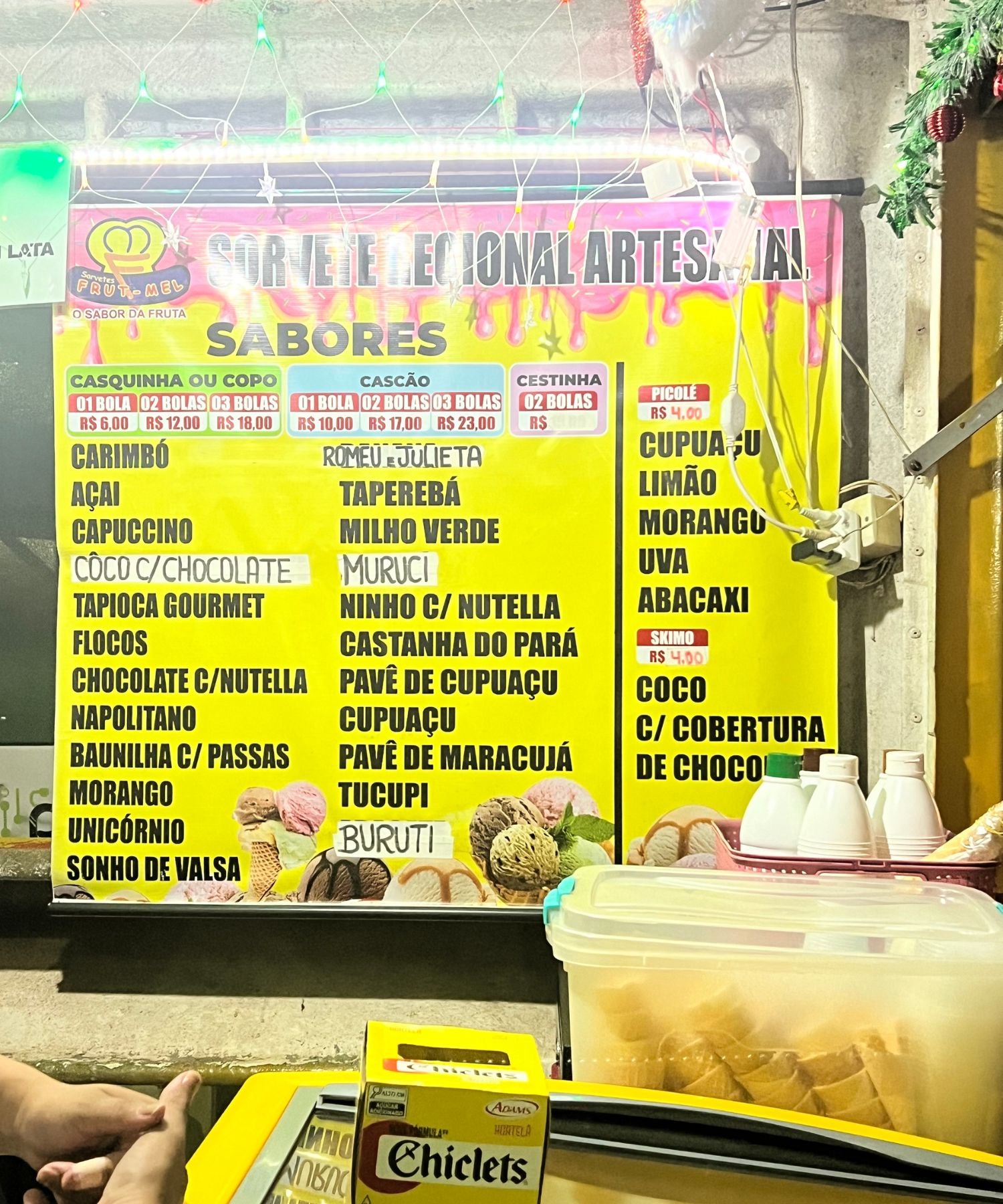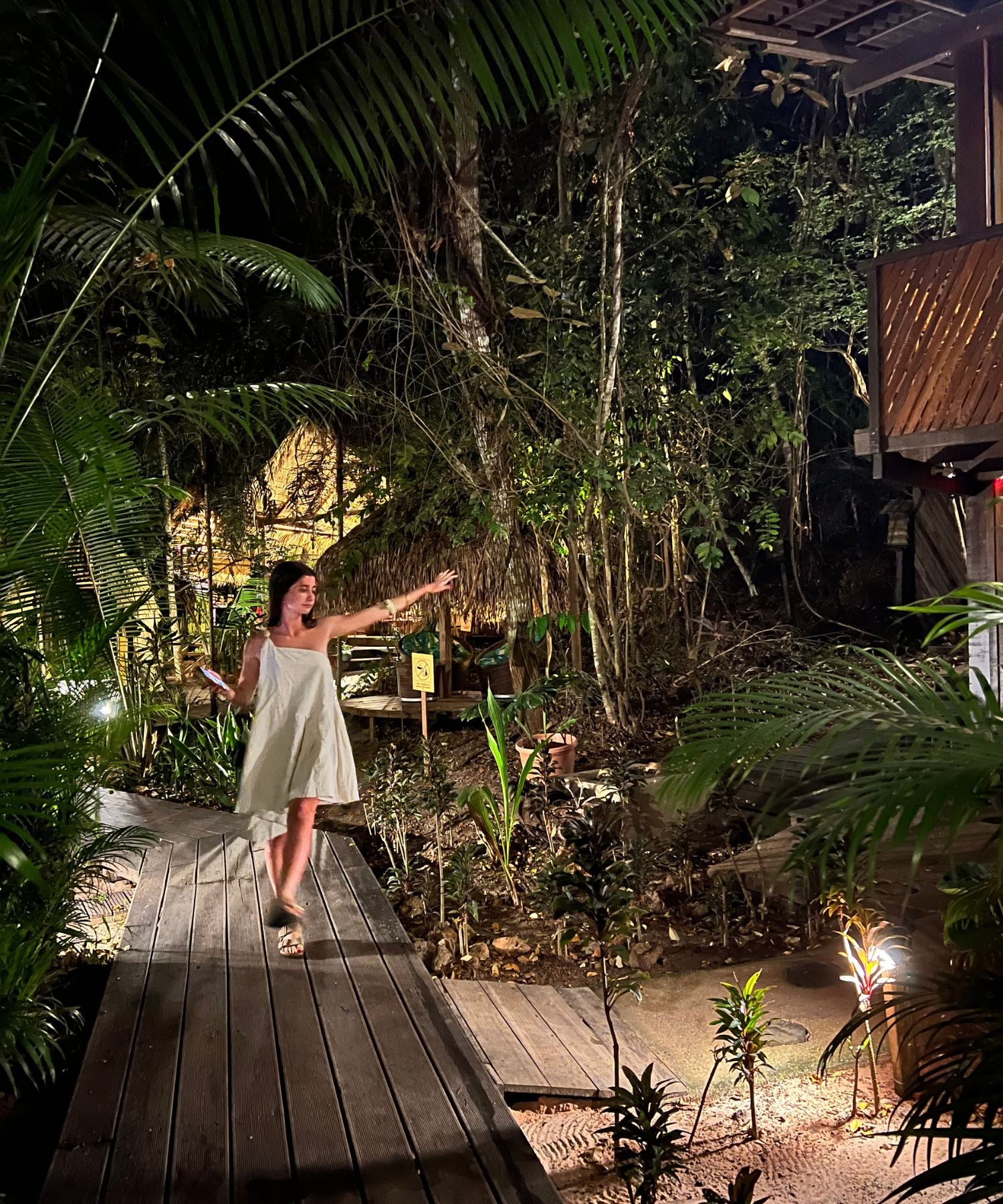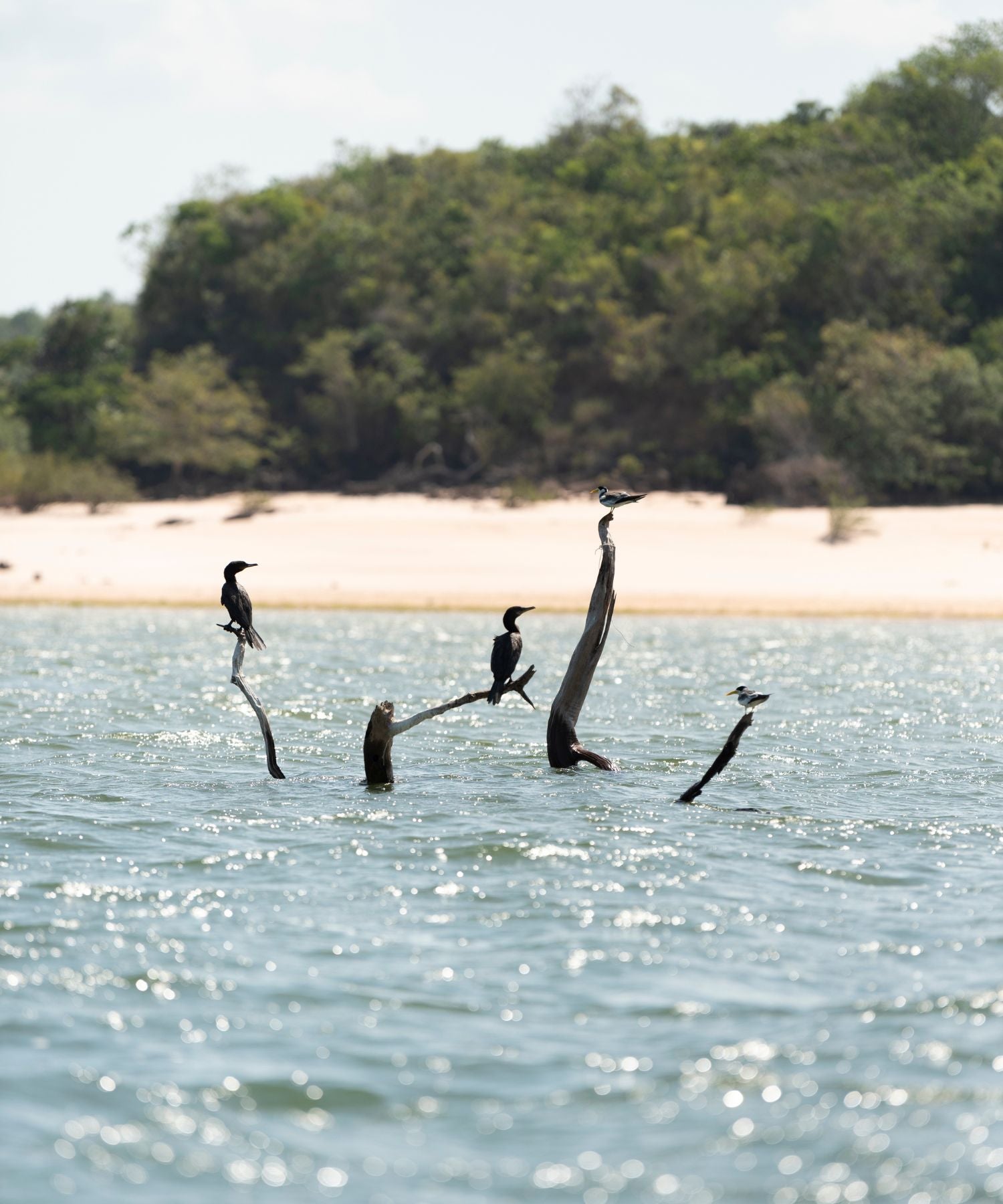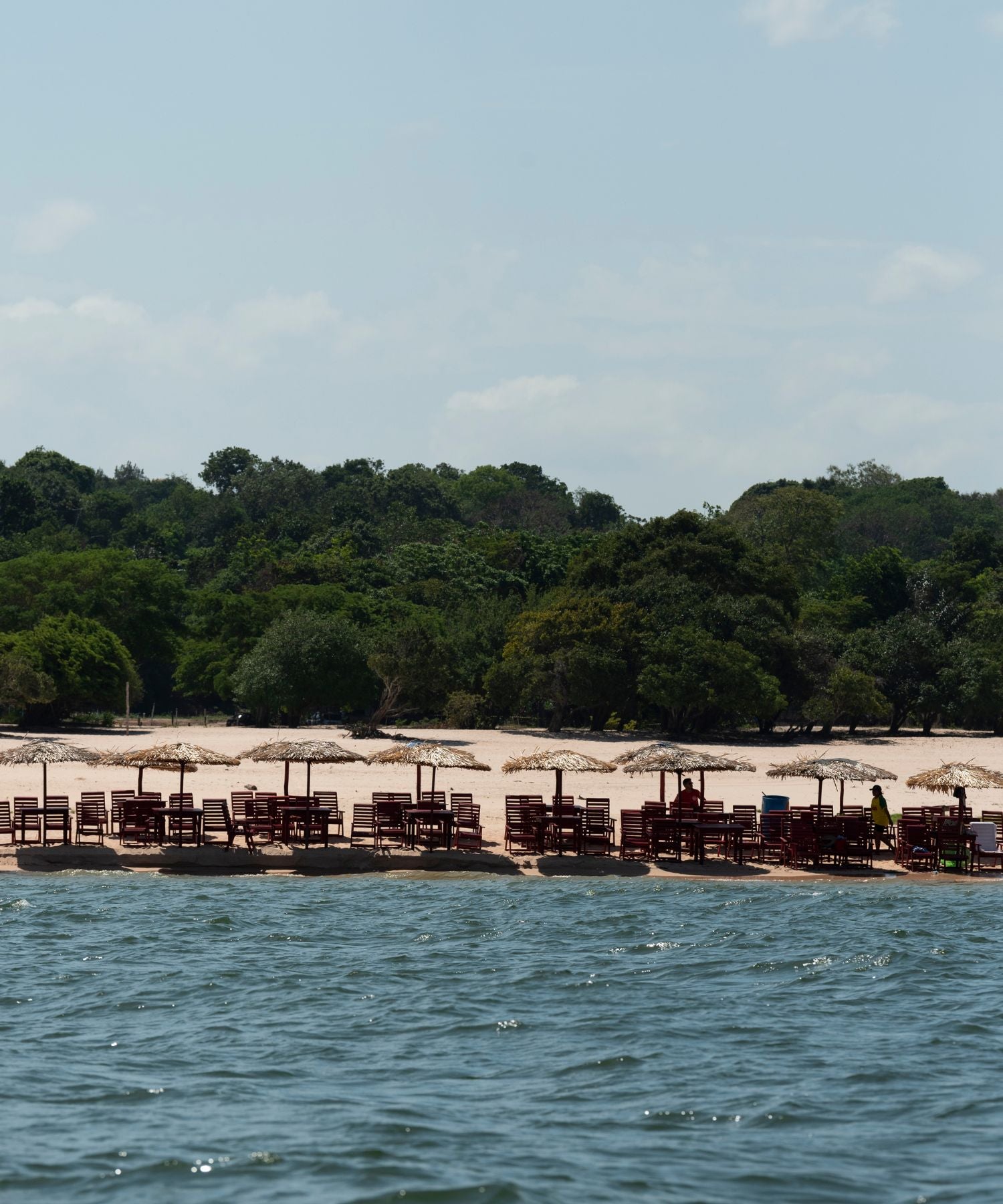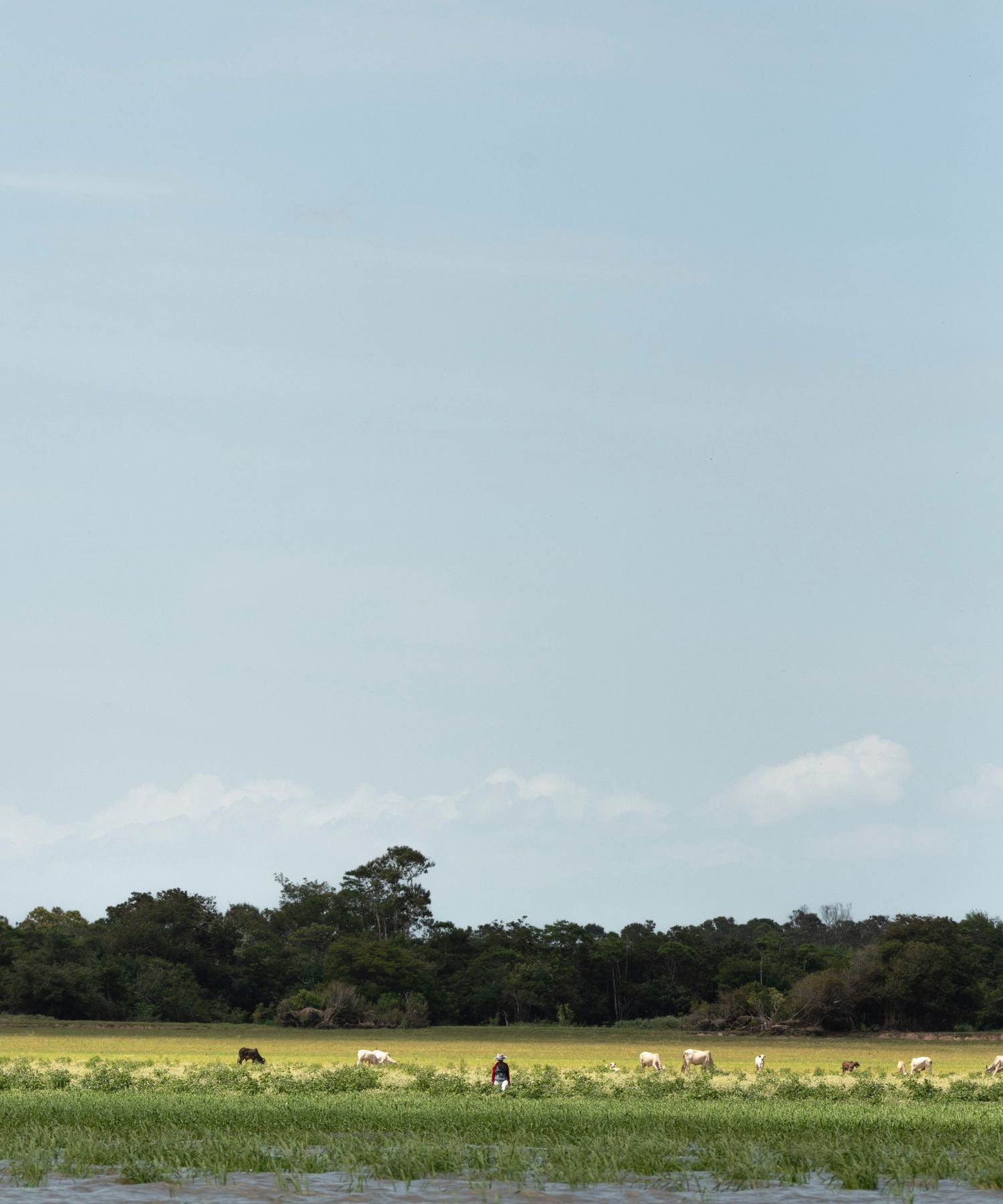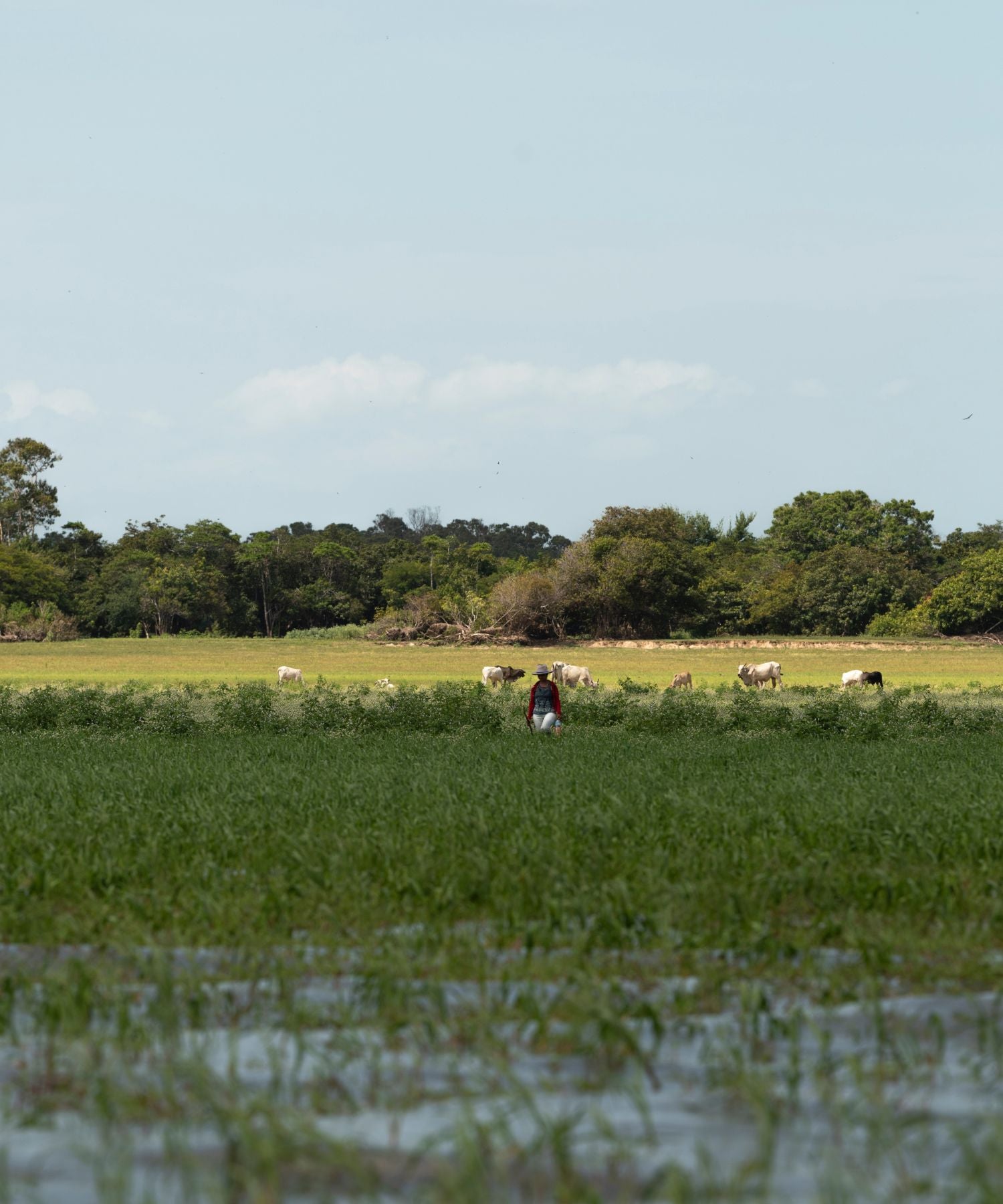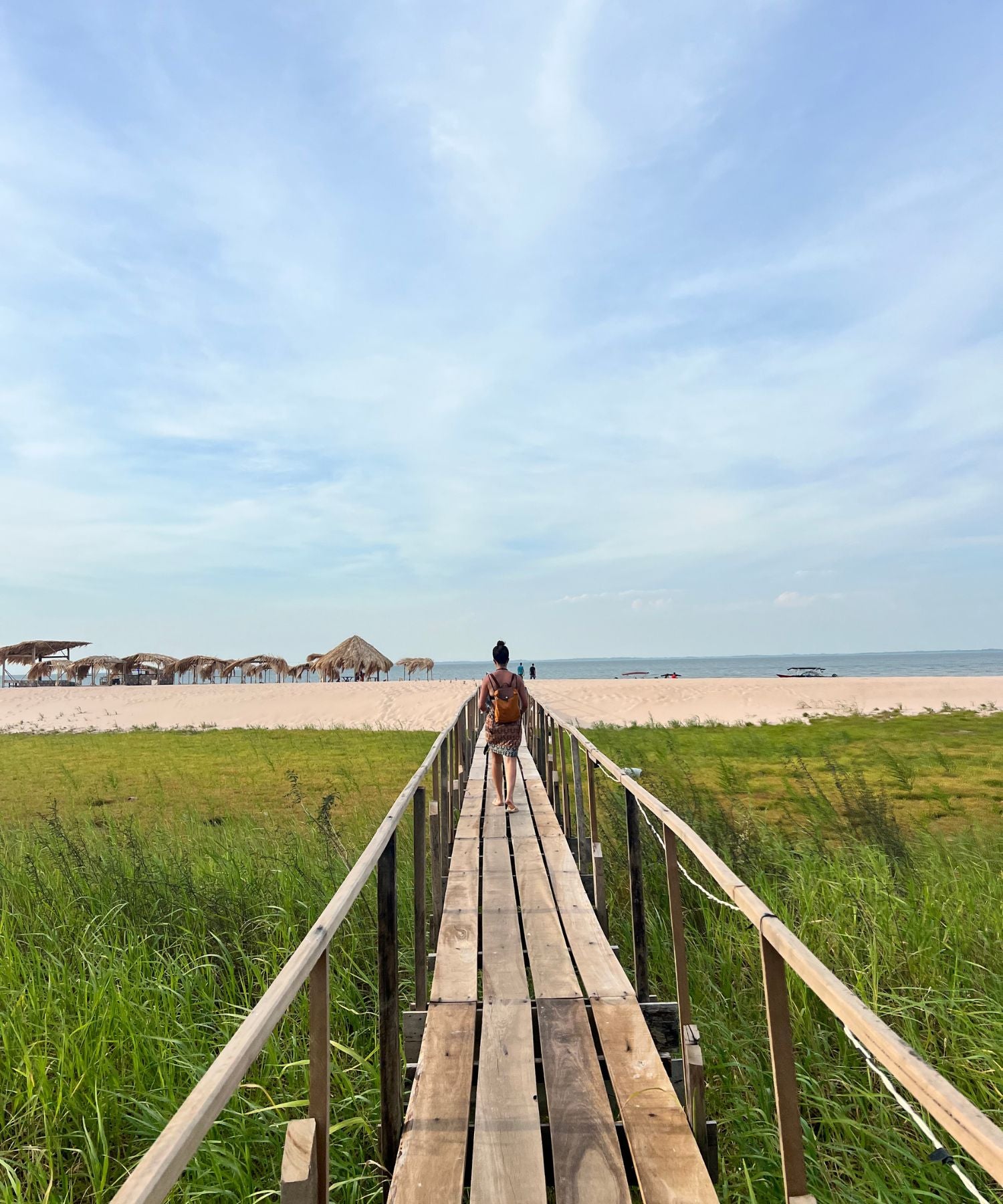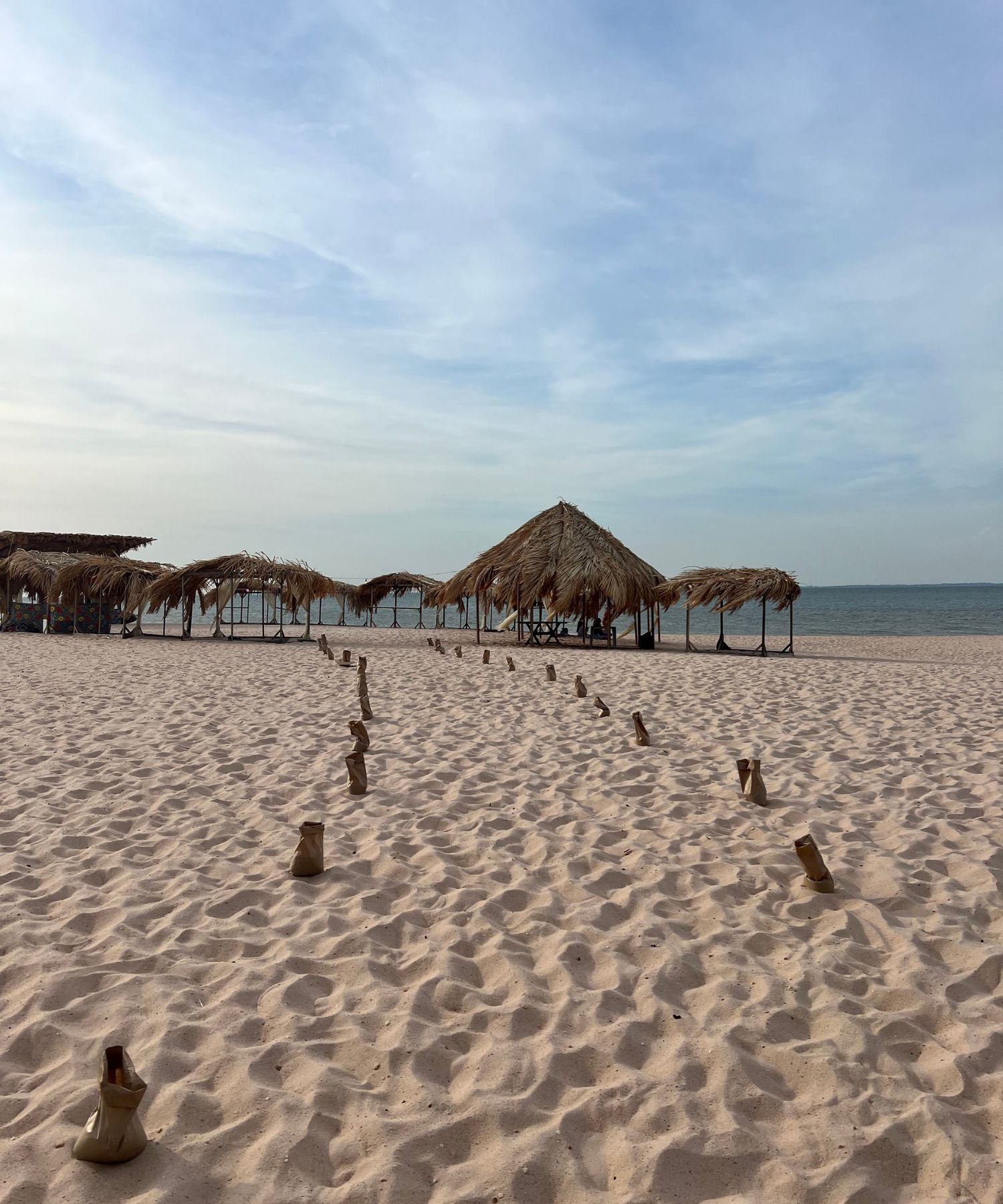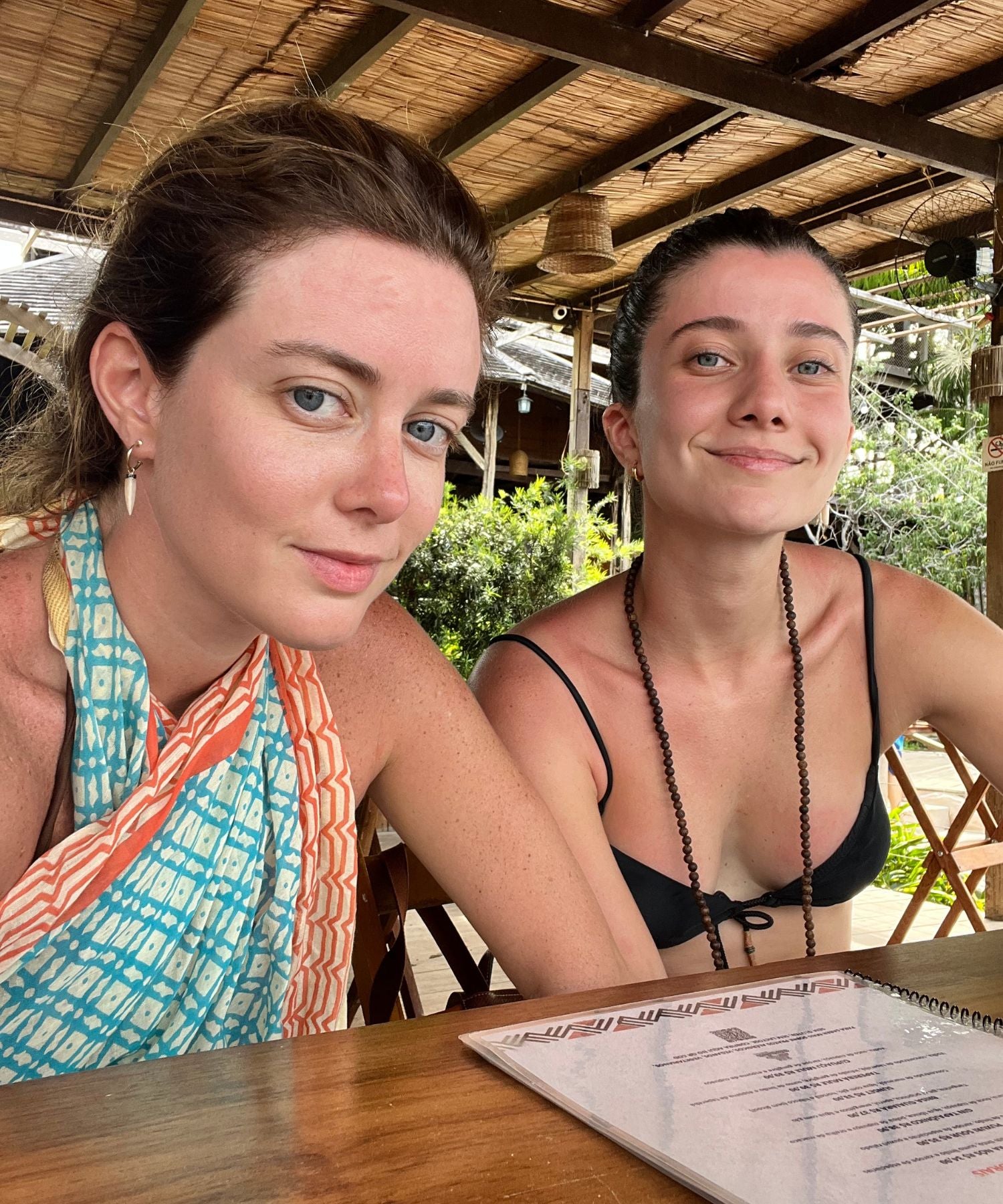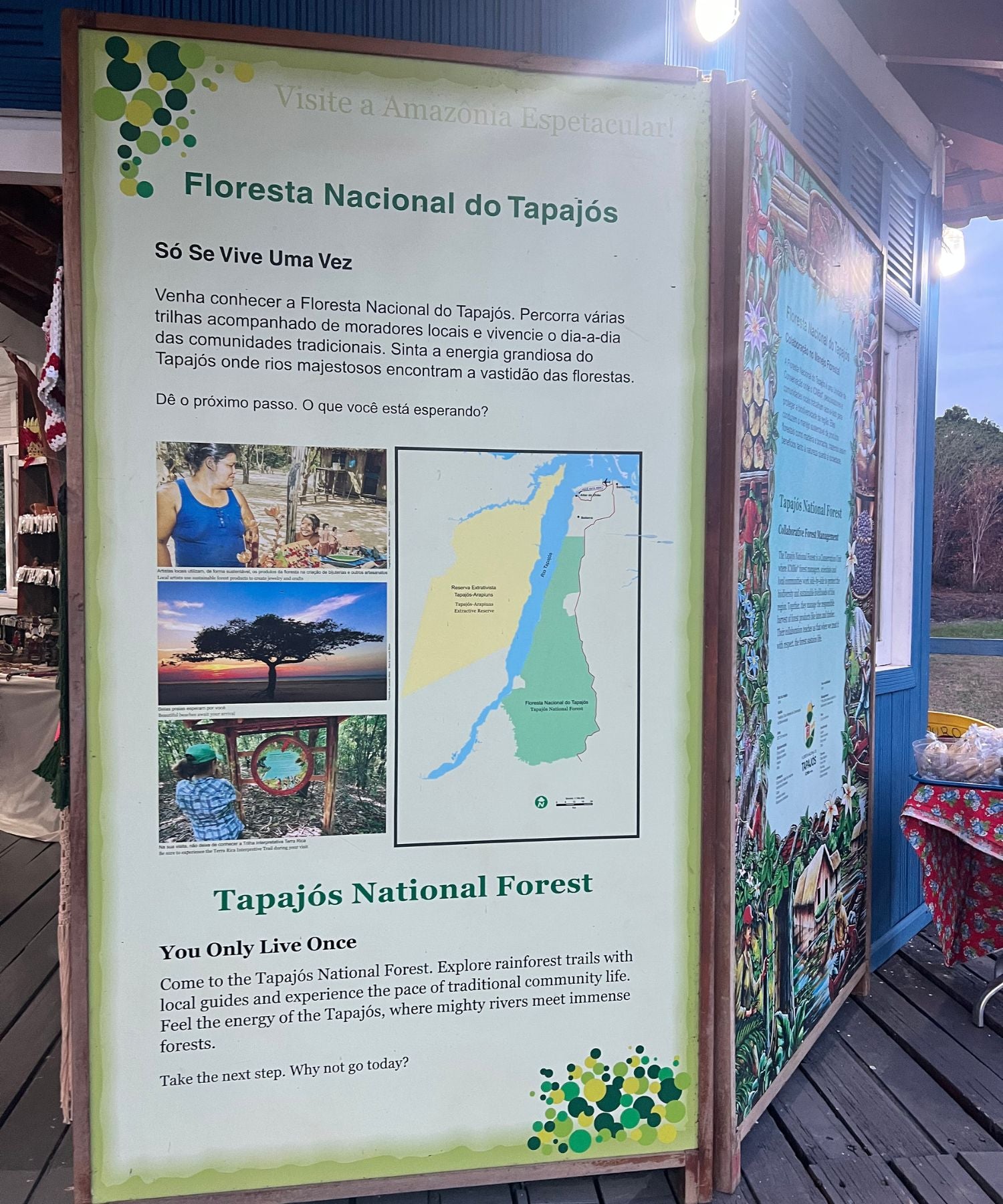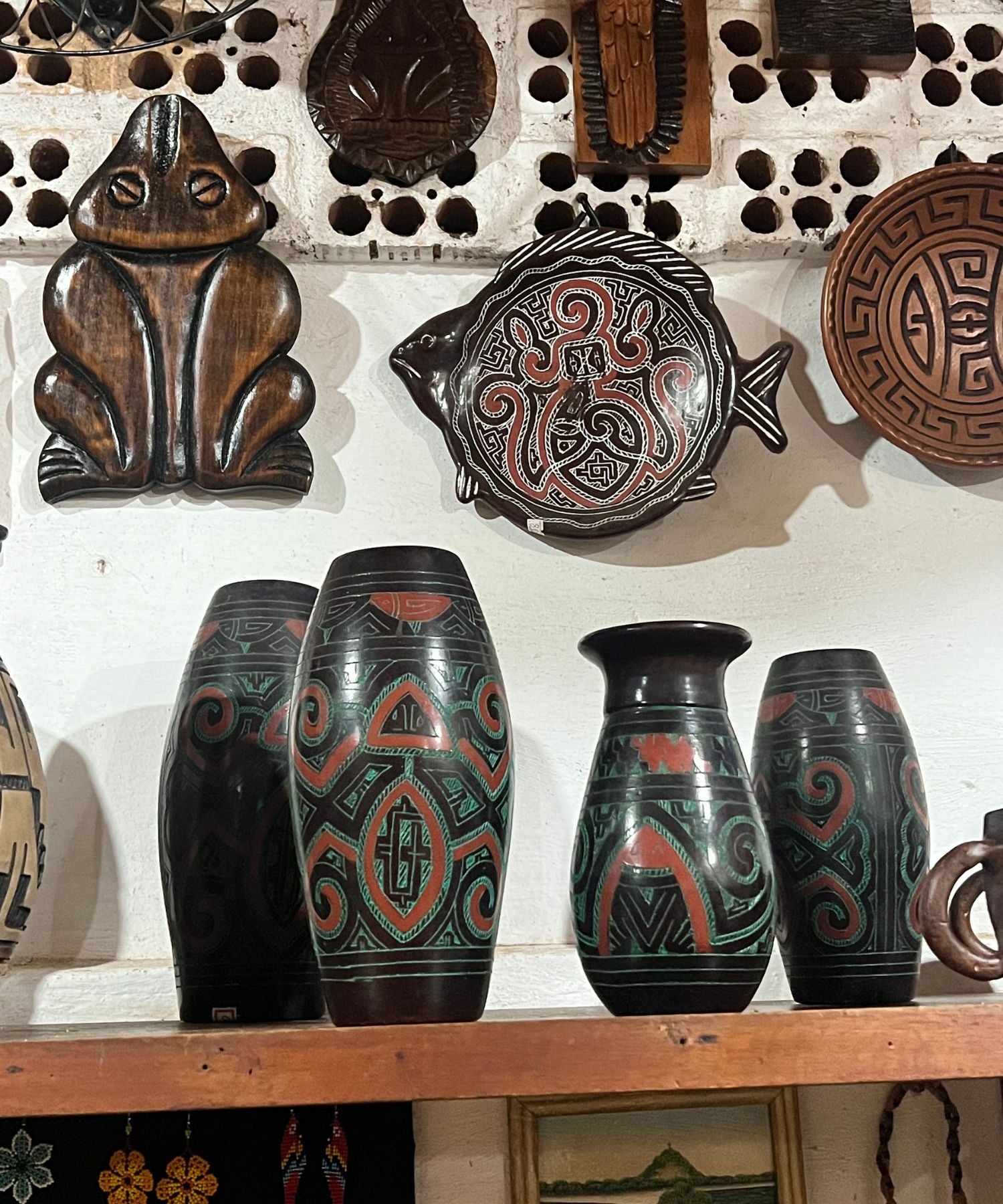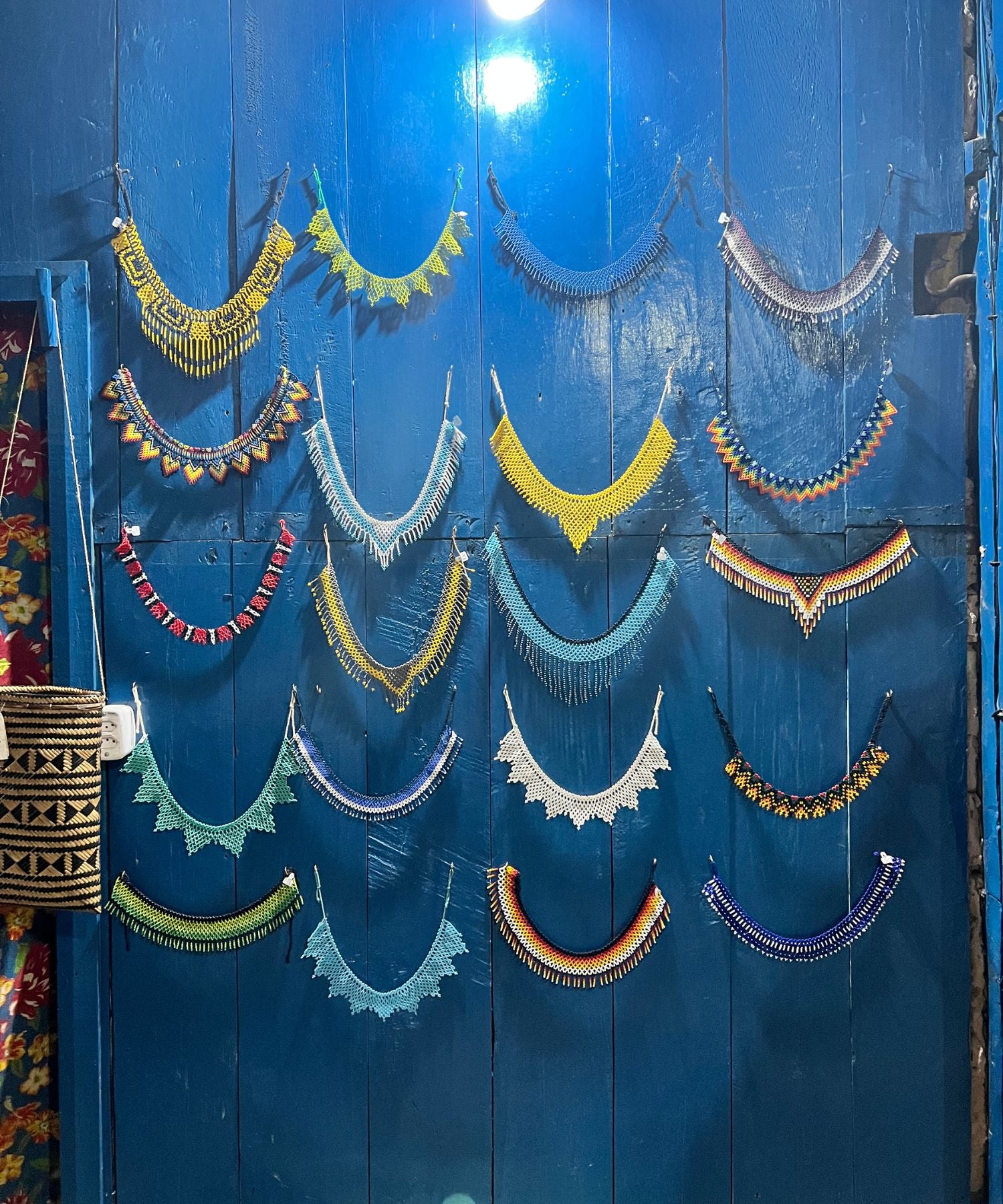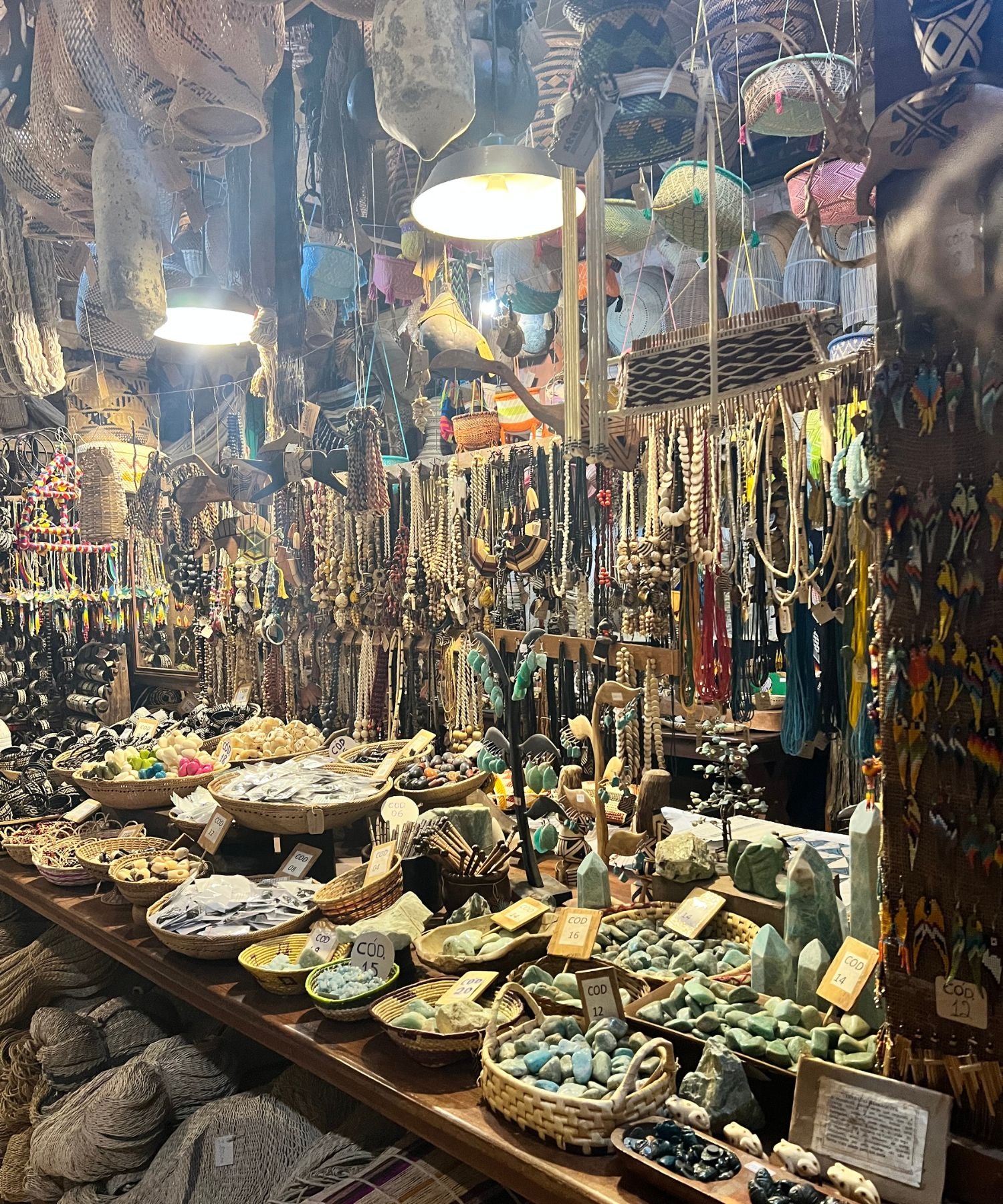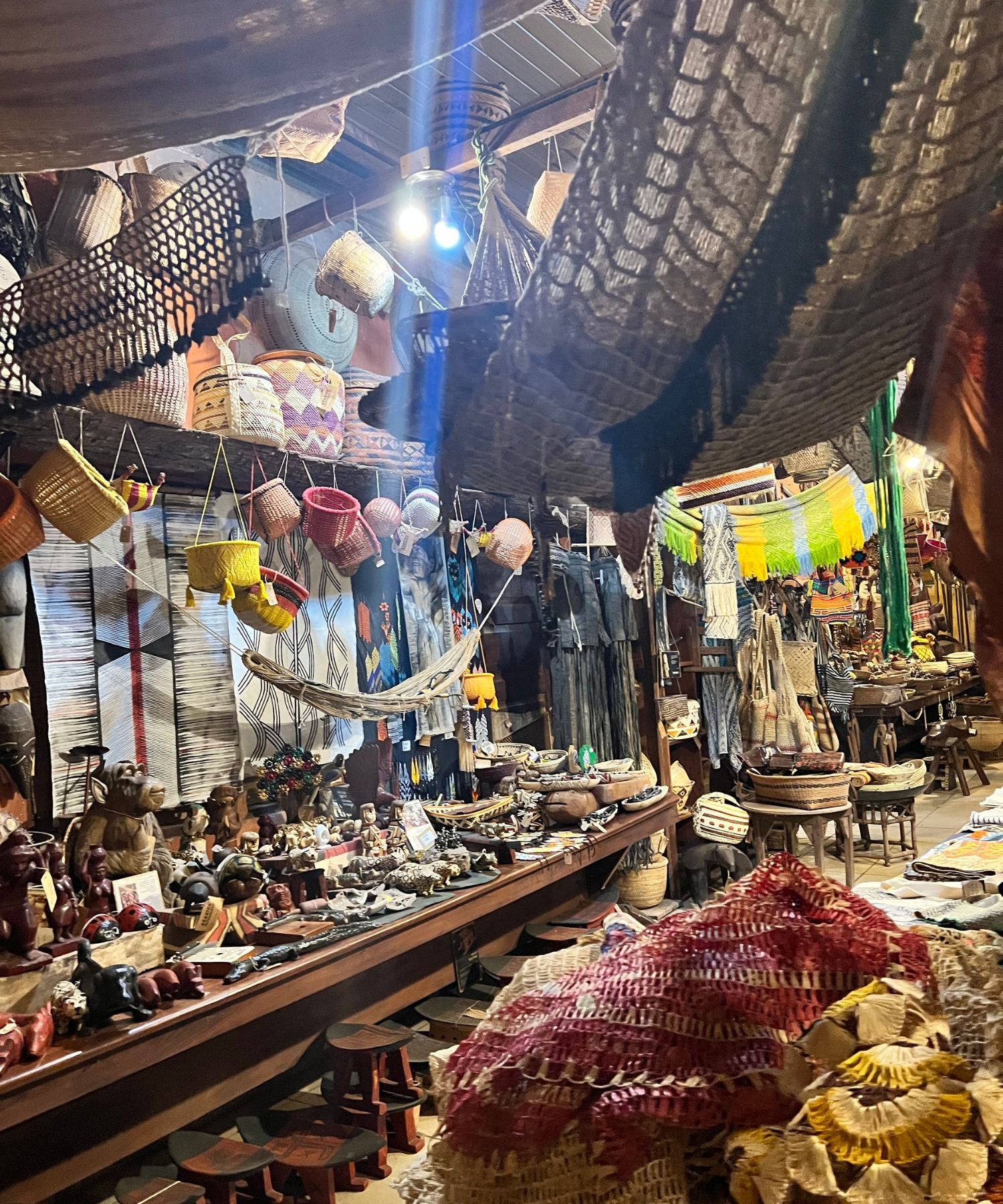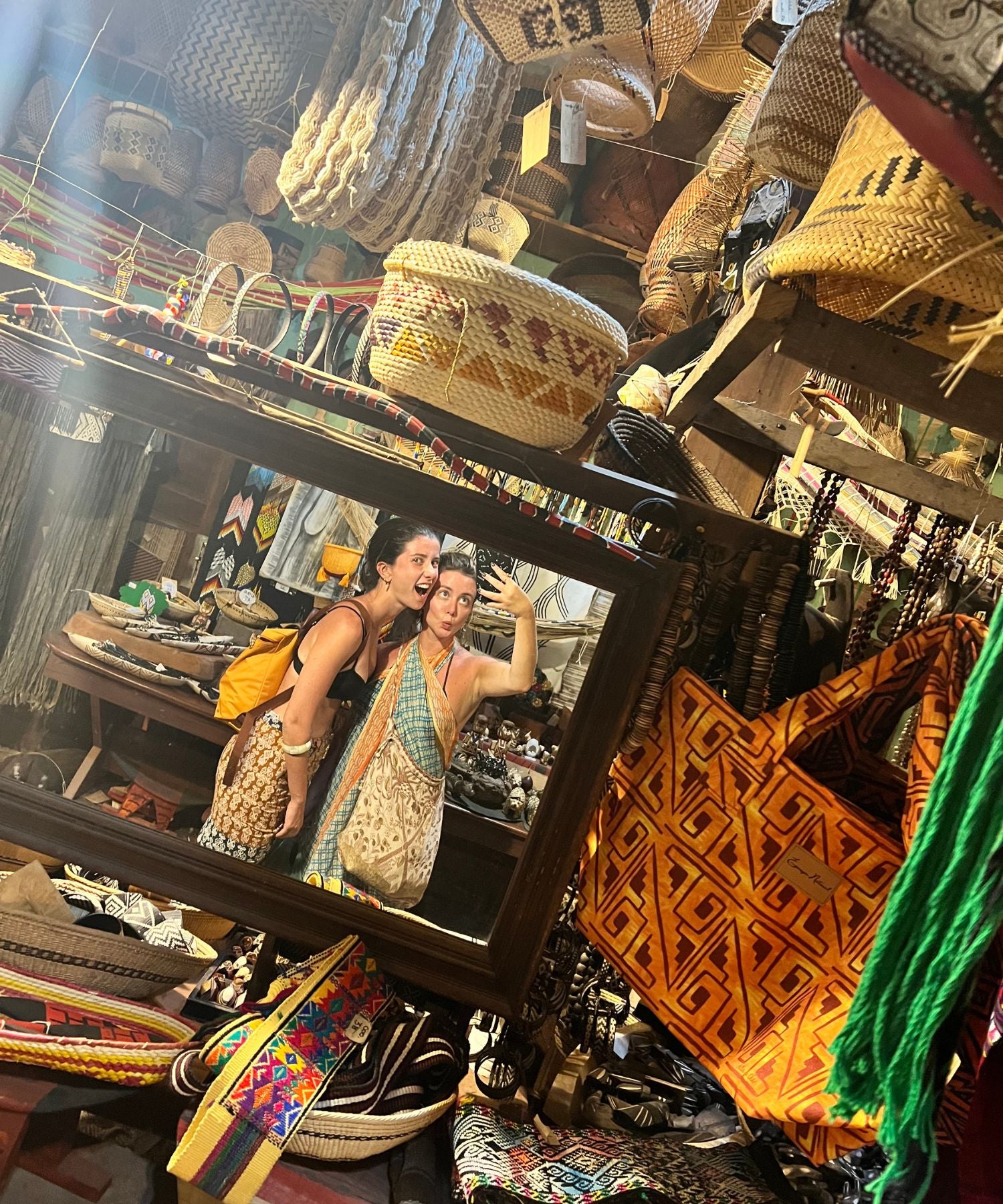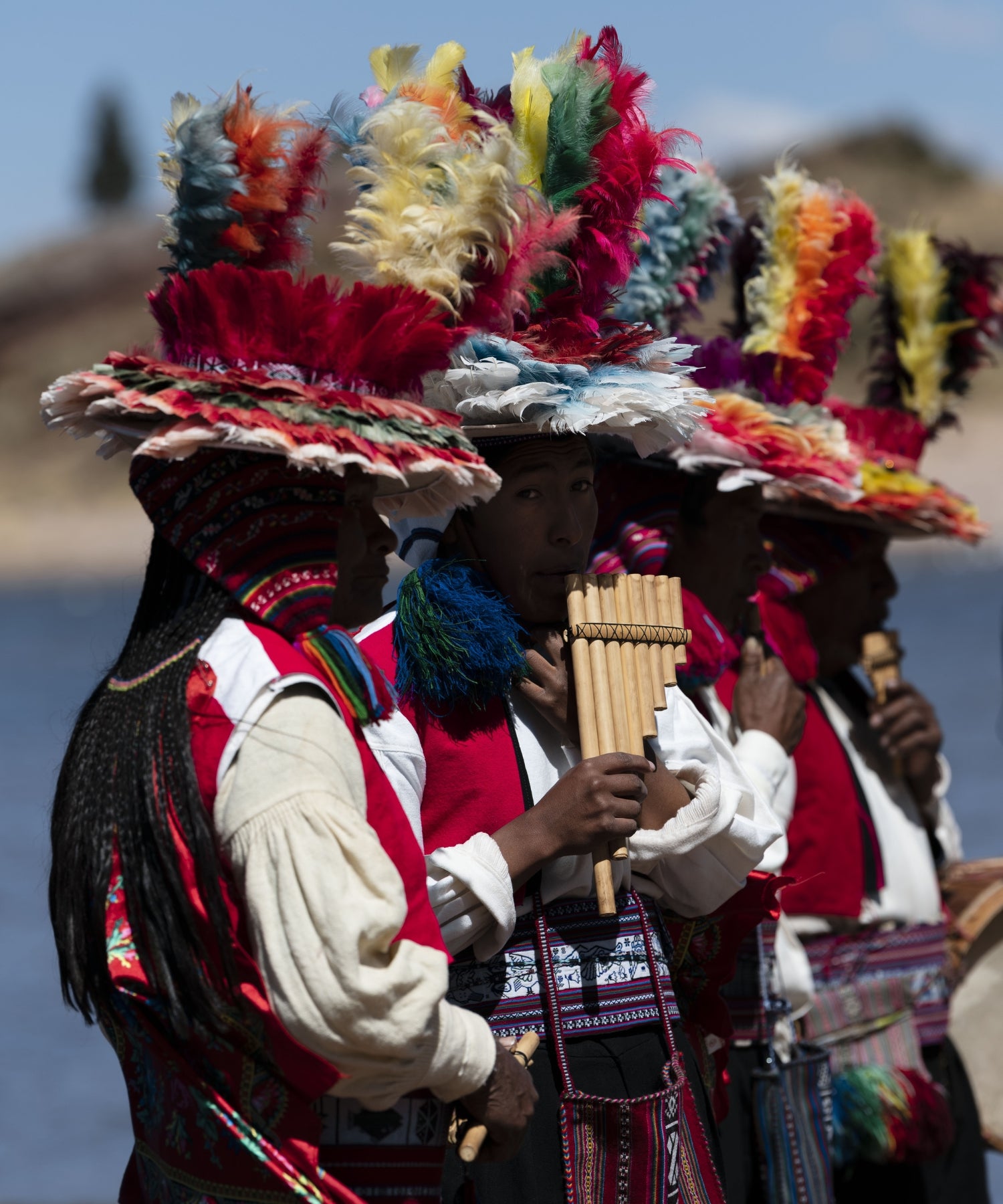Alter do Chão
In December 2023, we were in Alter do Chão for 5 days at the invitation of Vila de Alter Pousada Boutique Amazônia in partnership with Embarque With Us to get to know this little piece of paradise in the Pará Amazon and start a series of collections from our Brazil.
Although I had read and seen many photos of the place, nothing prepared me for what I saw and experienced there. It was, without a doubt, the most incredible trip I have ever taken in Brazil. The cultural immersion we had, the contact with the riverside communities, the sense of importance and urgency we created for the protection of our forests and rivers. It is a unique destination, with exuberant nature and singular beauty, the kind that stays with you, maturing and transforming you long after you return.
Summary
Alter do Chão: 5 nights
The Arrival
We flew from Congonhas to Brasília on the 9:00 pm flight and from Brasília to Santarém on the 12:30 am flight, landing in Pará at 3:05 am on December 12th. We found this flight to be the quickest, despite the time being a bit off. Azul also operates this destination at a better time, however, it has two stopovers: one in Confins and another in Belém.
Arriving at Santarém airport, we were greeted by Mr. Humberto, a very friendly taxi driver who was recommended by Andréa, the owner of Vila de Alter. The journey from the airport to the guesthouse is around 30 km.
Alter is located on the banks of the Tapajós River and is a district of the municipality of Santarém - PA, and has just over 6,000 inhabitants.
Here is Mr. Humberto’s contact: (93) 99141-0322.
The Hotel
We stayed at the charming Vila de Alter Pousada Boutique Amazônia, with just six bungalows and impeccable service, the inn is an oasis of peace, tranquility and great taste in Alter do Chão.
The guesthouse is not exactly in the center of Alter, but it is very close, and the staff is always helpful and can call a taxi when needed. Taxi drivers arrive very quickly and the trip costs on average 20 reais.
They accommodate couples, groups of friends and families. It is possible to adapt the room format with double or single beds and even set up a "family" bungalow with a double bed and a single bed.
The Vila team is a chapter apart, they are very special people. Their care, affection and politeness towards their guests left us enchanted. The hotel does not have a 24-hour service, but there is always someone there to help with whatever is needed. They serve us a wonderful and super complete breakfast with several options from Pará and, in the afternoon, when we arrive from our trip, there is always a snack box with a savory snack, a sweet snack and a juice or tea waiting for us, all very tasty and made in the hotel kitchen. The Vila does not have a restaurant, so for lunch or dinner, the suggestion is to go to the center of town to check out the restaurants in Alter.
The decor is extremely tasteful, everything is very charming, always highlighting local crafts and culture with pieces of indigenous art and riverside references. Each bungalow and space in the guesthouse is named after a species of Amazonian flora; ours was called Piquiá. The guesthouse was built to resemble a trail in the middle of the forest, it is completely integrated with nature, all the spaces are connected by a wooden walkway amidst the vegetation, where you can see agoutis, monkeys, birds and even a sloth. Everything in the village is poetically simple, with great care and affection, designed so that the guest's experience is unhurried, enjoying all the most beautiful things the region has to offer.
Budget your trip with
Embark With Us
All guides were created in partnership with the Embarque With Us agency , which has 40 years of experience in the market and is based in São Paulo and Ribeirão Preto - Brazil .
To quote this itinerary or have it tailored to you, simply click the button below and a travel consultant will contact you shortly.
www.embarquewithus.com.br @embarquewithus
To Do
The Tours
Our week in Alter was organized by Geovani Lobato, one of the best guides in the region, and we recommend him with our eyes closed. We divided the week as follows:
1st day - Arapiuns
We left Alter on a speedboat trip along the Tapajós River that lasted around two and a half hours towards the community of Urucureá, a village of riverside dwellers on the Arapiuns River, a tributary of the Tapajós. The community of Ucureá is home to 83 families, whose main sources of income are ecotourism, fishing and handicrafts.
When we arrived in the community, we went to see the Galerias Project, which transforms the riverside community into an open-air gallery. There are 30 professionals from different areas, including 20 visual artists, from nine Brazilian states and representing the five regions of the country. The project aims to increase the visibility of the community and attract tourists to the region, boosting the local economy.
After seeing the houses of the Galerias Project, we went to the Urucureá dyeing workshop. There, a group of female artisans weave tucumã straw, which comes from the tucumanzeiro, a palm tree from the Amazon region. Using roots, leaves, and fruits such as annatto and genipap, they also dye these strips and, after dyeing them, braid them, giving life to bags, baskets, vases, and many other objects that reflect the indigenous ancestry of the region that extends over generations.
We learned all the steps involved in producing local handicrafts, from harvesting the straw, separating it, dyeing it, drying it, weaving it, and finally producing the final product. It was wonderful to see how this activity transforms the local economy, empowers women and, most importantly, ensures their financial independence. Furthermore, seeing the richness of our handicrafts and the cultural heritage expressed through them is always very special.
2nd day - Flona
On our second day in Alter, we went to Flona - Tapajós National Forest, a journey that takes about an hour by boat. We arrived in the community of Jamaraquá, in the municipality of Belterra, in the morning and met Mr. Dido, our guide through Flona. He was born and raised in the community and knows everything about the forest. He was the one who took us on a 9 km trail through the forest, which goes far beyond observing nature; we learned a lot from the knowledge of the forest people.
We saw incredible species of fauna and flora, such as a century-old Samaúma tree, rubber trees and vines, giant otters and even a maned anteater. The trail passes through dense vegetation, where it is possible to see the difference between secondary and primary forest, but the highlight of the tour is reaching the Igarapé de Jamaraquá to cool off in its crystal-clear waters.
On the way back, we had lunch in the community, a typical lunch with fish, flour, rice and beans with vegetables. After lunch, we went for a canoe ride on the other side of the Igarapé de Jamaraquá to see the igapó forest, a submerged vegetation typical of the Amazon and one of the most beautiful things I have ever seen. Even though we were very tired after 6 hours of hiking, it was definitely worth the trip!
We arrived in Alter, took a shower and got ready and soon went out again for a dinner that we were super excited about. We went to Pirarimbó - the famous Piracaia de Alter with Carimbó - the dinner is an unmissable cultural celebration.
There are several Piracaias in Alter (Pira is fish and Kaia is grilled on the beach), but Geovani suggested Pirarimbó because it is super complete.
We left Alter at 8:30 pm by motorboat and about 10 minutes later, we arrived at one of the Tapajós beaches. We were welcomed with a Carimbó circle - a typical rhythm from Pará - with the entire beach lit up by candles.
We settled in, there were several hammocks and straw mats spread across the beach, and soon the Carimbó dance began with master Hermes Caldeira. Between songs, Hermes told us stories of local folklore, such as the Boto and the Iara, experienced by local residents. In addition to the songs and storytelling, each woman was invited to choose a chita skirt to learn how to dance the Carimbó with the "mermaid" in the circle around the bonfire. Next, we were served Piracaia, fish and vegetables roasted on the grill, salad, Pará vinaigrette, Santarém beans, cassava flour and pepper with tucupi, all served in a gourd.
The food is wonderful and, in addition to the piracaia, there is a bar serving local drinks throughout the night, such as jambu cachaça and huge caipirinhas served in a gourd with great charm.
It was a beautiful experience that cannot be left out of your itinerary. You can book Pirarimbó through their website by clicking here .
3rd day - Vila de Alter
On the third day, we were exhausted from the intense schedule of the last two days, so we decided to spend the day at the hotel to enjoy its facilities and take pictures. Originally, we were going to do this on the last day of the trip, but we thought it would be great to take a break in the middle of the trip because the tours are tiring. Since it was a trip that combined leisure and work, we ended up spending the whole day at the hotel, but for those who want to take a day off, I recommend spending a few hours in Vila to enjoy the hotel and then go enjoy a beach at your leisure.
4th day - São Marcos and Coroca
On our fourth day, we went back to Arapiuns to visit the São Marcos community and learn about the flour making process. Flour making is a traditional practice in the Amazon and is part of the culture and subsistence of several riverside communities. The process involves several steps, from the cultivation of cassava to the final production of flour.
The cassava used in this flour process was wild cassava, this variety has a high content of hydrocyanic acid, a toxic substance. In this process of preparing the flour, its toxic substances are removed, making it safe to consume.
Step 1: The cassava roots are peeled to remove the outer skin, then grated to form a paste.
Step 2: The cassava pulp is pressed to extract the liquid known as manipueira. Manipueira is often used as fertilizer or for other purposes.
Step 3: The cassava dough is spread out to dry in the sun.
Step 4: The dry mass is sieved to obtain a fine texture, the resulting flour is toasted to remove remaining moisture and add flavor.
After our experience with the flour mill in São Marcos, we took a boat to the community of Coroca, on the left bank of the Arapiuns. The arrival at the beach in front of the community was a little different than usual due to the low water level of the river, so we stopped the boat a little further away and continued walking for approximately 20 minutes.
The highlight of the community for us was the wonderful lunch at the Coroca restaurant, where they serve homemade food with the main fish of the region such as tambaqui, matrinxã, pirapitinga, pirarucu, surubim and filhote accompanied by salad, white rice, beans from Pará (with vegetables) and regional farofa, as well as fresh cupuaçu juice.
The community lives off tourism, crafts and beekeeping. In addition to having lunch there, we went to see the breeding of Quelonians, the "Amazon Turtles", which live there in Coroca Lake. We got on a non-motorized raft in the middle of the lake and there we were able to see and feed them. There are so many of them and they are huge!
Next, we went to the Meliponary and the Apiary to see the breeding of Jandaíra bees (stingless) and stinging bees. At the end of the tour, we were able to buy honey from each of them, as well as see local handicrafts, made with woven tucumã straw.
Although it was an interesting tour, we didn't love it. We would trade it for an afternoon enjoying the beaches of Tapajós.
We returned to the village, took a shower and from there went to the city center for dinner. There, life happens around the square, with the Nossa Senhora da Saúde Church, restaurants and stalls selling all the local delicacies.
We had dinner at Ty Comedoria e Bar, one of the best restaurants in Alter. It faces Ilha do Amor, on the banks of the Tapajós River, in a charming environment, with young people, good drinks and a menu with a Tapajós soul.
After dinner, we went to get ice cream in the square. The flavors we tried were cupuaçu and açaí. I would say they are different, but if you're there, you have to try them.
5th day - Jari Channel
On our fifth and last day in Alter, we went to visit the Jari Canal and Dona Dulce's water lily garden. We visited Alter in the second week of December, and although it is a great time to enjoy the beaches in the region, the fact that the rivers are low makes some tours impossible or difficult. Two of them are the Jari Canal and the Preguiças Trail, tours that are best done together due to their proximity.
Geovani, our guide, had already warned us about the difficulty of doing them. It would be a very long walk under a scorching sun - there is practically no shade along the way. During the rainy season, the boat stops in front of Dona Dulce's restaurant, but this December we had a long walk to get there. Unfortunately, her garden of water lilies was quite empty due to the time of year, we saw only a few, but during the rainy season it gets really crowded, we saw the photos and it is wonderful.
Despite everything, we really wanted to go to the restaurant to try the entire menu made from the Victoria Regia and meet Dona Dulce, almost an entity in Alter do Chão.
She realized that fish feed on the plant and decided to try her hand at cooking by creating dishes made from water lilies. There we ate quiche, onion-free vinaigrette made with the stem, chips made from the plant's fiber, pizza dough and pickles made from the stem as well, as well as tempura with palm oil sauce. Popcorn made from water lily seeds and chocolate-free brownies made from crushed seeds, French toast made from the stem and jelly made from the flowers are all incredible and the dishes are surprisingly good.
All of these dishes were just appetizers to whet our appetites. After Dona Dulce, we went to the Casa do Saulo restaurant, considered one of the best restaurants in the region. On our outbound flight, I flew with Beto, a chef born in Barretos who now lives in Alter and runs the restaurant. He welcomed us there and curated the typical dishes that we had to try: we had tacacá, a tapajônico trio of maniçoba (tapioca cubes with cheese and spicy cupuaçu jelly, Piracuí dumplings with smoked pirarucu mayonnaise and fish fingers with açaí jelly) and finally, local açaí with tapioca flour. Everything was delicious. In addition to the food, the restaurant is super nice, with a beautiful view of the river. We highly recommend including it in your lunch itinerary.
When we arrived in Alter, we went straight to the center to check out some stores that we hadn't had time to visit yet. You can find the same or similar products in almost every store, so we went in and browsed without looking at the names, but the most special, and also expensive, is Araribá - it's crazy!!! - a paradise for those who love handicrafts and ethnic pieces. Go there with time because it's big and check out the stores around it too, because, as I said, you can find similar pieces at better prices.
General Tips
Alter is a year-round destination, however, each time of year has its own particularities. We went in December and it was the low season for the rivers, which means more sandbars and more beaches. During the high season, the sandbars disappear, but it is possible to do tours that we did not do, such as the one to Floresta Encantada. Geovani suggested that we return in August next time, because it is a transition month, so it is possible to enjoy both the beaches that are appearing, as well as tours such as Canal do Jari and Floresta Encantada at their best.
We didn't have time to go to Praia do Amor, one of the city's landmarks. The tip is to go during the week, Saturdays and Sundays are very crowded there. The beach hut Dulce's Bar is a great place to sunbathe and swim in the river while drinking a cupuaçu caipirinha and eating pirarucu fish and piracuí fritters.


